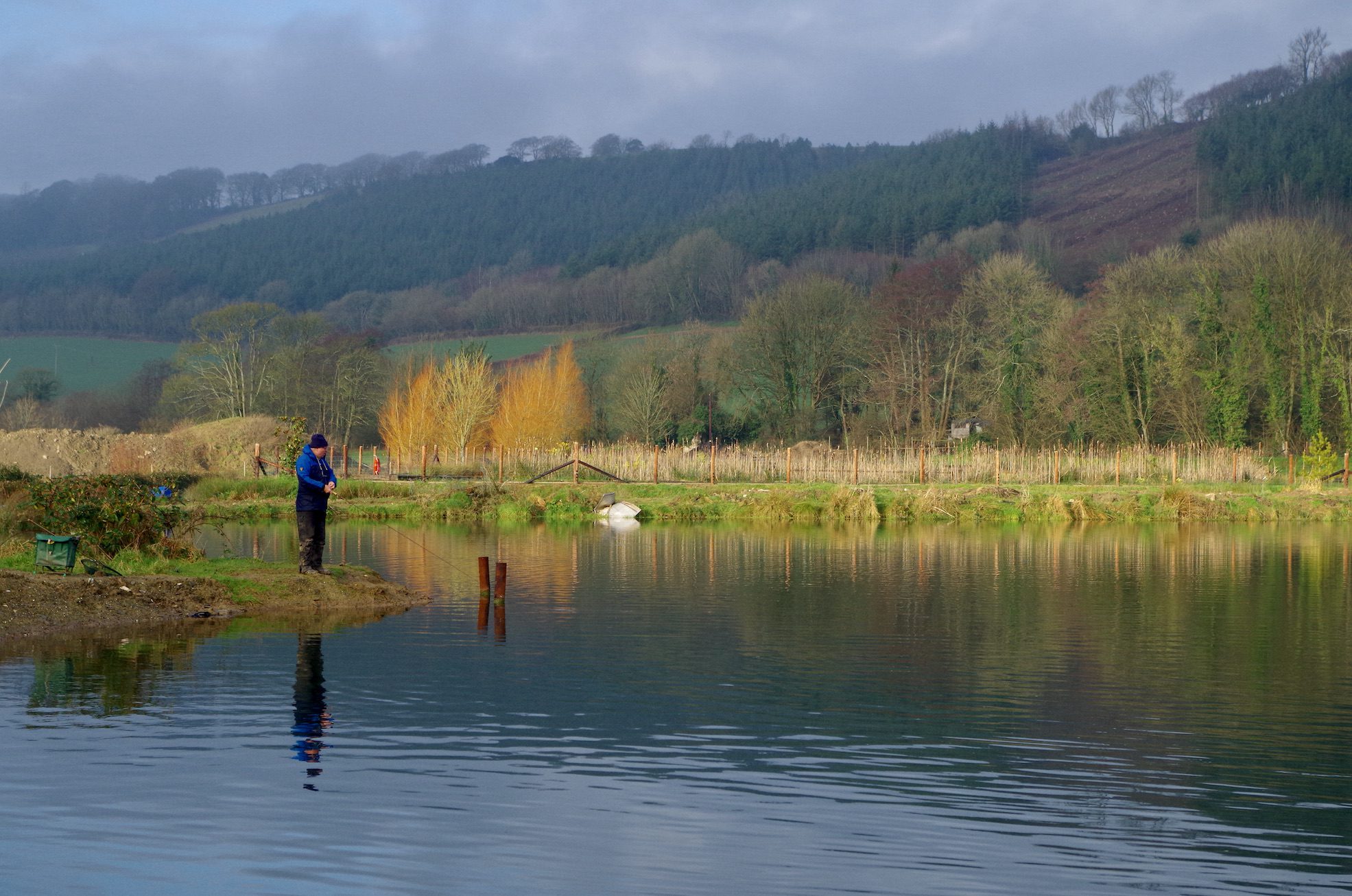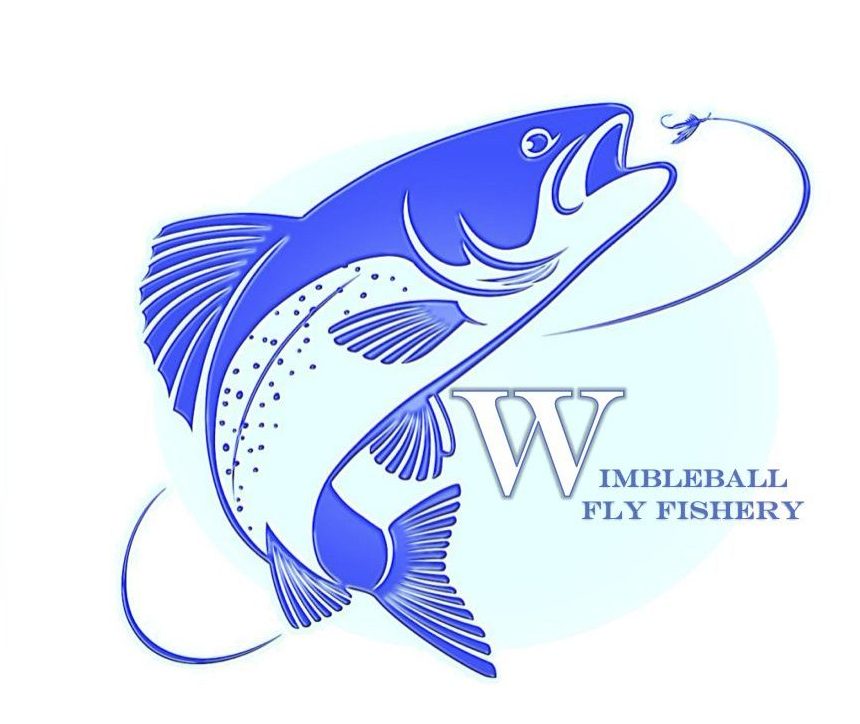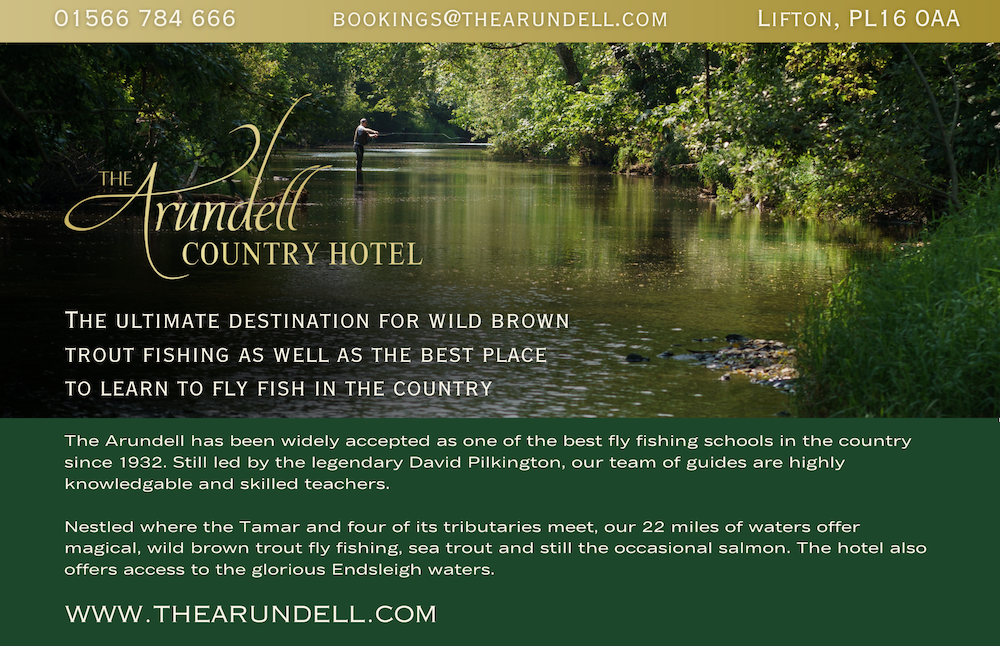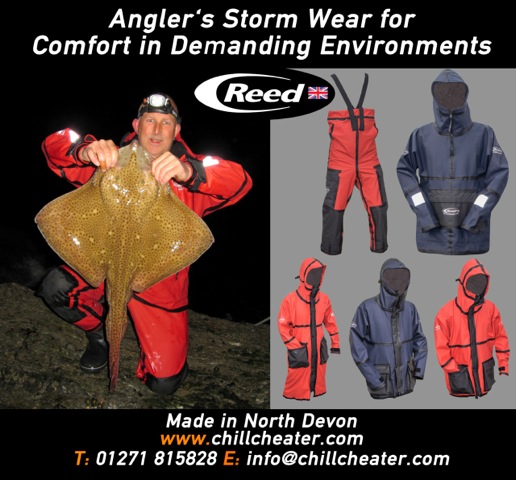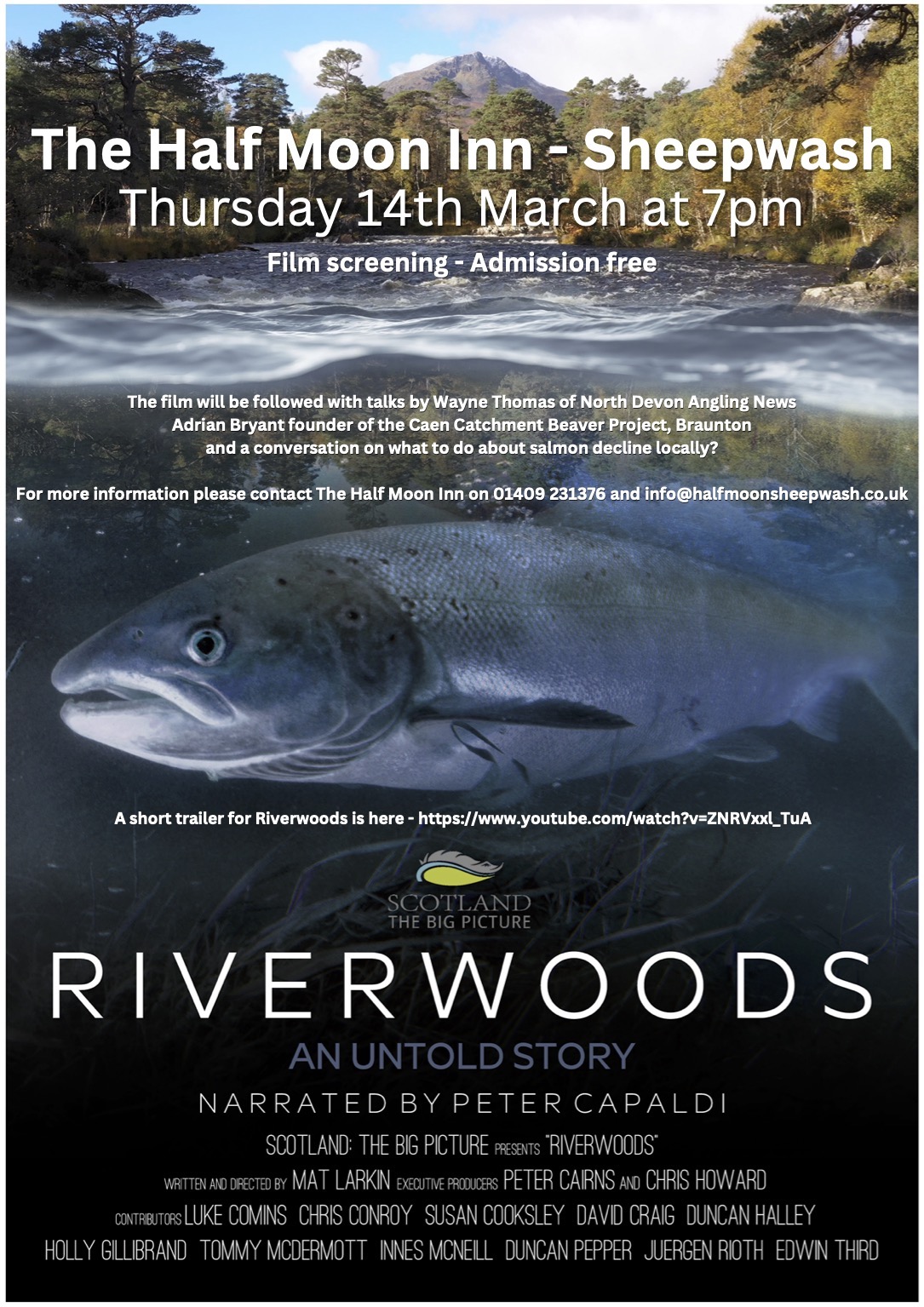
Celebrating a new start – Salmon Season 2024
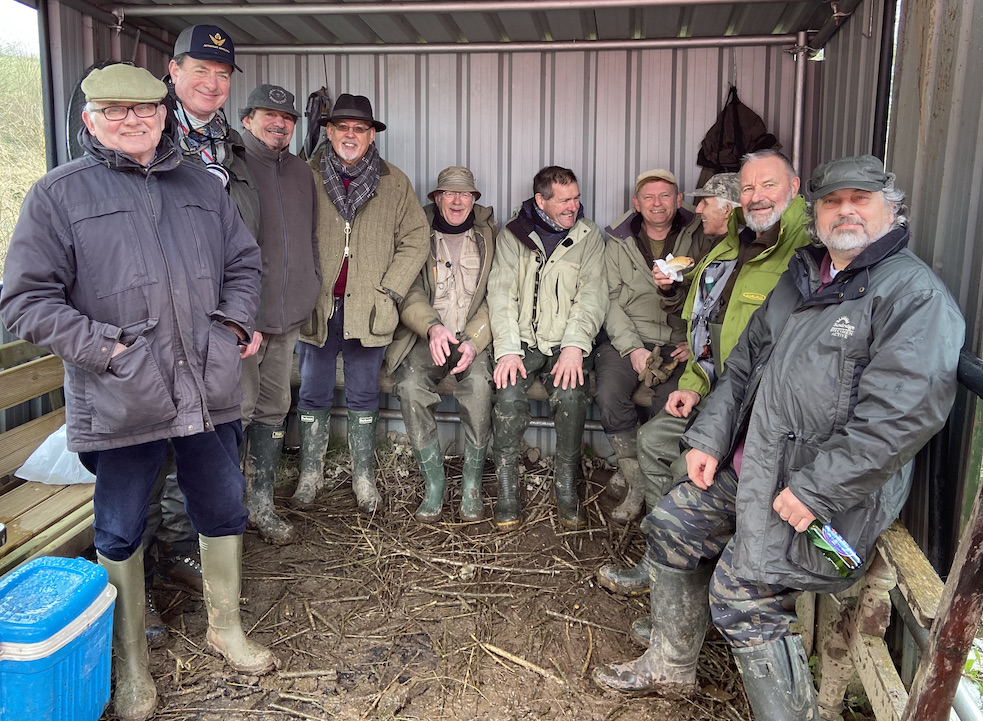
On March 1st 2024 members of the Barnstaple & District Angling Association assembled beside the River Taw celebrating both the start of a new season and the re-opening of the clubs fishing hut.
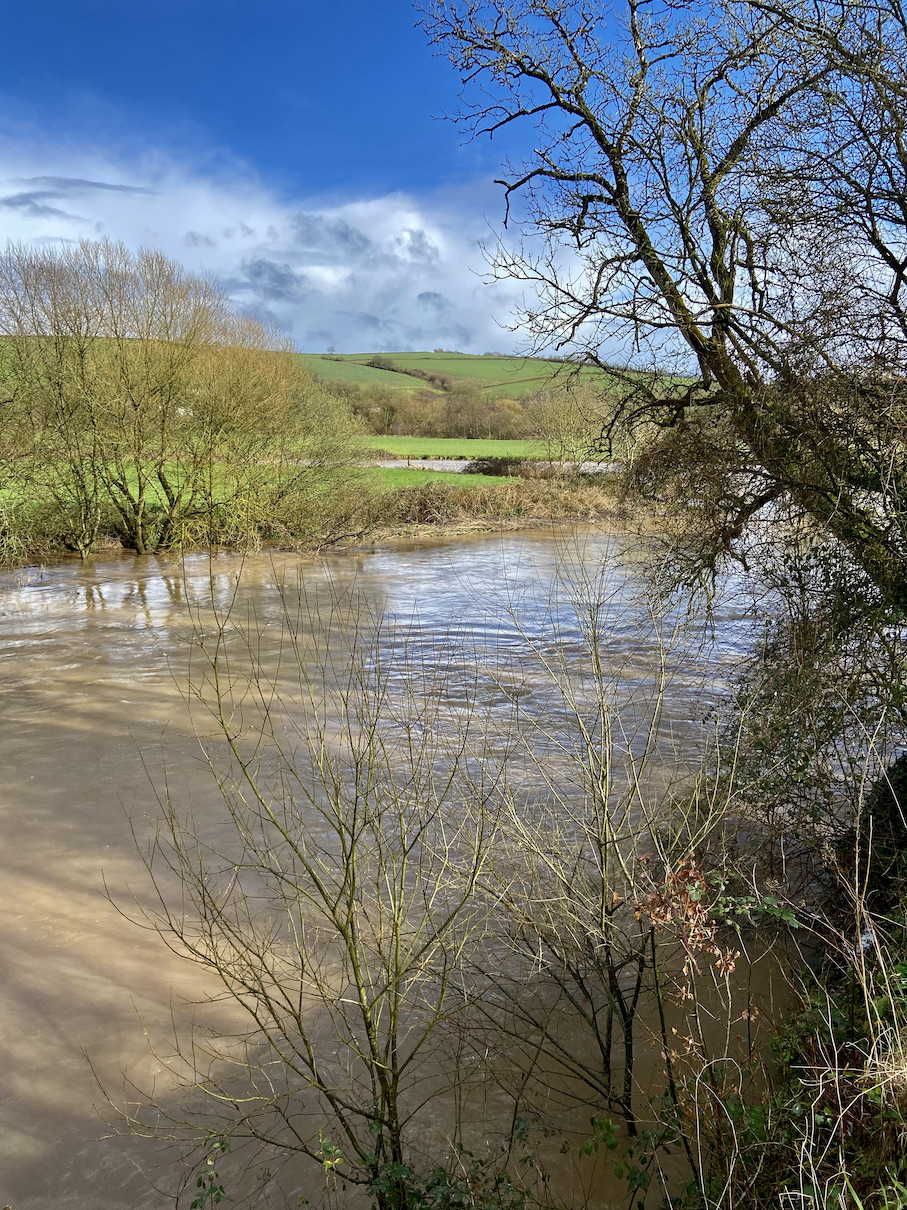
Some members had even brought their tackle with them despite the raging brown torrent that was racing towards Barnstaple the estuary and its eventual meeting with its sister river the Torridge at Instow.

As I walked to the river I savoured the birdsong as blackbird’s delightful tune filled the early Spring air. Primroses, wood sorrel, celandines and other fresh green shoots of spring were evident in the roadside hedge.
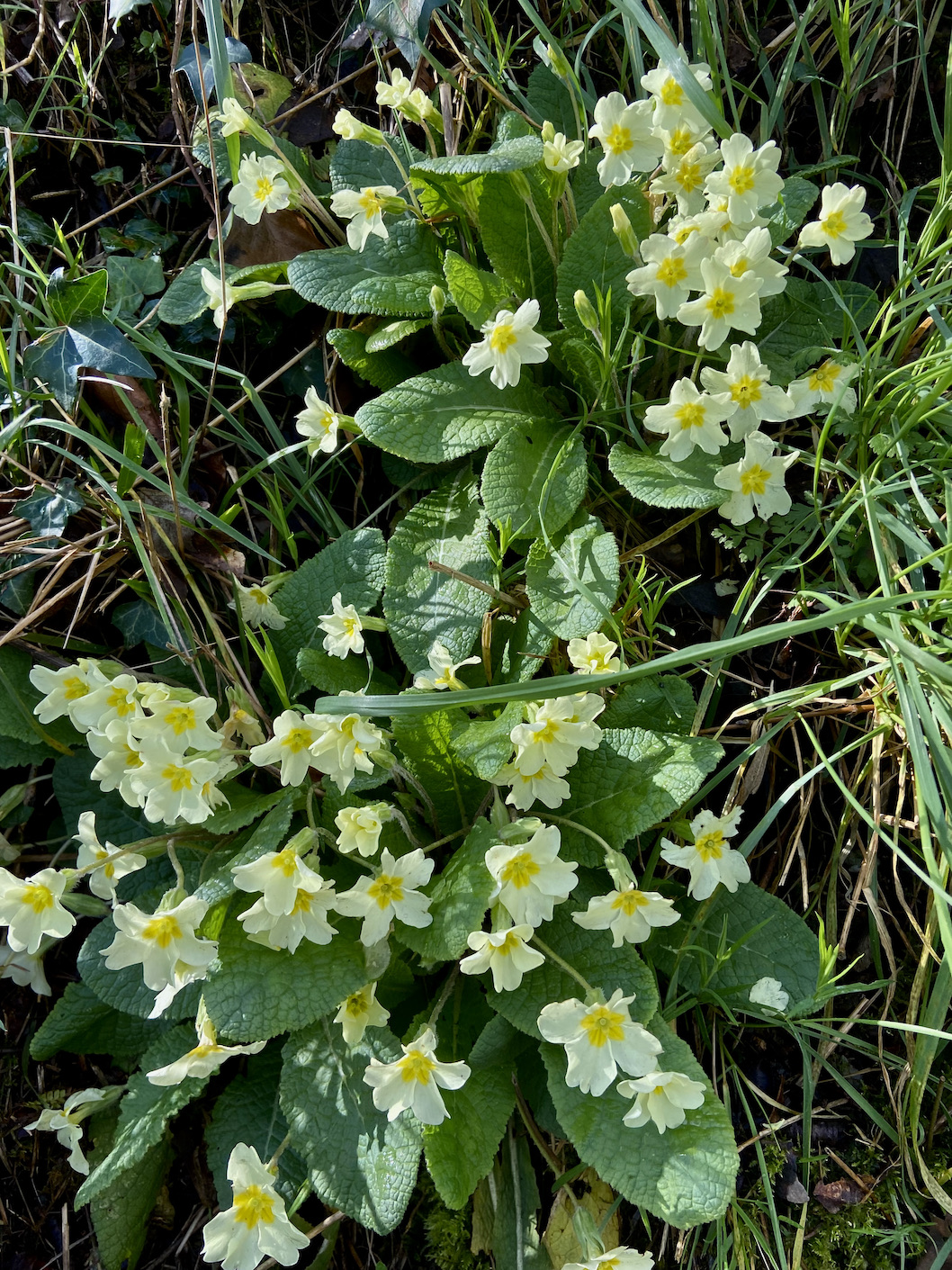
I have a wealth of memories regarding the old fishing hut and you can read my account of a visit to the old hut fifteen years or so ago at the end of this article the account can also be found in my book I Caught A Glimpse that can still be bought at the Little Egret Press.
There is something reassuring about the return to the river at the start of each season. There is that eternal optimism of the returning angler. For despite the constant decline in salmon numbers and concerns about water quality there is a resilience in nature.
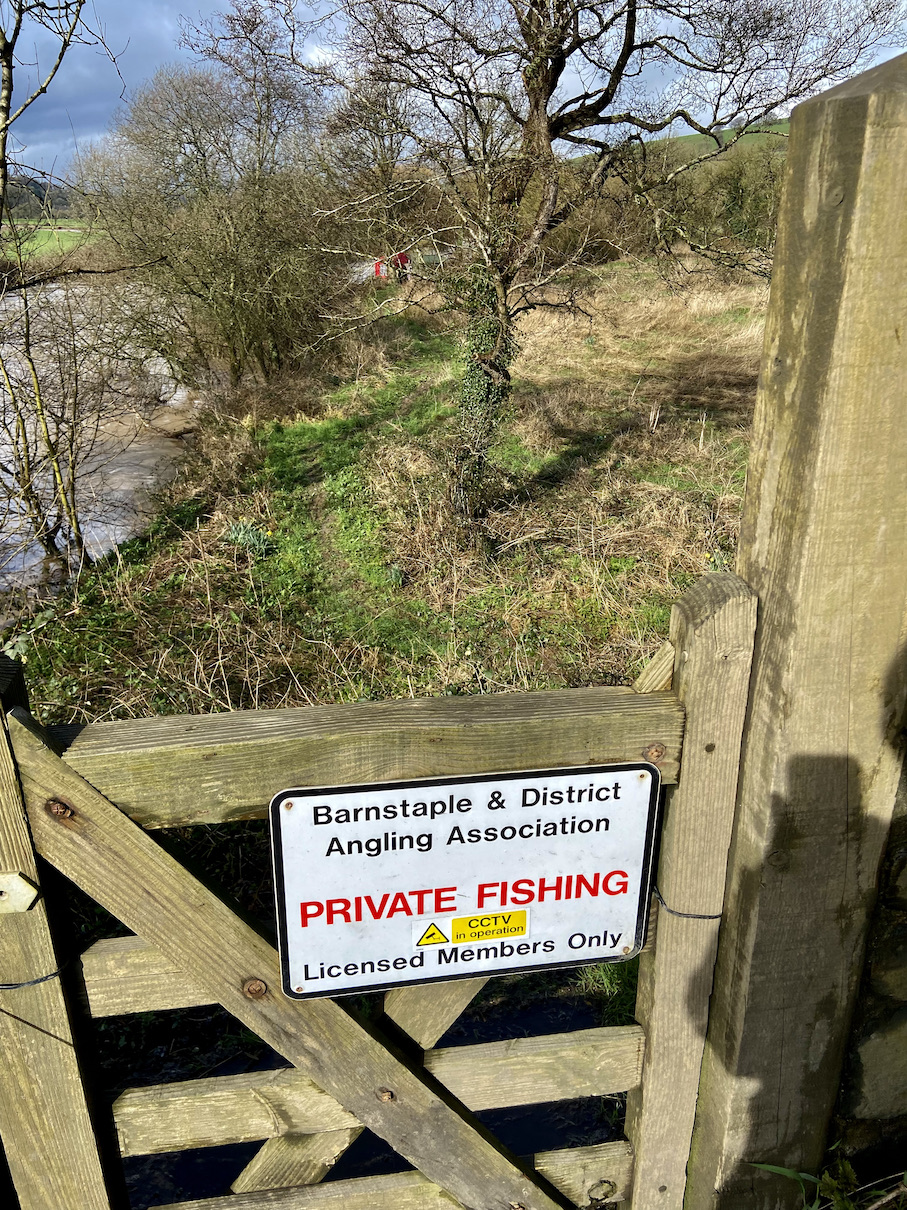
I negotiated the road bridge and headed down the familiar fisherman’s path to the old hut. A bright red gazebo seemed slightly surreal erected at the front of the newly refurbished shelter.
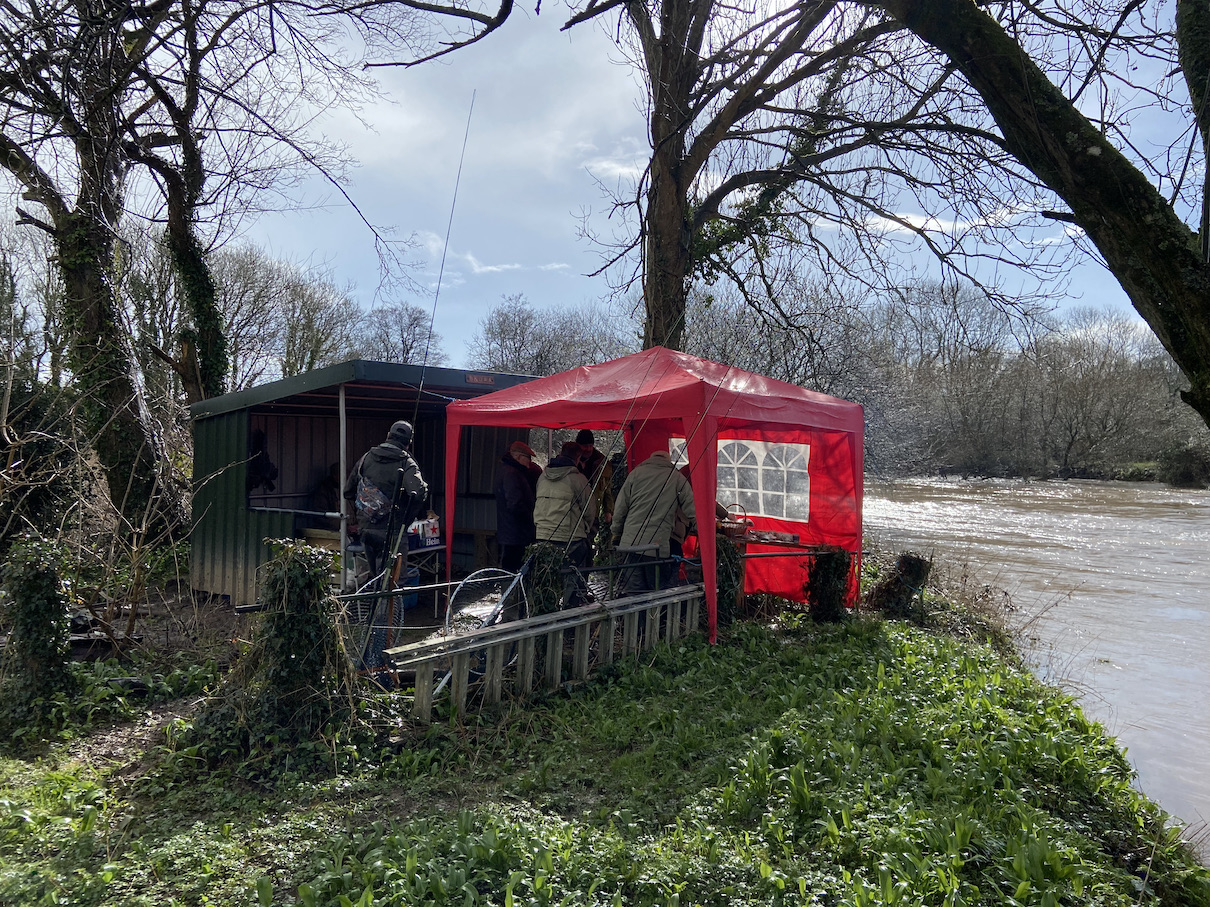
It was good to hear cheery voices as I approached and I smelt the smoke lifting from the BBQ. There was a cheery greeting from fellow members and a welcome hotdog as talk of the new season and past adventures did the rounds.
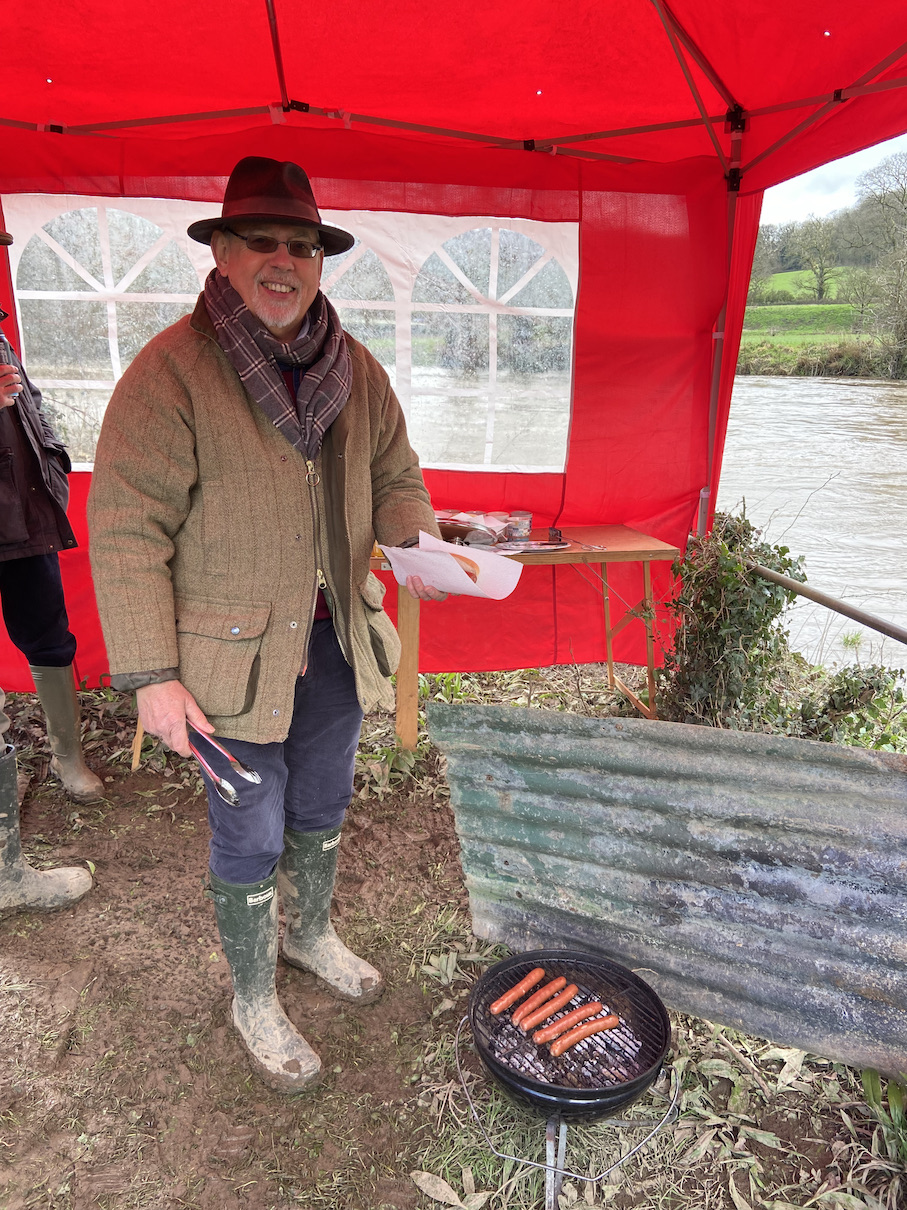
Water quality was high on the topic list as we chatted about the council meeting held at Petroc college a few days before. All agreed that it was good to place the state of our rivers higher on the political agenda. The integrity of our local MP and local water companies was discussed but I will steer clear of politics on this platform!
The jovial camaraderie of the assembly had a touch of ‘Last of the Summer Wine’ or ‘Dads Army’. Don Hearn the club river keeper brings a refreshing air of optimism and whilst he acknowledged the dwindling salmon numbers compared to the past he also talked of the joy of club life on the river bank.
Club Chairman John Webber declared the hut open with the ceremonial cutting of a green ribbon that threatened to disintegrate in the wet conditions.
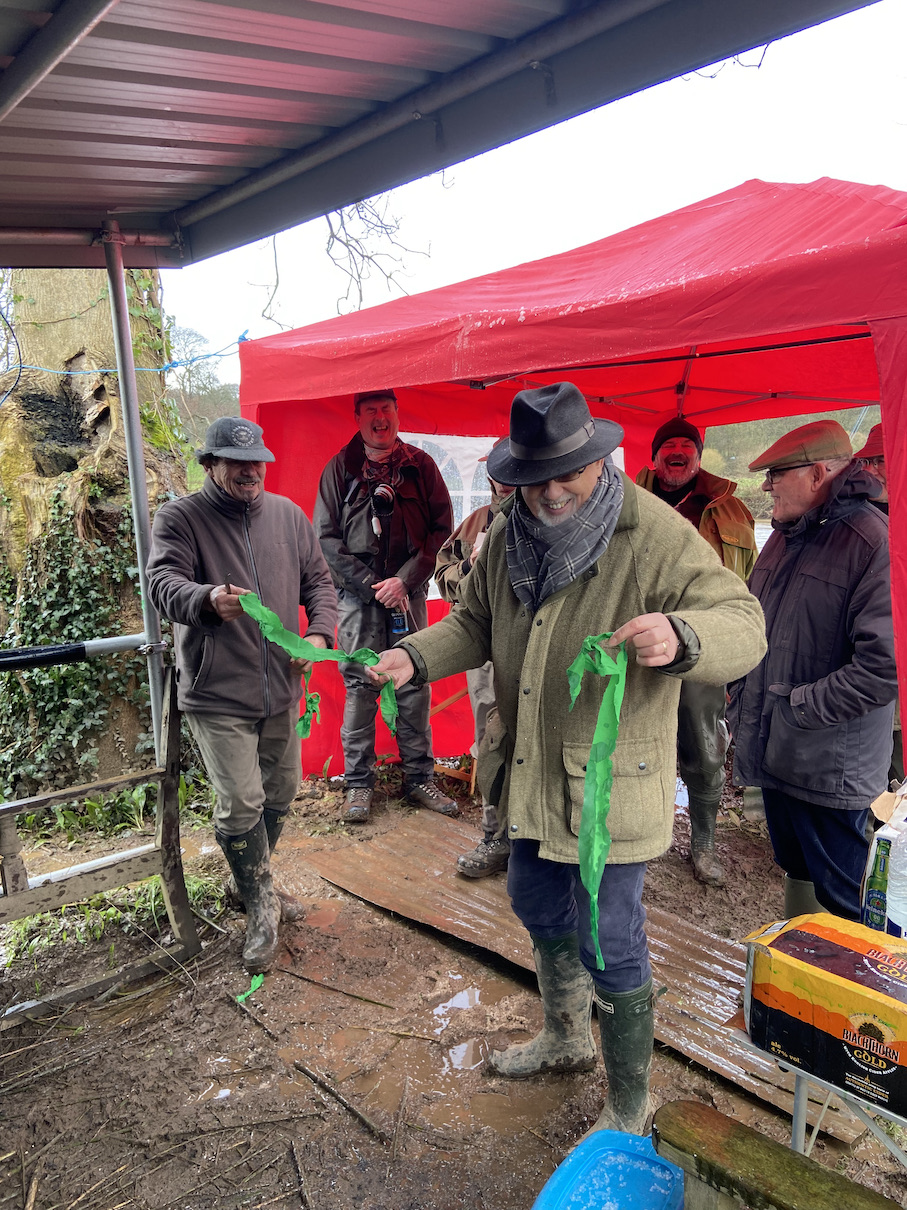
Dark clouds and a ferocious hail storm failed to dent the optimism of those gathered and I left with joy in my heart for a new season. The smell of wild garlic lifted from the ground a pleasing scent heralding the onset of spring and warmer days ahead.

When I wrote of the old club hut a decade or more ago I was saddened at its demise. Today the old hut and spirit of the angling brethren had risen like a phoenix bringing optimism for the future. It is my hope and fellow club members hope that the rivers problems will be solved and that a new generation of club anglers will continue to gather memories as the rivers eternal flow continues.
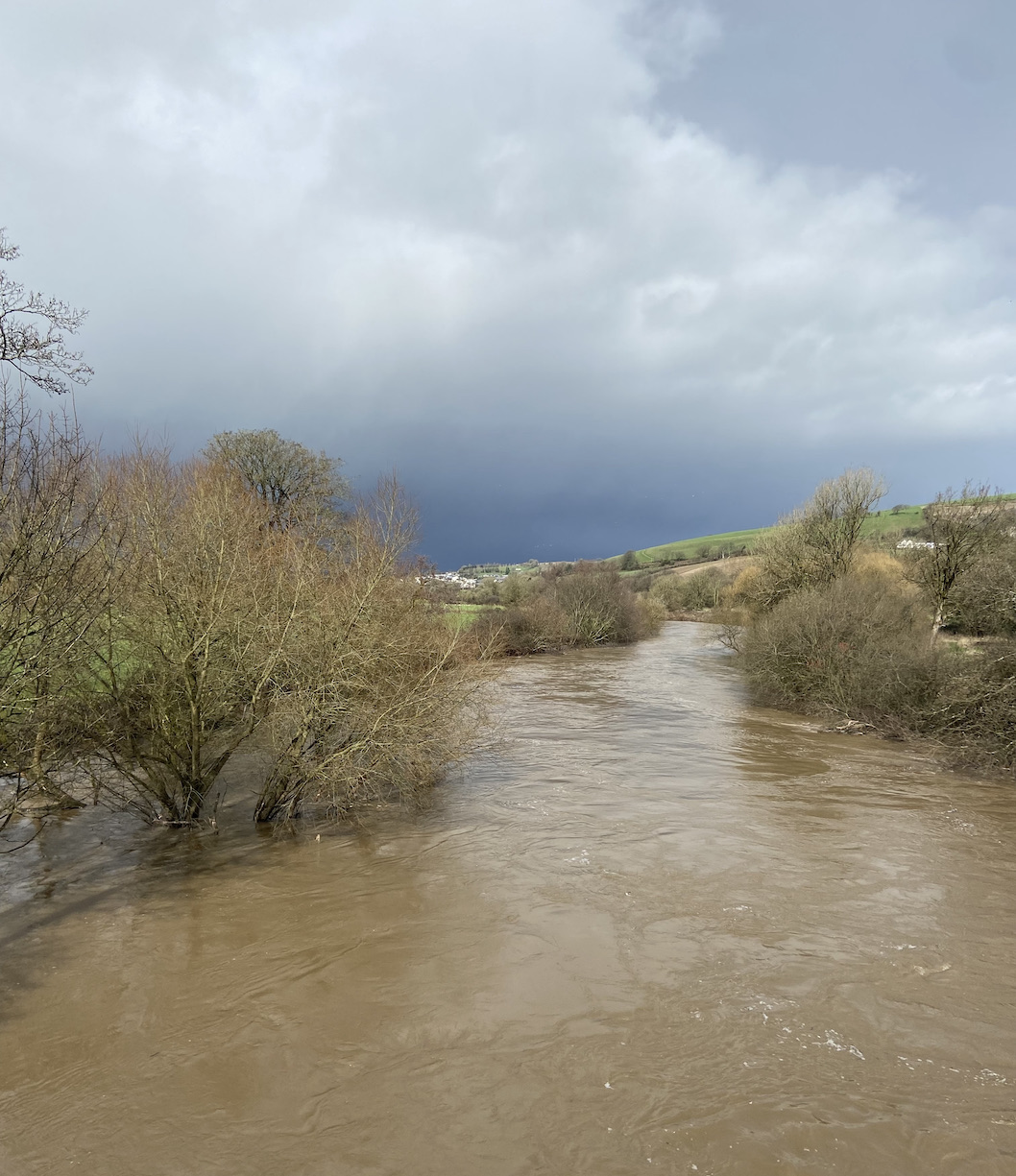
I have just finished reading a book about the Chalk Streams of Southern England. ‘The Lost World Of The Chalk Streams, by E. A. Barton tells of an enchanting riverside world between the wars. A selection of atmospheric black and white images capture a bygone age. There are extracts of prose that bring poignancy and inspiration as I write this and look back over fifty years beside the Taw.
The Test In August – “The season has turned and like the first grey hairs of middle life, signs of approaching age cannot be overlooked.”
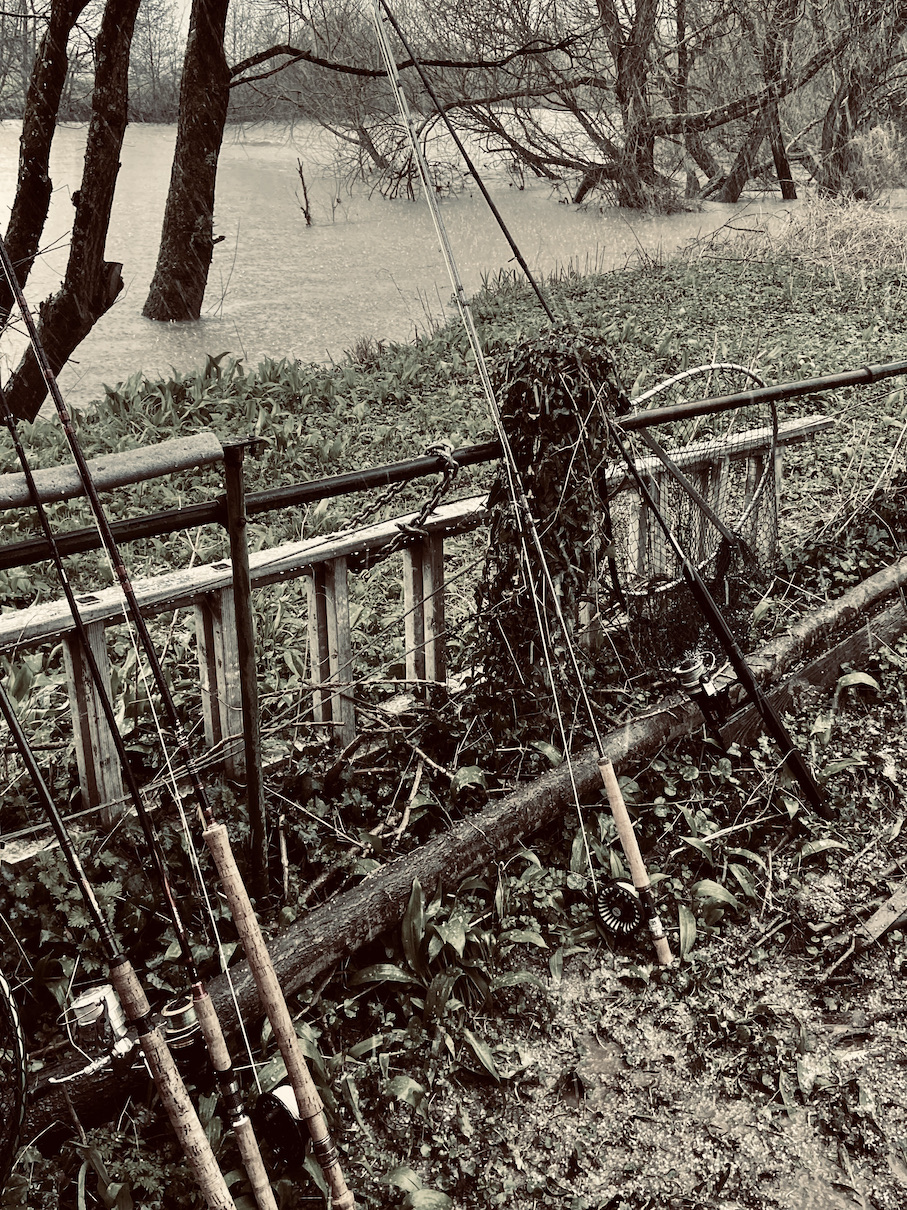
“The enjoyment derived from a day’s angling should never terminate with the day but should linger in the memory like a pleasant taste, to be reconstructed with but the smallest effort of will at times when there is little else to distract. Over the fire on winter evenings. When one’s book is finished, or with a friend in retrospective mood, one reverts back to those days spent together by open loch or quiet river. The habit of visualising accurately a picture of the surroundings of some specially interesting incident at the moment of its occurrence is one well worth cultivating. After a time it becomes so reflex and automatic that it is easy to recall vividly. Even to the smallest detail, the passage of some memorable event. Such a habit becomes a priceless possession, for by its aid can be conjured up, with photographic accuracy, a collection of moving pictures of everlasting delight. So that when the afternoons of life are beginning to draw in, and the wheel creaks at the cistern, that habit cultivated in youth becomes an ever delightful resource by which one lives again with little less than reality the golden experience of the past
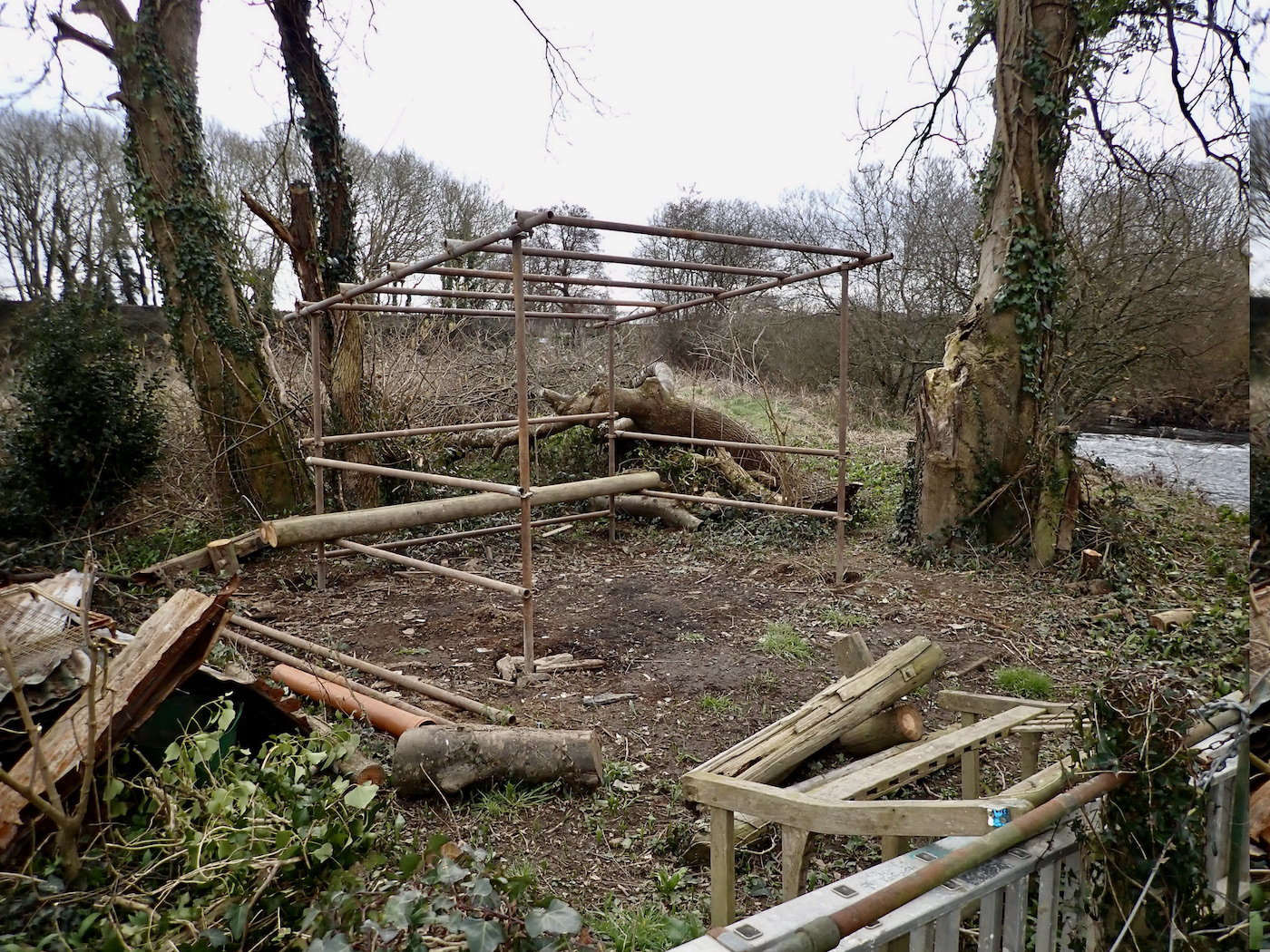
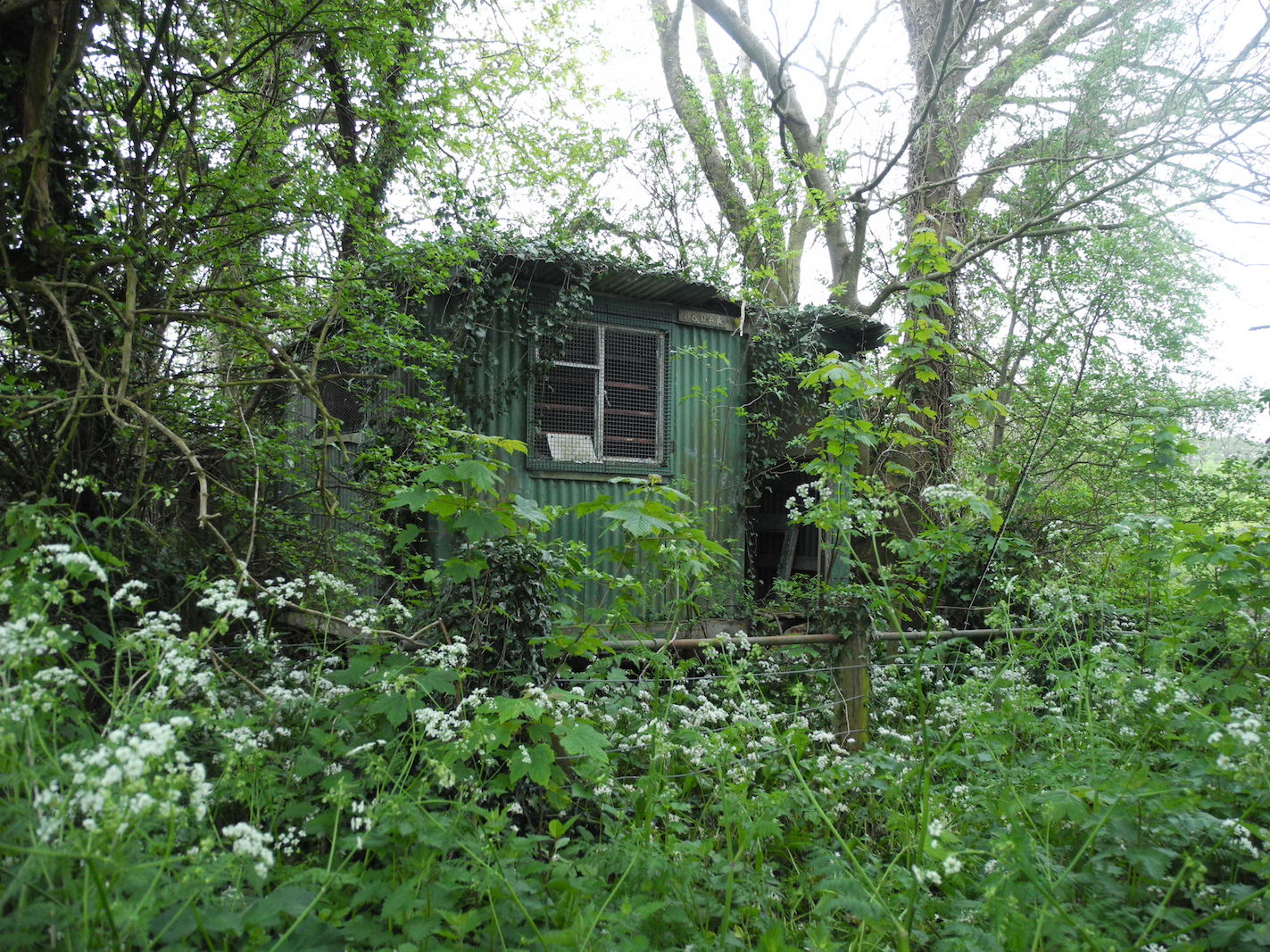
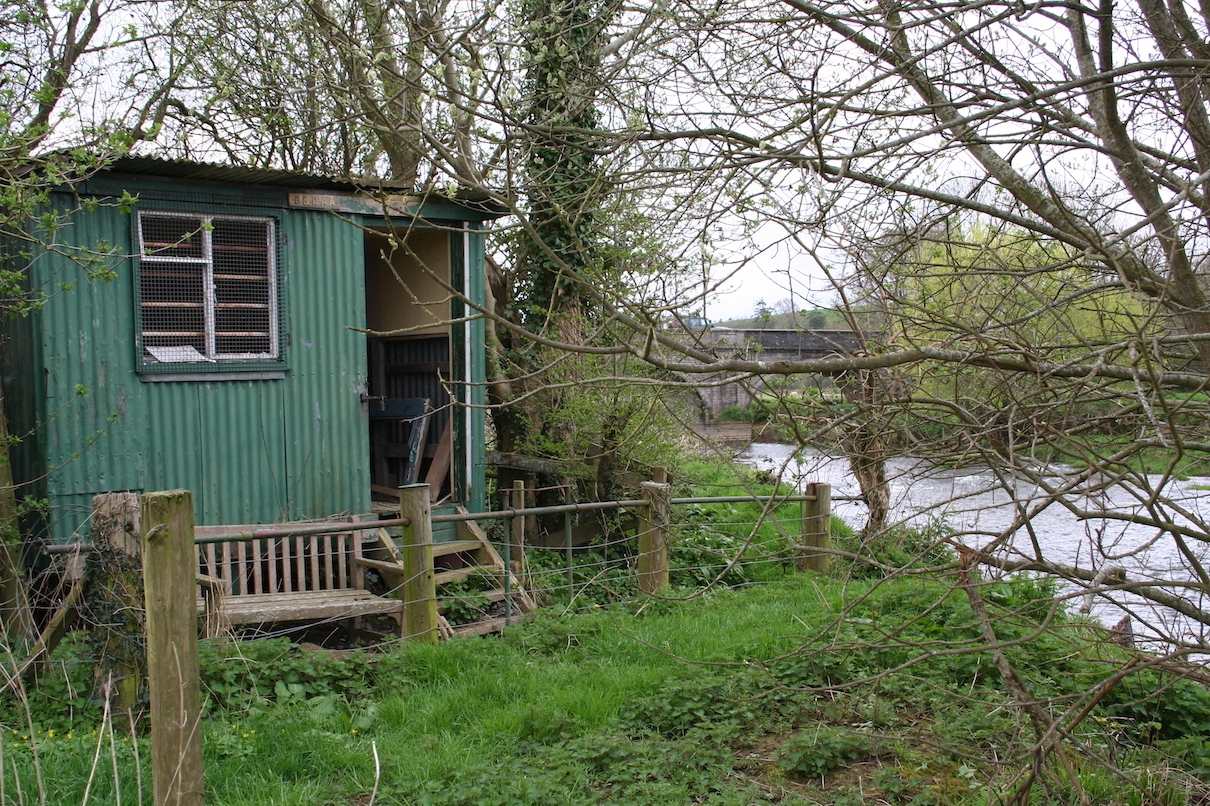
I stopped on the bridge as always to peer into the river below. The sun shone and the river took on that blue green translucence typical of springtime. A few martins and swallows swooped above the river seeking nourishment following their long flight from far off lands. After a brief survey of the pool I moved on and came to the old gate that leads to the river bank.
The gate hung partly unhinged, it’s fastening asp broken, a few bits of litter caught my eye discarded by some ignorant motorist. A problem that blights our countries hedgerows tarnishing our land with an urban feel, continuing down the steps I glanced at the old fishing sign, rusting and grimy, the clubs name still present above the words, “Private Fishing Club Members only”. The pathway beside the river had always been well trodden at this time of year (Early April) yet now it was partly grown over. Celandine flowers brightened the waterside meadow with their bright yellow hues. It felt good to be walking the river bank again after a long break but strange melancholy feelings drifted into my being. I glanced at the old corrugated fishing hut its door was open, someone was about I thought, tidying up or fishing somewhere down stream.
My club membership had long since lapsed and I was heading to fish the free water a hundred yards or more downstream. I had fished this section of river heavily twenty five years ago hoping for a silver spring salmon but had visited rarely over recent seasons. However a river is like a long lost friend familiarity returns quickly and certain things retain a core character. The constant flow of a river towards the sea has always given me an almost spiritual reassuring sense of stability. A feeling I had always treasured each spring as I trod the banks rod in hand hopeful of one of anglings greatest prizes, a fresh run silver salmon. The grass flourishing, buds bursting into life on riverside trees and spring birds filling the air with song, migrants returned from a long cold winter, a sign of the coming warmth of summer.
I had very little time today just a grabbed moment from life’s busy schedule no time to fish methodically, just a few random casts into favourite lies. I remember long ago seeking a salmon a prize that seemed unattainable. Eventually after many days by the river I had tempted a salmon, what had seemed so difficult I realised was really quite easy. You just had to be in the right place at the right time with a little good fortune. Salmon are a perplexing fish, totally ignoring all offerings one minute then suddenly erupting from the water to seize your bait, lure or fly with an unbelievable determination. After catching that first salmon an angler will forever be able to cast in hope for he believes in the impossible. This faith remains forever fuelling the desire for cast after cast.
I climbed down the river bank entering the water above a sweeping bend in the river. An old tree stood, its roots exposed from constant attack annual winter floods. Beneath the tree was a favourite lie that had held many salmon and sea trout over the years. I waded out into the river, relishing the feel as the cool water pushed against my legs. I extended my fly line above the water and dropped a bright orange Ally’s Shrimp fly near the far bank. I allowed the fly to swing tantalizingly across the flow, took a step downstream and repeated the process. Many times in the past I had seen salmon and sea trout leap from the water at this spot. I hoped to see one now, I really didn’t need to catch to glimpse the prize would suffice.
Strange really, since the introduction of catch and release in the early season I have lost much of my determination to seek salmon. I always used to relish taking that first fresh Springer home to enjoy with new potatoes and lashings of butter. I regularly fish for a wide range of species and return ninety percent of the fish I catch. I have no problem returning a coloured salmon in the autumn but I somehow struggle with returning a bar of silver sea liced salmon. I often think of Hugh Falkus’s comments on catch and release and his views that it was somehow wrong. Somehow I feel he had a point there is something undignified in toying with a fish so magnificent as the Atlantic salmon. Perhaps I just don’t like being told I have to return the fish, I remember catching a well mended Kelt several years ago. It had inhaled the Mepps spinner to the back of its throat and was bleeding profusely. I gently returned it to the river, to my horror it keeled over and drifted away to die. How would I feel if this happened to a prime fresh run fish?
This leads me on to another restriction that has been imposed to preserve stocks. In the early season I and most other anglers used the spinner to fish for salmon. A Mepps spinner or Devon Minnow was cast into the cold waters and retrieved slowly its throbbing reverberated through the line to the rod giving a physical transmission between angler and river. At any moment there was the anticipation of the electrifying take as a bar of silver attacked the lure. I fully support the need to preserve salmon stocks and if that impinges on my pleasure then so be it I guess, I just wonder about the long term effect of these restrictions on our freedom?
I continued to fish on down stream, ice cold water started to seep into my chest waders. I realised that my repairs to the holes had failed and a new pair of waders would be needed before my next trip.
It was time to leave I had to collect my young son form his cricket coaching. I climbed from the river my boots squelching as I retraced my way along the riverside path. I came again to the old fishermen’s hut, the door was still open, inquisitive I strolled over and peered inside. The door had been broken from its hinges, the old leather seat was torn, old mugs stood in an old wooden cabinet where mice had made their home the old hut was damp and derelict. A feeling of sadness came upon me. I immediately understood the melancholy feeling I earlier sensed. Twenty odd years ago I had spent many hours beside this river and talked with the club anglers of the day. They were generally anglers in their fifties or sixties who had fished the river for many years. They generally had a tale to tell of the good old days, of encounters with huge spring salmon, some won some lost. They had intimate knowledge of the river and a deep respect and love for the salmon. Each year working parties would trim troublesome branches and carry out repairs to gates and stiles. The fisherman’s hut was a meeting place where tales were swapped over cups of hot tea. Fishing magazines sat on the table to provide inspiration during break in fishing or tending to the river bank. There was always a rod leaning against the old rails that segregated the front of the hut from the bank side. A bench dedicated to an angler invited one to, “rest here and find pleasure”.
It dawned upon me that a generation of anglers had passed away. Few anglers now trod these banks in search of spring salmon. Upriver on prime beats people still pay large sums to fish but here on the club and free water few bother to cast a line. Perhaps restrictions have taken away the motivation for these anglers to fish or perhaps people no longer have the patience to chase dreams. I realise that back then we seemed to have time to talk, time to fish, time to dream.
The faces of a host of anglers fill my minds eye as I walk away from the river and the derelict old fisherman’s’ hut. I realise that whilst the river flows relentlessly on we anglers are just passing spirits. The comfort of the rivers immortality is temporarily shadowed by the realisation of our own fleeting visit to its banks.
As I walk across the bridge I again pause as always for one last look at the river. A car races past, a train thunders along the nearby track I re-enter the modern world and walk back to the car. On getting home I think back to the old fishing hut and vow to jot down my thoughts before they get lost and drift away like the old anglers who once fished the river.

ROADFORD FLY FAIR
South West Lakes Trust hosted their annual Fly Fair at Roadford where Fly anglers from all over the South West converged for this ever popular curtain raiser to a new season. A wide variety of stands represented those involved in the Fly Fishing Community. The events main sponsors were Chevron Hackles, Holmleigh Angling Centre, Catch, Snowbee and Turrall.
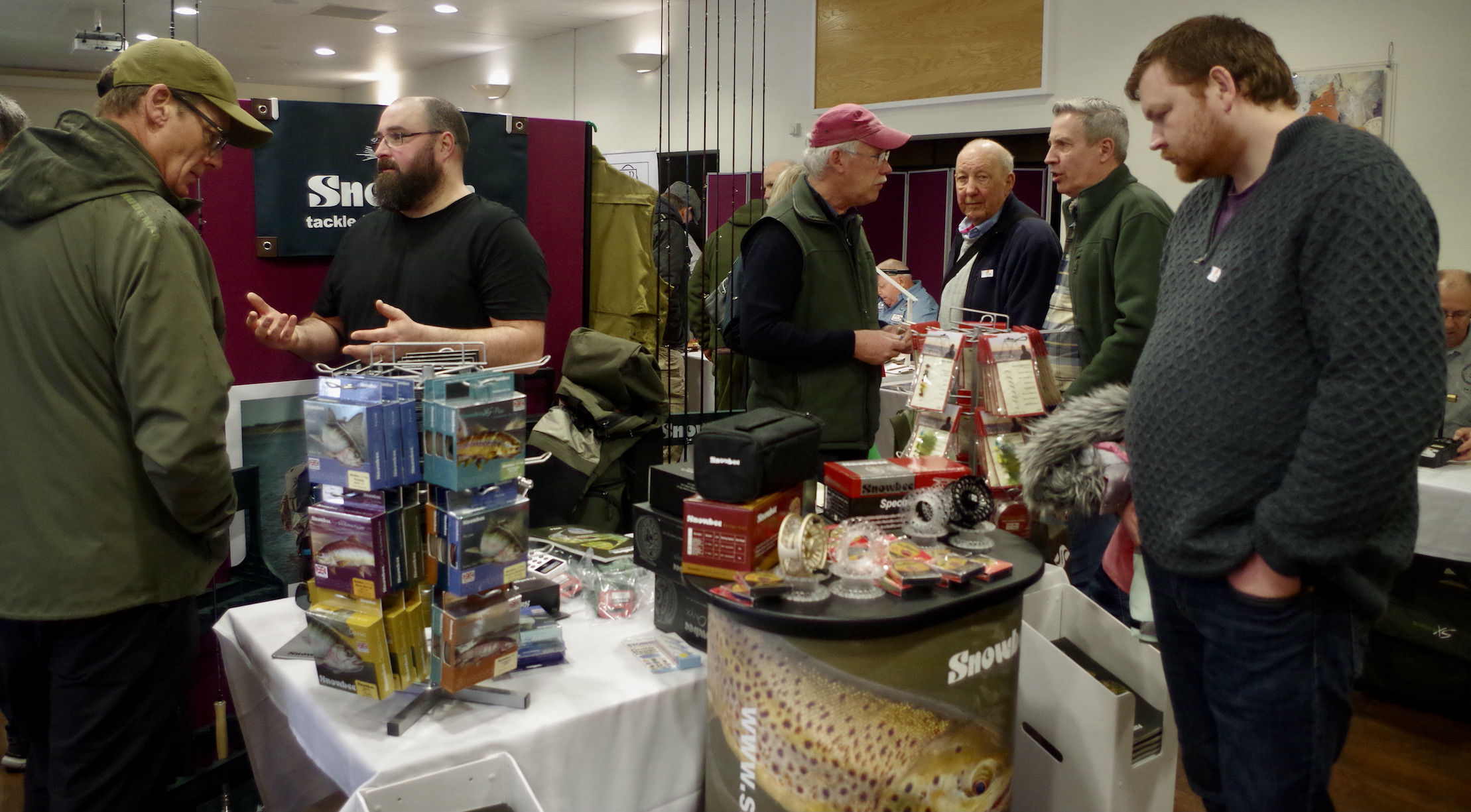
Charles Jardine opened the event stressing the need for anglers to get out fishing and support their local fisheries. He also spoke of the benefits of introducing young people into the fascinating world of fly fishing that has many positive benefits for mental health and general well-being.
Discussion flowed freely throughout the day with many plans set for the coming season. The long wet winter has undoubtedly impacted upon winter fishing with those fly anglers seeking sport with grayling and pike having a difficult time with only short periods when conditions were suitable to visit the water’s edge.
There has been considerable change over recent seasons as society has been impacted upon by Brexit, Covid and the cost of living crisis. Angling and fly fishing has of course been affected by all of this but it is perhaps even more important that our pastime thrives to bring much needed sanctuary from this gloom laden world.
Fly fishing has long been seen as a rather elitist branch of angling and when I started casting a fly fifty years ago the art of fly casting was still to some extent seen as a sport for the gentry.
The boom in Stillwater trout fishing during the 1970’s broke down these social barriers to some extent as a wider section of society enjoyed catching rainbow trout stocked into water supply reservoirs.
I remember being thrilled to catch the occasional limit bag of trout when I started out with the fish averaging around 1lb. As fisheries spread competition increased and small still-waters started opening stocking ever larger trout. Into the 1980’s and 1990’s double figure rainbow trout became a regular feature with some fisheries stocking fish to over 20lb.
This increasingly artificial commercial fishing resulted in ever increasing expectations from anglers. Another factor that perhaps influenced stocking was a significant increase in cormorant populations across reservoirs. The stocking of rainbows under 1lb 8oz became unviable as smaller trout were simply mopped up by these predatory birds.
Covid impacted upon us all but there was an initial post covid boom in fishing as anglers escaped to the great outdoors to enjoy a pastime that offered a safe environment. The value of fishing to mental health became much appreciated and for a time it seemed fly fishing was in a good place.
Sadly, the cost of living and angler’s unrealistic levels of expectation has resulted in an unsustainable situation. The spiralling cost of fish food and hot summers has impacted upon the farms that provide stock fish. The result is that fisheries are forced to pass the costs onto customers. In a cost of living crisis, it is very much a case of the survival of the fittest and as a result we are seeing the collapse of some fisheries Draycote Water in the Midlands being a case in question.
So having painted a rather gloomy picture of the fly fishing world in this country I will now look for those proverbial green shoots.
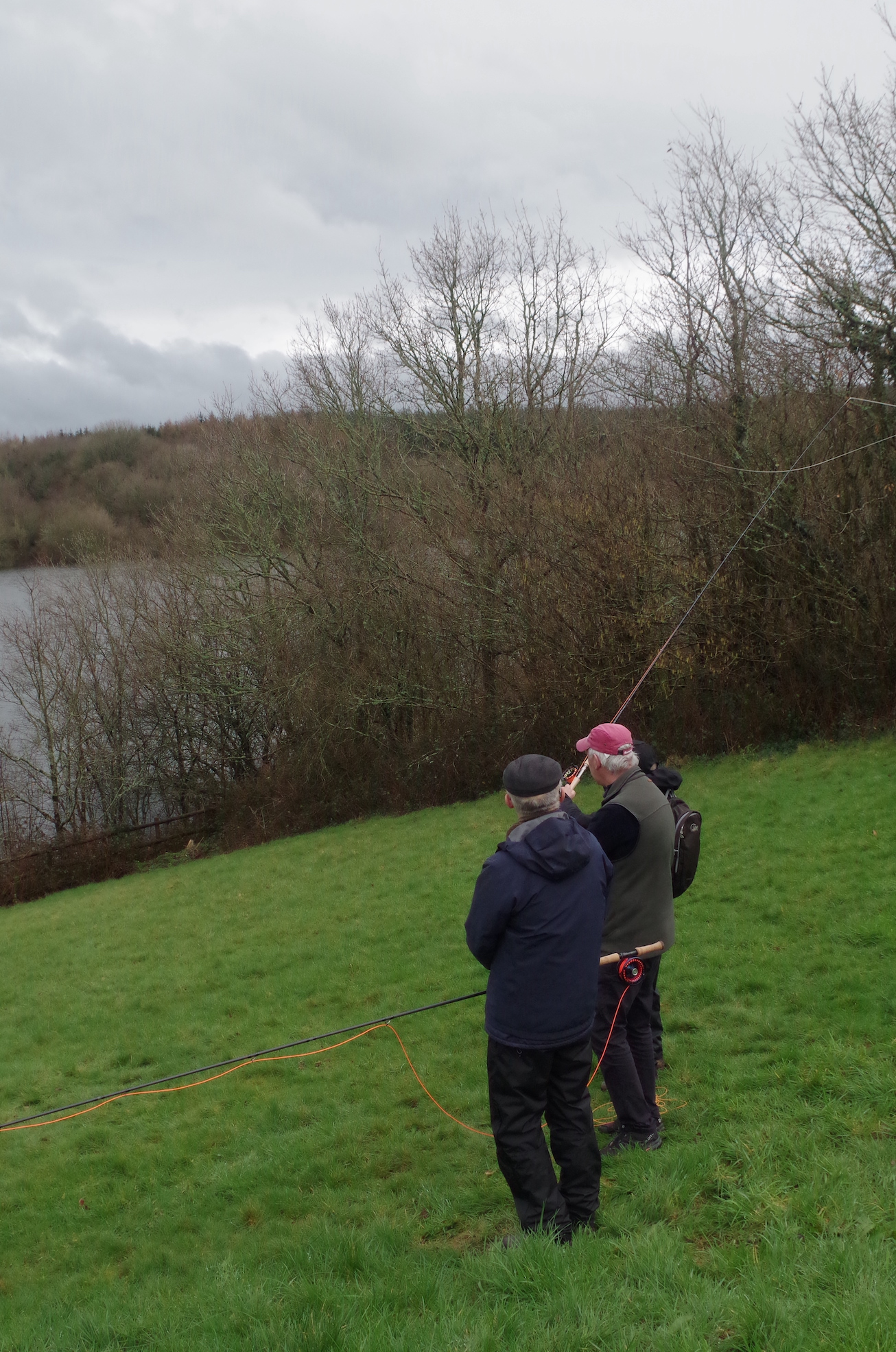
This year’s fly fair brought together a wide dynamic of anglers from the West Country Fly Fishing scene. With a new season ahead, there was undoubtedly a positive and optimistic drive as the leaders of this pastime urged us to get out fishing and support our local fisheries.
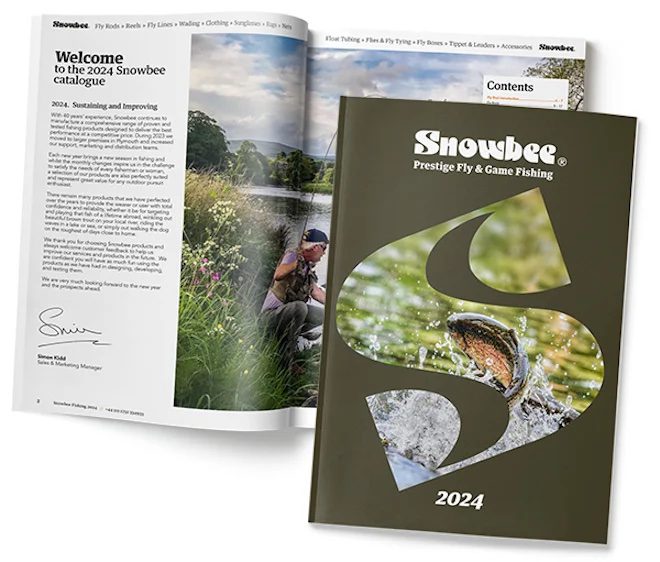
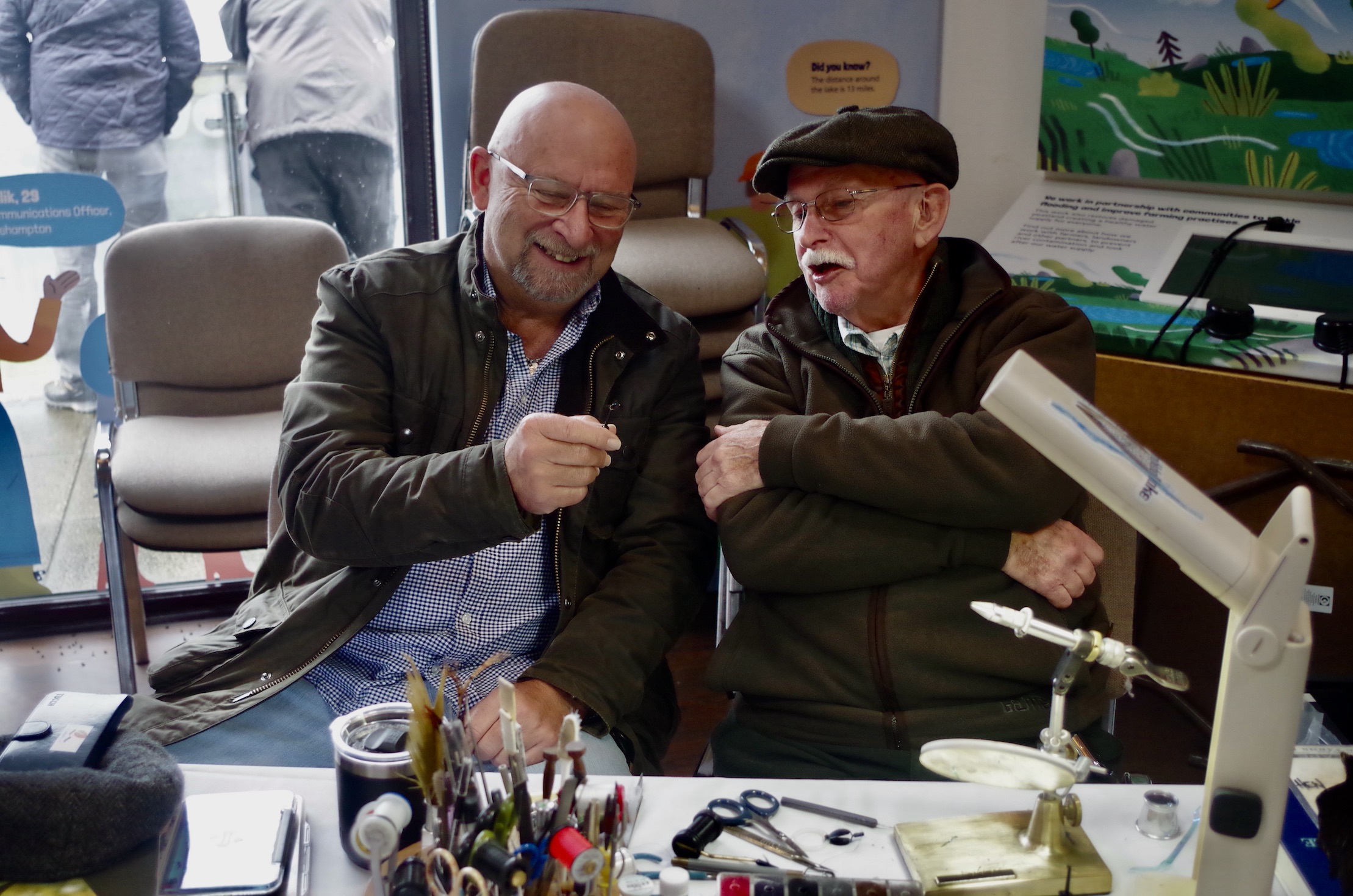
Concern for the environment was evident with fishery associations promoting their waters that are often surprisingly cheap alternatives to the commercial waters.

Companies like Catch and Fish Pass are now offering a new way to buy day permits using the latest mobile phone technology.
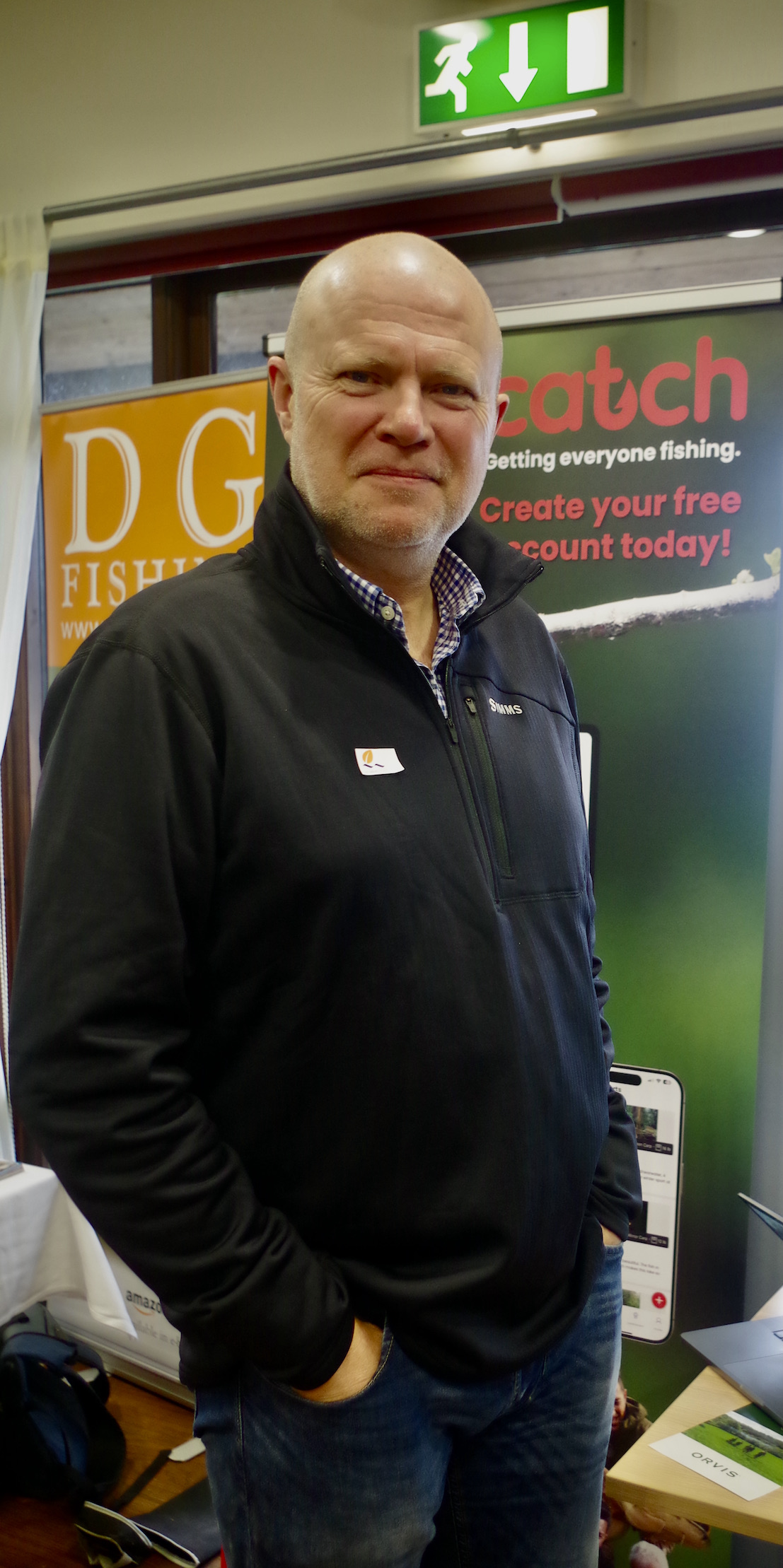
In contrast to the modern world traditional craftsmen like Luke Bannister were at hand to display magical wands of split cane that add sweet perfection to an angler’s day.
I took pleasure in introducing Michelle Werrett whose new book Song of the Streams is enchanting readers to fellow author Mike Weaver whose writing has delighted West Country anglers for many decades. His book In Pursuit of Wild Trout published in 1991 is a classic tome that is timeless in its validity.
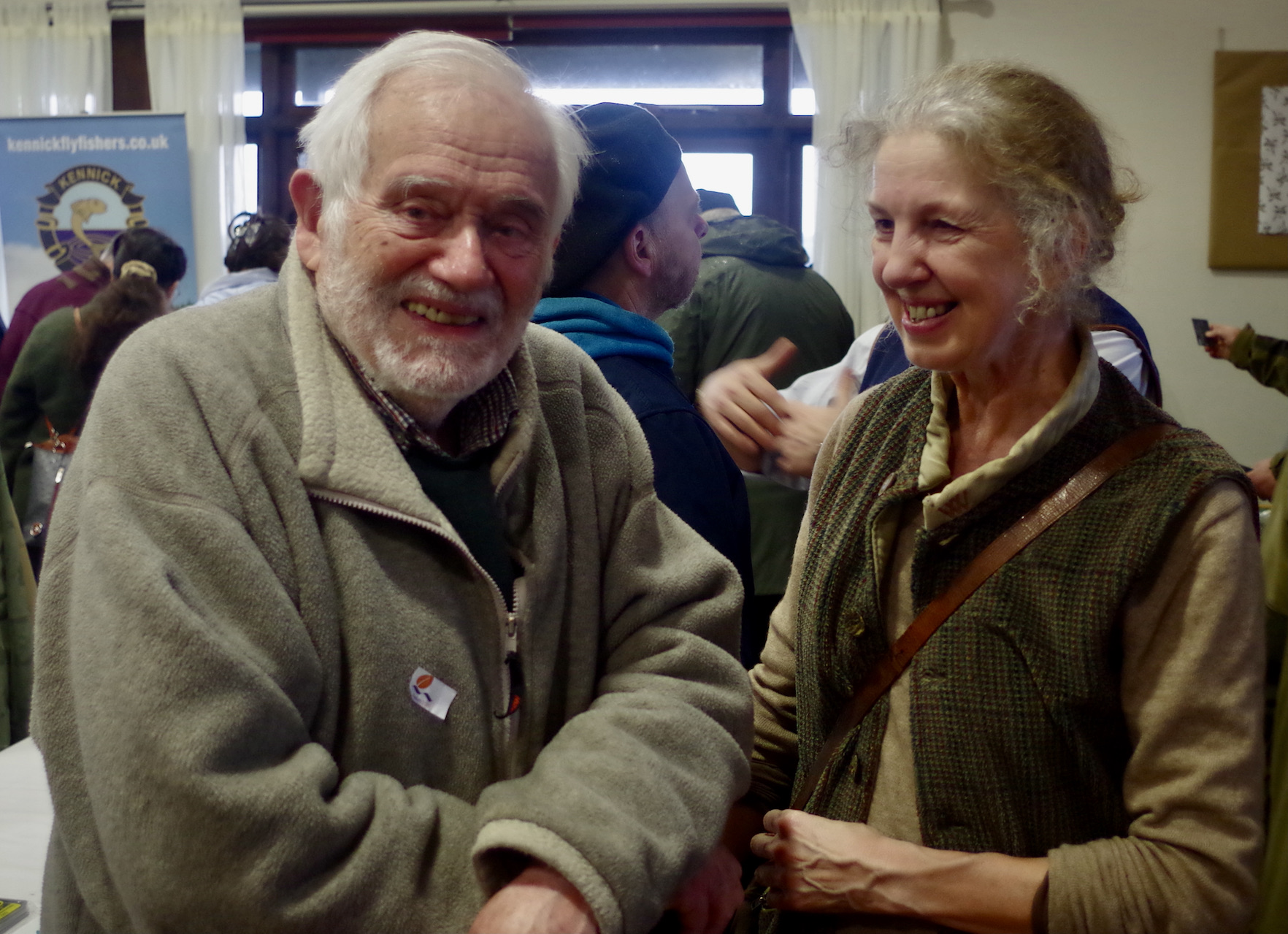
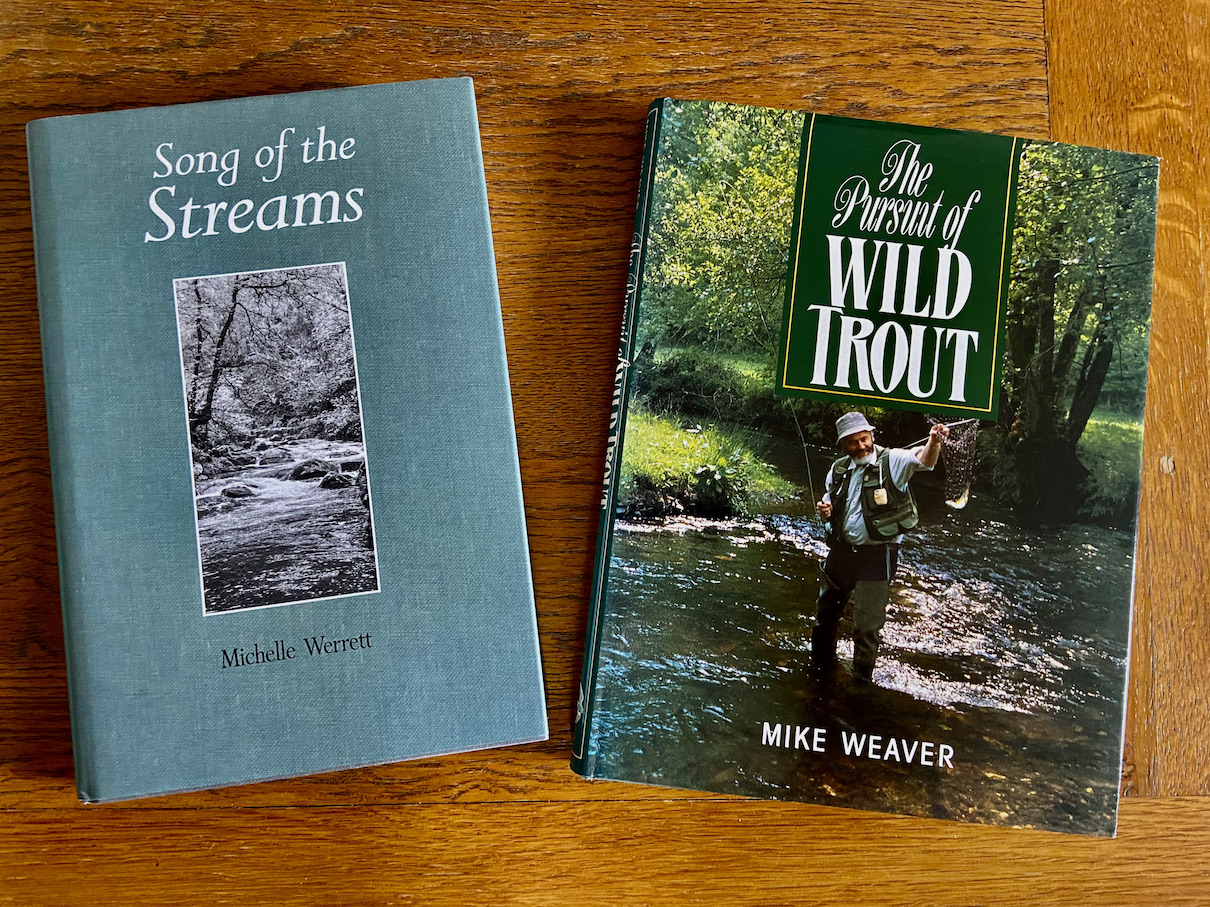
The West Country has a wealth of wild streams that offer exciting fishing for wild brown trout and a sadly diminishing number of salmon and sea trout. Adrian Bryant has been promoting the excellent film Riverwoods across the region and I joined him in presenting a short preview of this film giving my own brief view on the tragic decline of salmon.
Chatting with many at the Fly Fair it was apparent that there is a willingness to adapt and there are signs that new thinking is starting to break down the barriers of tradition. There is a growing desire to fish for varied species across different waters.
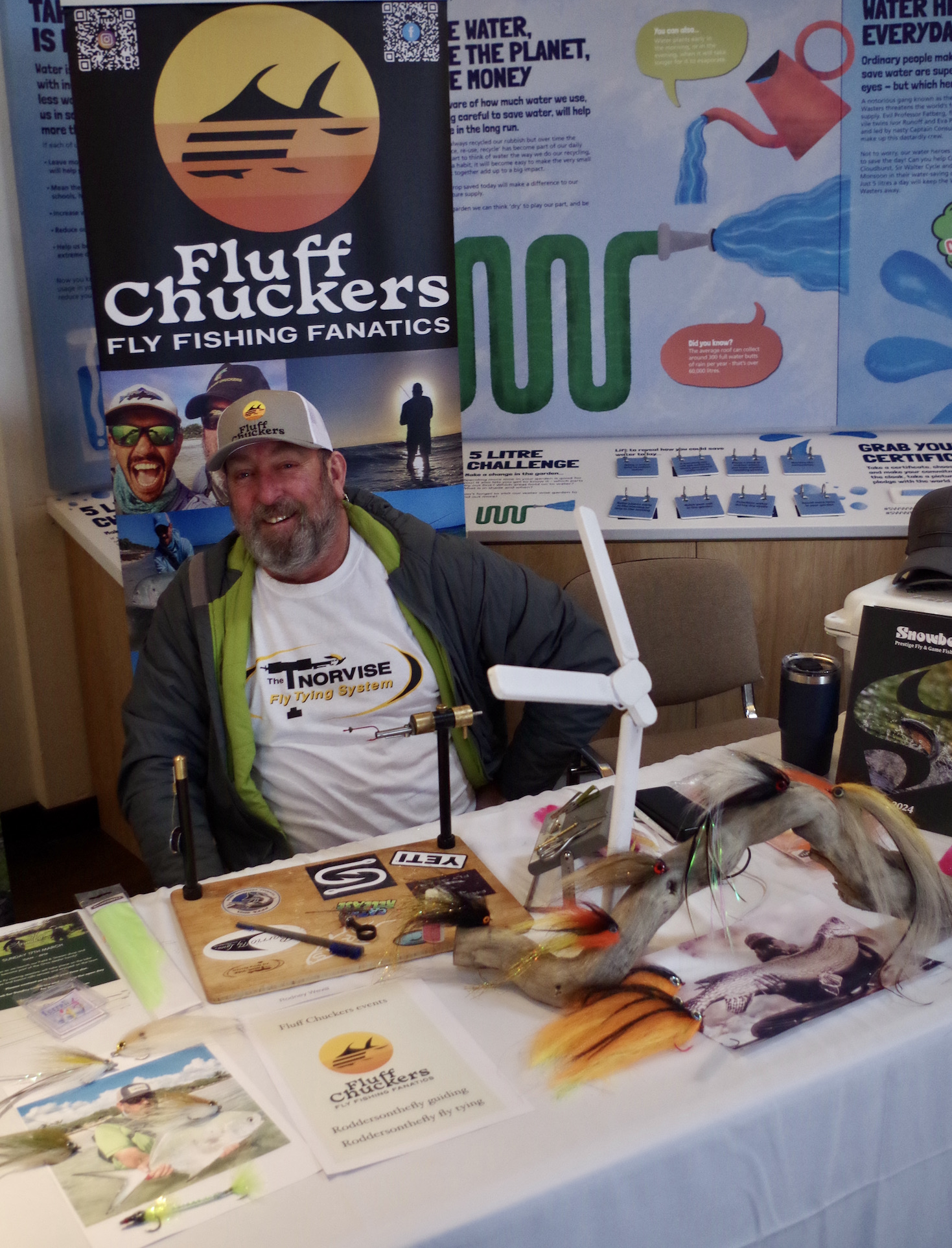
Pike from large stillwater’s and canals are an increasingly reported trend. Perch, rudd and carp are also gaining a following with Dominick Garnett columnist for the Angling Times giving a thought provoking talk on fly fishing for coarse fish. There is also an increasing number of anglers targeting sea fish with bass and mullet offering exciting sport during those hot months of summer when the trout are dwelling deep down in the reservoirs.
There are those who taking fly fishing into cross over territory with LRF with talk of using squirmy flies employed to catch blennies and other species from rock pools using 2 wt. rods more often used to target wild brown trout in moorland streams.
The definition of Fly Fishing on Wikipedia is “ Fly fishing is an angling technique that uses an ultra-lightweight lure called an artificial fly, which typically mimics small invertebrates such as flying and aquatic insects to attract and catch fish.”
This differs somewhat to my own thoughts where I had always believed fly fishing to be a technique that involves projecting the fly to the fish using a line as the weight. The traditional casting styles were entrenched within my mind set. But I now see an unfurling world of unorthodox presentations as anglers dibble and jig their flies or lures.
This is a world far from those days captured within the classic tomes depicting Fly Fishing on the revered chalk streams of England. Surely though there is room for all as our splendid pastime evolves as it always has?
We are living in times far removed from those of Halford whose doctrine of the Upstream Dry Fly stimulated debate within the world of the wealthy and privileged during Victorian Times.
I returned home from this year’s fly fair full of enthusiasm for the coming season with plans made that this year I really must try to make happen.
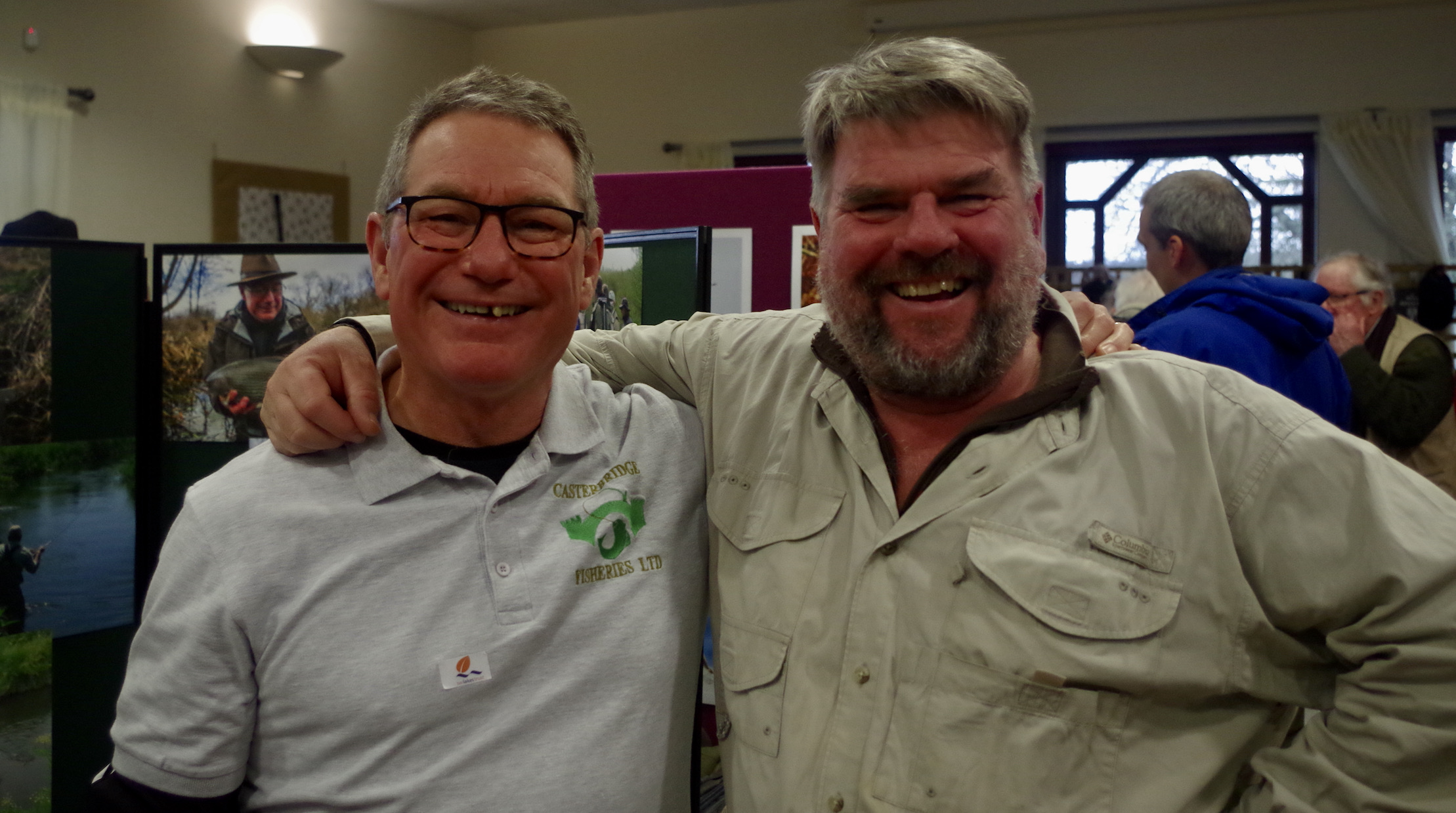
Many thanks to Ashley Bunning and all at South West Lakes Trust for hosting a fabulous fair.
SEA TROUT – Midnight Rambler
Richard Wilson talks sea trout fishing in his latest blog.
https://fishrise.substack.com/p/sea-trout?utm_source=post-email-title&publication_id=1289122&post_id=139166270&utm_campaign=email-post-title&isFreemail=true&r=1uvzdy&open=false&utm_medium=email
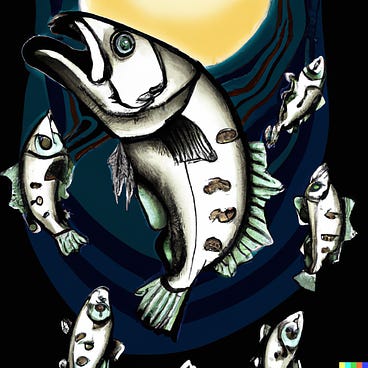
Twilight
The river beckons and eyes falter, straining in the fading monochrome half-light. As they weaken, so our ears fine-tune to the emerging clamour of the night: The chattering river, the owls and the scurrying creatures of the bankside. The night time world is waking.
The dictionary has a word for this: it is the hour when the world turns crepuscular. And is there a better time to go fishing? The hour when we crepuscules emerge blinking into the gathering gloom?
So let’s get down to business: My first and most important task is to reach my pool in time to catch the last of the light. Once there I’ll sit on the bank, read the lie of the water and wait for it to get properly dark. This is, of course, an impossible call because no matter how long I sit and stare, the darkness never quite takes over. My widening eyes adapt just enough to keep me merely half-blind: I see the shadow shapes of trees and anything small silhouetted against the sky. But where land and water merge, all detail is lost.
But hey, who’s in a hurry? I’m enjoying the moment and all the while my senses paint a picture of the pool: the chuntering water, the flitting bats I glimpse but no longer hear, and sometimes, most wonderful of all, an otter or even two. And there – did you hear it – a fish churning close to the far bank. Just a moderate cast downstream. Catchable, but still I wait
Inevitably, my mind starts to wander. Big questions press in: Why do I catch nearly all my Sea Trout on Teal, Blue and Silvers? Why don’t I fall in at night – I’m quite good at it during the day. And what the heck is a Sea Trout?
Ah, there’s the thought. What the heck is a Sea Trout? For a great deal of my life this didn’t much bother me. They’re a vague sub-species of brown trout, right? Rather like the relationship between Steelhead and Rainbow Trout. So trout are trout, salmon are not, and sea trout are somewhere in between. Taxonomy? Pah! Who needs it.
I was wrong. Forget Salmon, they’re something else and irrelevant to this article. But Sea Trout and Brown Trout are the same thing. Identical, right down to their last drop of DNA. One’s bigger and the other is usually smaller, because one went to sea and the other didn’t. Or, rather, it hasn’t yet. One is bright silver when it runs back into the river – but soon reverts to its true brown trout colours.
This is important because it puts the lie to a theory I’ve been nurturing for a decade or two. Namely, that with Salmon numbers in free-fall, Sea Trout could save my fishing.
My theory went like this: Most returning Sea Trout are smaller school fish. They run into their rivers in shoals, while their bigger brothers and sisters make their way in their own good time. And over the decades school fish been getting smaller. I have not a shred of evidence to support this, but it seems to me they’ve halved in size from 1.5lbs to 3/4lb. There are plenty of wise river keepers who will say that the reason for this is that 3/4lb Sea Trout can swim through the inshore gill nets, set for bass and that kill uncounted numbers of Salmon (and big Sea Trout).
So, I reasoned, there would always be sea trout returning to river hitting the redds and ensuring the future of the, um, Sea Trout. Long after the last salmon had played the last post, there would still be sea trout slipping through the nets and heading up-river and towards me.
Ah well. Wrong again.
My theory fails at that moment when part of a river’s Brown Trout population decides it’s going to up sticks and go to sea. It may be because there are too many competing trout in the river. Or not so many trout, but even less food. Why one fish decides to go and another doesn’t we can’t say. Some do, some don’t.
Maybe they just fancy a change of scene. When New Zealand’s rivers were stocked with Loch Leven’s trout all those years ago, there were rivers where the entire population of new fish upped sticks and left for the sea and a new river. They’d had look at their new home, didn’t like it and without so much as a thanks or goodbye, left never to return
However, the stakes on going to sea are high. Migrating smolts face many more dangers than had they stayed in the river. There are more predators, for example. And like salmon, climate change and warmer water is shrinking smolt size, and the smaller a smolt, the less chance it has of surviving the journey. So the decision to head to sea is getting more dangerous.
The reward for the ones that make it is food. They grow faster and bigger, and that pays off when they return to the river to breed. Big fish can dominate the redds.
So for this stage in their lives, the decision to go to sea is about the survival of all brown trout. They’re a species hedging its bets. Some stay, some go. Some will win, some lose. Hindsight is everything.
Unfortunately, that hedged bet is getting more dangerous. A recent Norwegian report surveyed 10,000 miles of Sea Trout rivers and lakes ranging from the Arctic to the south of the country. In only 25% were Sea Trout populations considered healthy. They had disappeared altogether in some rivers, and in 40% populations were in either a poor or very poor condition.
And their biggest threat? It’s sea lice, the major by-product of salmon farming. 83% of all the water surveyed was impacted by farmed sea lice. Amongst salmonids, Sea Trout are hardest hit by lice because they stay in coastal waters where open-net cage salmon farms are found.
The bad news doesn’t end with the fish farms. Globally, the fishing effort at sea has industrialised. At the same time, rising sea temperatures collapse ocean food chains and stop some fish breeding (fry are a major source of Sea Trout food). The laval soup at the base of the ocean food chain thins out, and the bait fish that depend on it get smaller and carry less body fat – in part because warmer water raises their metabolic rate so they have to eat more just to keep going. That metabolic trap works its way up the food chain – bigger fish also need to eat more just to maintain body weight, but there’s less food. This is the world Sea Trout migrate to feed in.
Unfortunately, staying in the river is also difficult. So much so that if I allow myself to get properly gloomy about this I have to say the trout rivers in my part of the world are becoming hostile environments for fish,
Trout redds are usually further into the headwaters than a Salmon’s. These smaller streams are warming faster as our climate changes, and they’re more vulnerable to farm pollution. The brutal truth is that the survival rate for smolts shrinks by as much as 70% if they start their return journey short of peak fitness and weight.
There’s more. The increasingly heavy rainstorms driven by our warming atmosphere wash redds downstream, leaving behind beds of small stones where once there was gravel. And, in my part of the world, rivers are a cheap way for water companies to move human sewage to the sea and boost dividends for shareholders. Meanwhile, dairy farmers have massively increased stocking density so slurry mixes with chicken and human shit to turn the water phosphate green and coat river beds with algal slime. Insects and fry don’t stand a chance. Clean rivers are increasingly hard to find.
Despite all this, I’m still fishing, still crepuscular and always thrilled to be part of the gloaming. Is there anything to beat the excitement of the wallop administered by turbocharged 2lb Sea Trout take at midnight?
And the weirdest thing about night fishing? It’s that I so rarely catch the opposite bank. I like to think this because I cast really well. I’m so good I could hit a dimpled rise with my eyes closed. Hmmm. A more likely explanation is that I always cast short. But I’m not changing anything now.
Finally, did I tell you about the time 2 otters thrashed and trashed my pool as I watched darkness close in – and how, as soon as they left, I caught an 8lb Sea Trout with my first cast and 6lber with my third?
There’s nothing on earth to beat crepuscular fishing. Although maybe I should experiment with some new fly patterns. It’s possible that Teal, Blue and Silver may not be the only fly that catches Sea Trout.
With thanks to: Paul Coulson FIFM, Director of Operations, Institute of Fisheries Management
Passionate Young Angler seeks Sponsorship to chase his dream
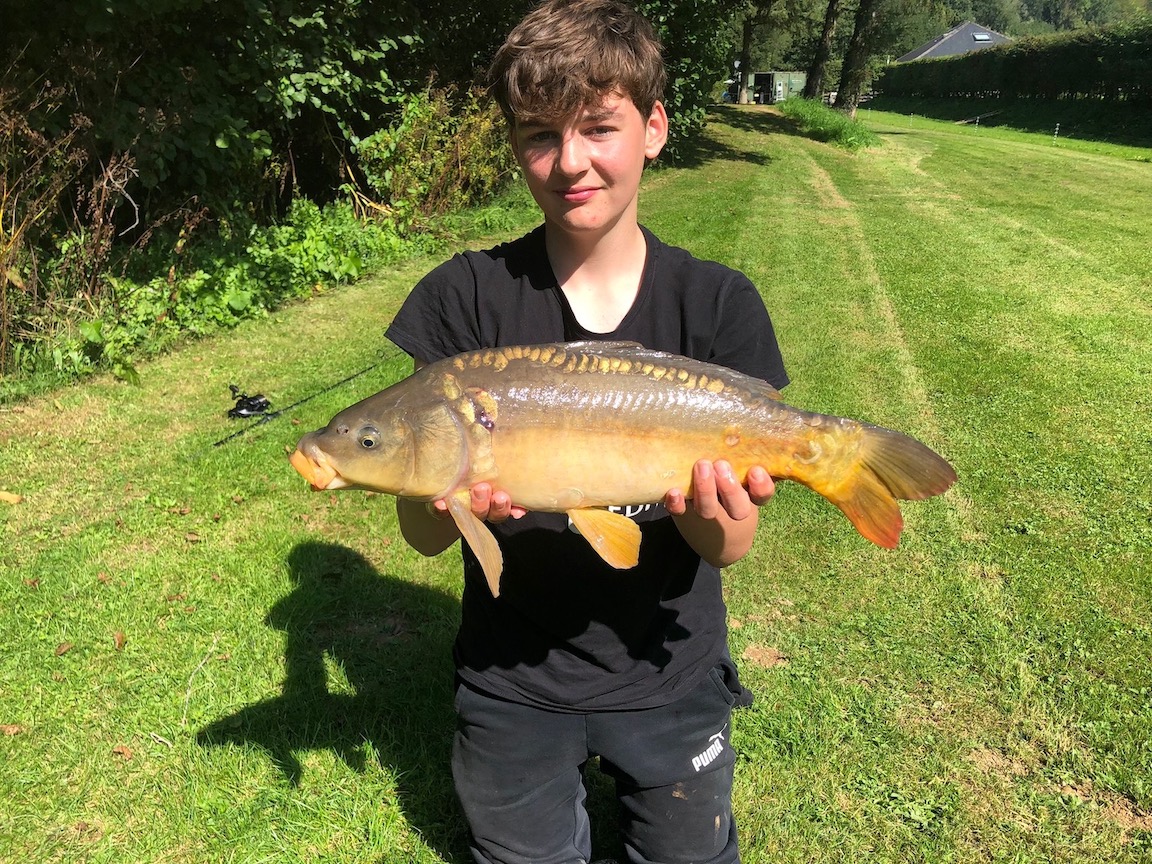
Max is a very passionate fisherman and long time member of Dulverton Anglers Association. He is currently in the England Youth Fly Fishing Team and has already 2 caps to his name so this will be his 3rd International match this year.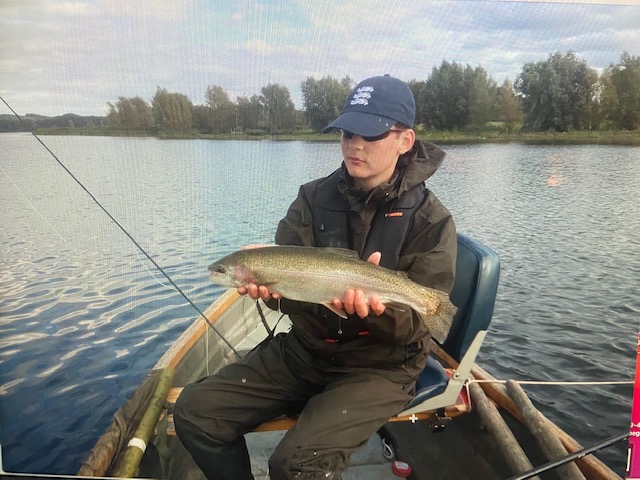
He is also the Loch Style National Youth Championship winner, (catching 11 and 2nd place caught 4)
Max spends most of his time either fly fishing or carp fishing
Max turns 16 this year and has been offered a place at Sparsholt College, in Hampshire to study Fishery Management Level 3. Although the course is funded, he will need to board due to the distance. Therefore he is looking for sponsorship in order he can fulfil his passion (dream).
If you can help young Max please contact Lance Nicholsons at Dulverton
Rainbows and spartics at Bulldog
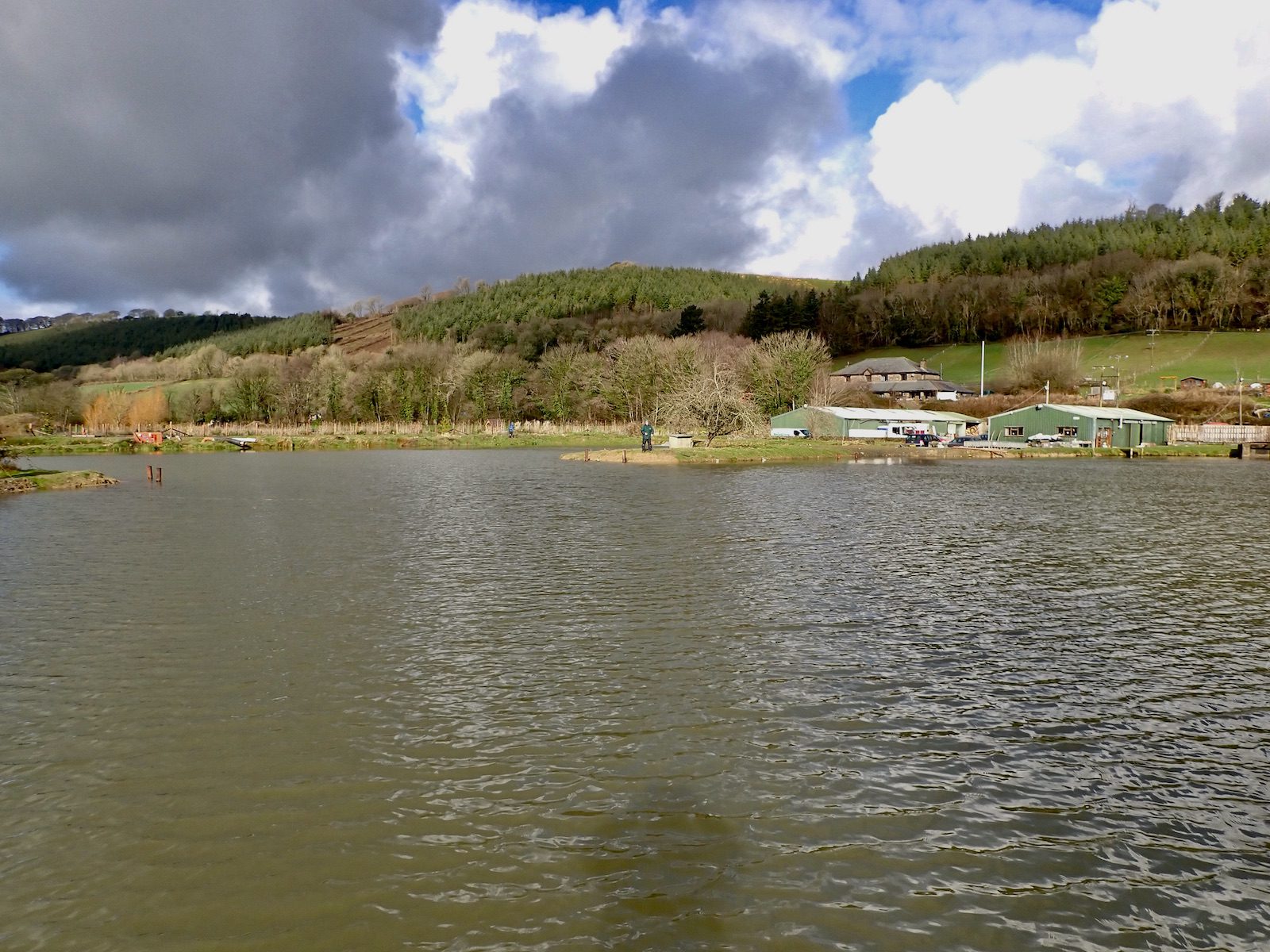

I joined Wistlandpound Fly Fishing Club for their final Winter Challenge match of the season at Bulldog Fishery. After heavy rain the water was a little coloured and members struggled to catch for the first hour.
As the morning progressed I noticed rods starting to bend as members found the right formulae. I had been fishing a floating line with a bead headed black lure and had received just the one pull after an hour and a half of concerted effort.
I had tried several areas around the recently enlarged lake and noted that other members were catching from the very spots I had departed. I had to leave at lunch time and knew that if I was to catch I needed to change tactics.
I swapped over to an Intermediate Snowbee line, stuck with the black lure on the point and a Montana nymph on the dropper. After five minutes I had a good pull through the line and briefly hooked into a fish that came off after a few seconds.
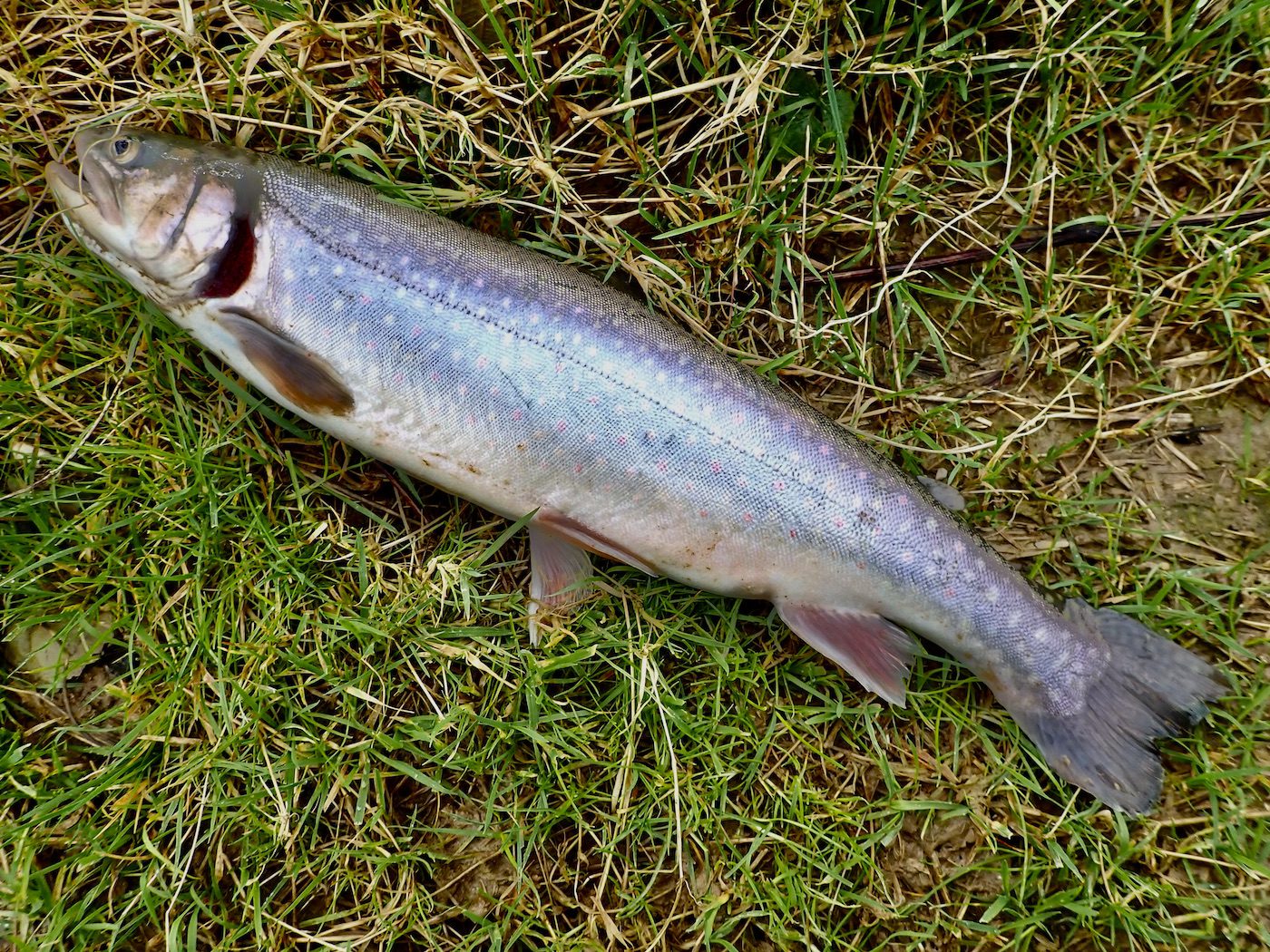
Encouraged and with renewed confidence I continued to search the water moving a few yards to a small promontory. The line zipped tight and I was delighted to net a spartic trout of around 1lb 8oz. A few minutes later a chunky rainbow of around 4lb was safely netted after a good tussle. I fished on with confidence and completed my three fish bag by 1.00pm. Speaking with fellow members it was interseting to note that several fish had been tempted using flies with a touch of orange. I had caught on a black pattern; would I have tempted my fish earlier with a touch of orange? Was success down to depth and rate of retrieve? Or did the trout simply come on the feed?
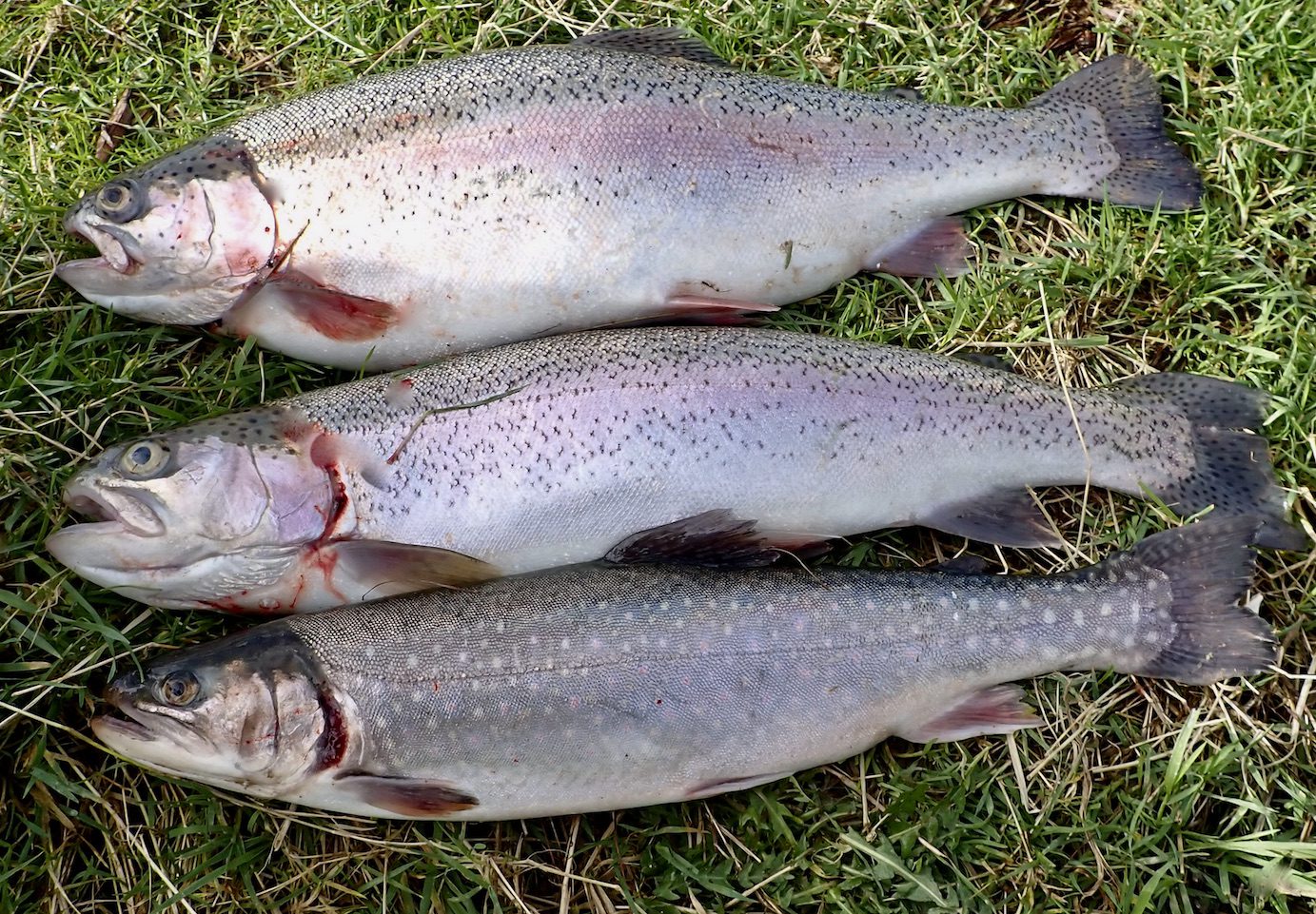
Competition Result :-
1st Andre Muxworthy – 3 trout 9lb 3oz
2nd Wayne Thomas – 3 trout 8lb 8oz
3rd Nigel Bird – 3 trout 6lb 10oz
4th Colin Combe = 2 trout 5lb 10oz
5th Dave Mock –2 trout 5lb 5oz
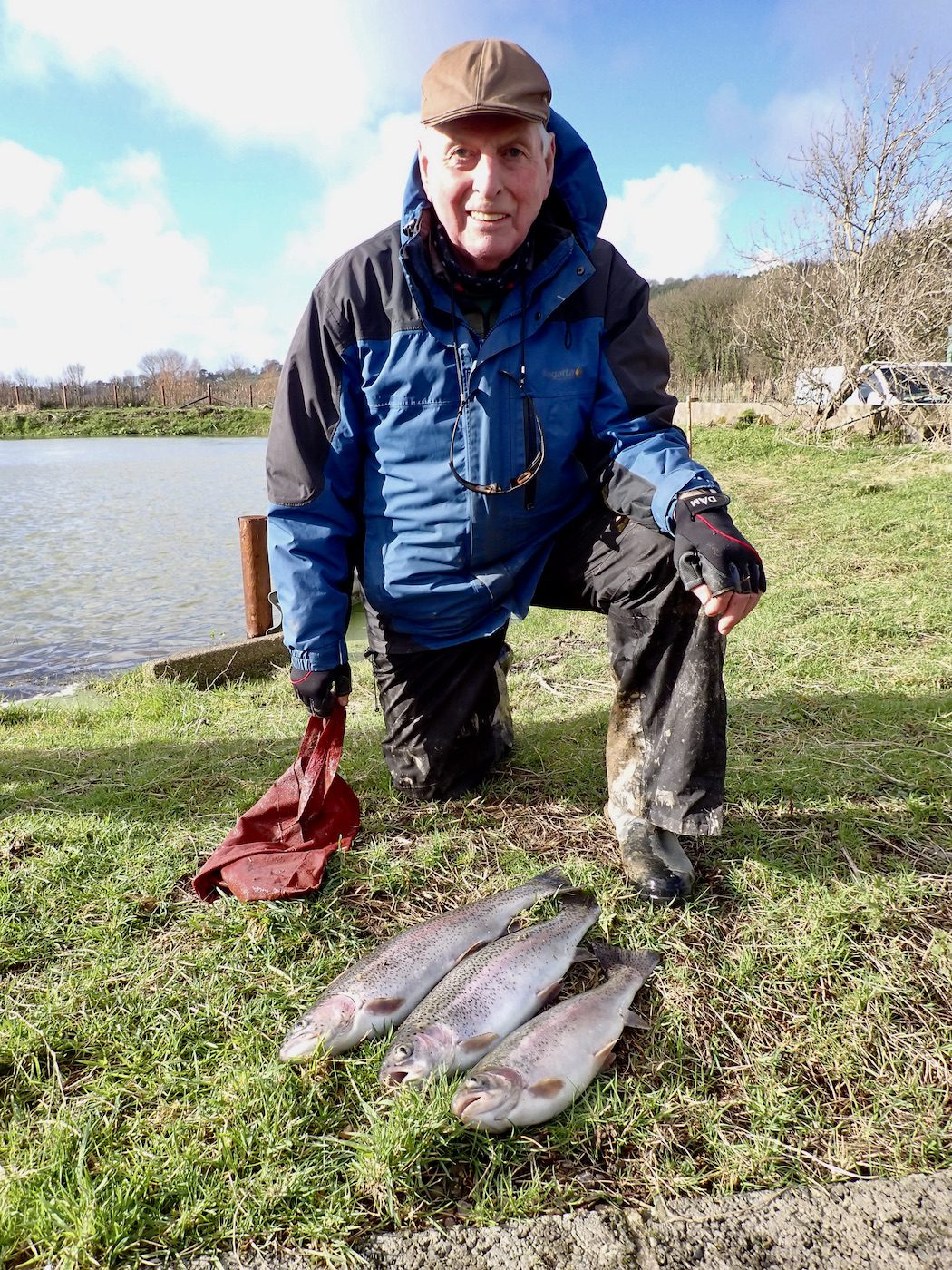
It was now time for a quick catch up with fellow club members and to take a look at the drained carp lake with fishery owner Nigel Early. The lake has been drained, nuisance bream and small carp removed. The lake will reopen this coming Friday with plans to stock more carp over coming months. The lake has already produced carp to 33lb and will flourish over the coming months for sure. I have included a few pictures of the lake for future reference.
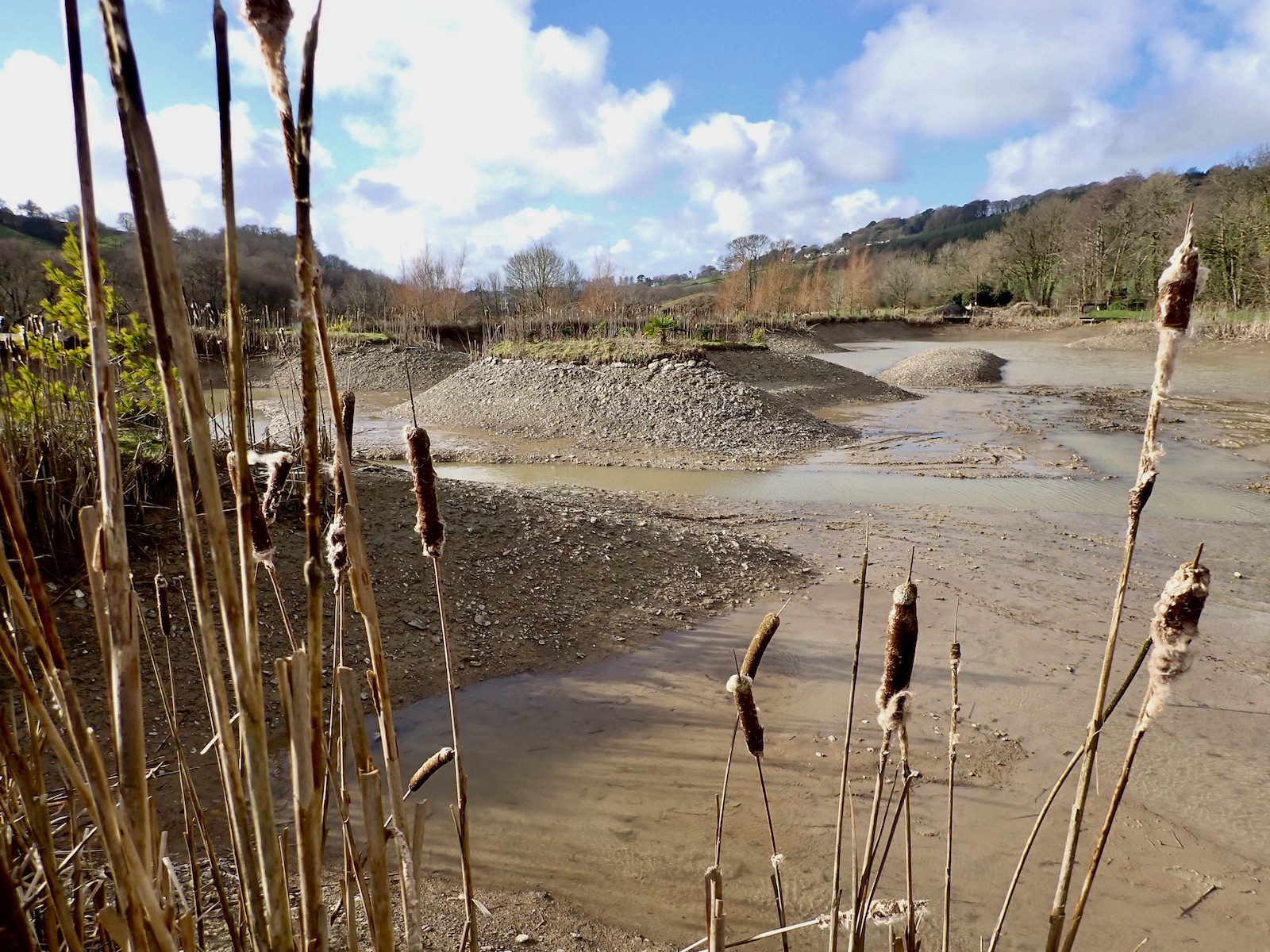
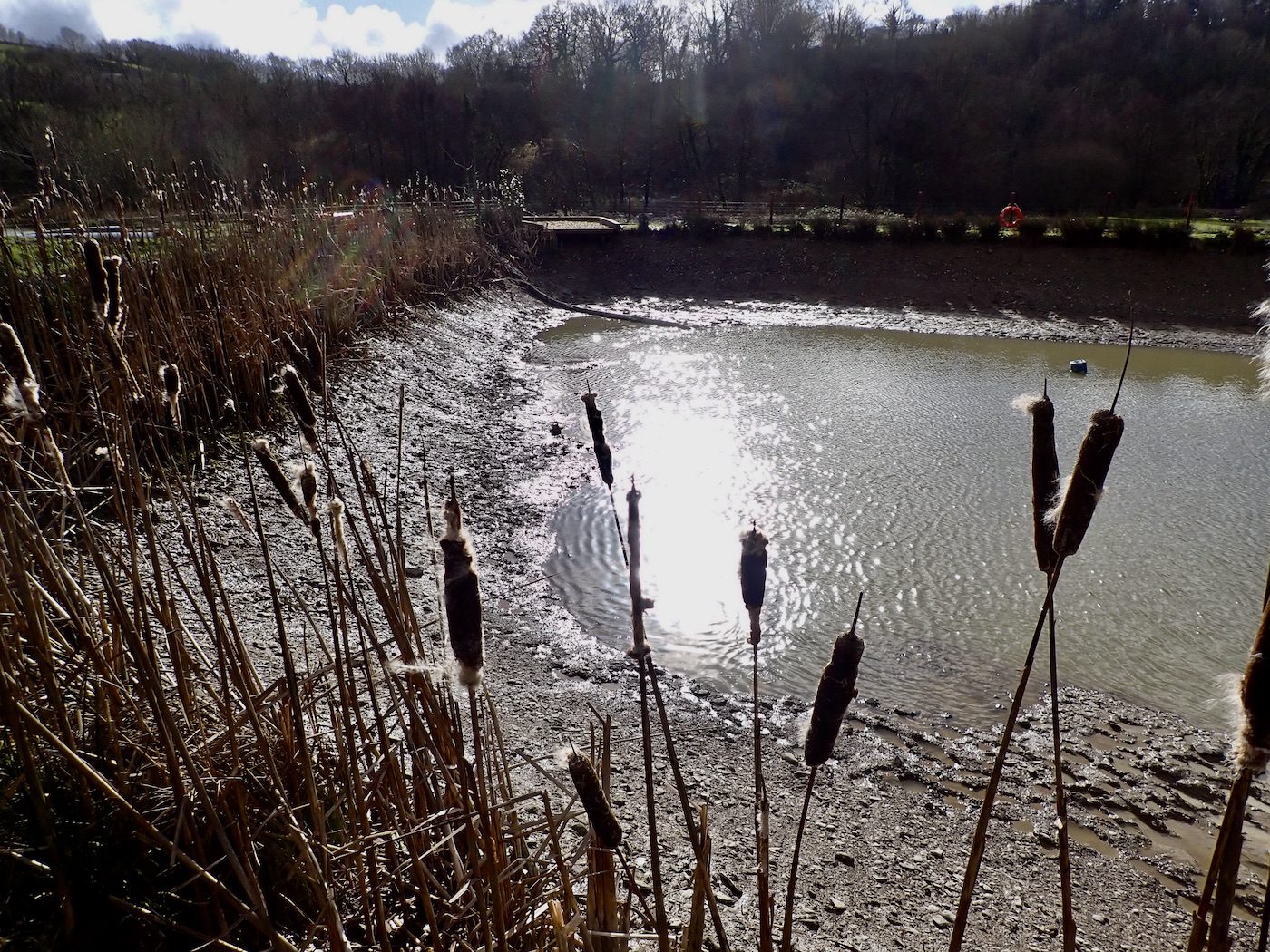
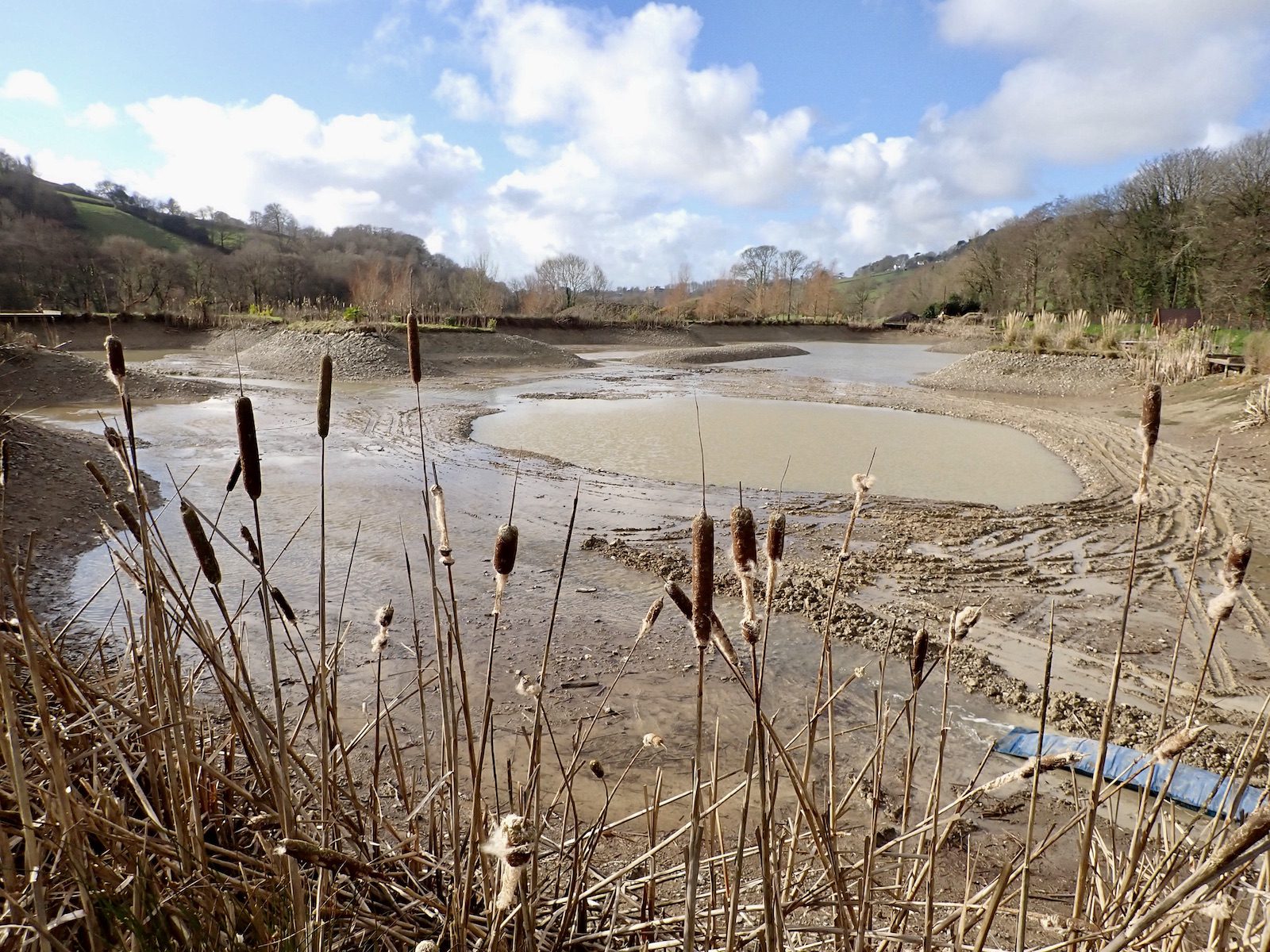
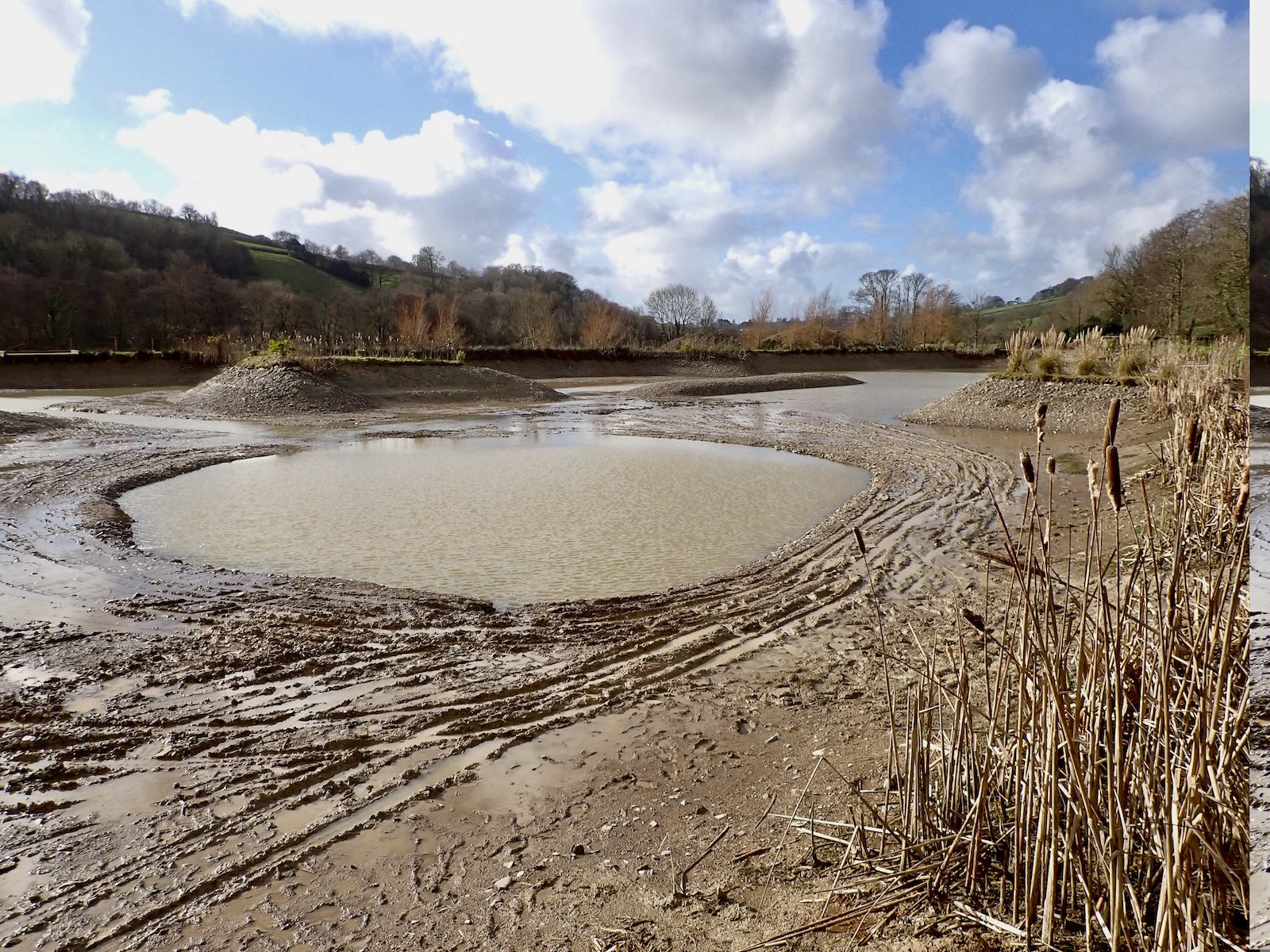
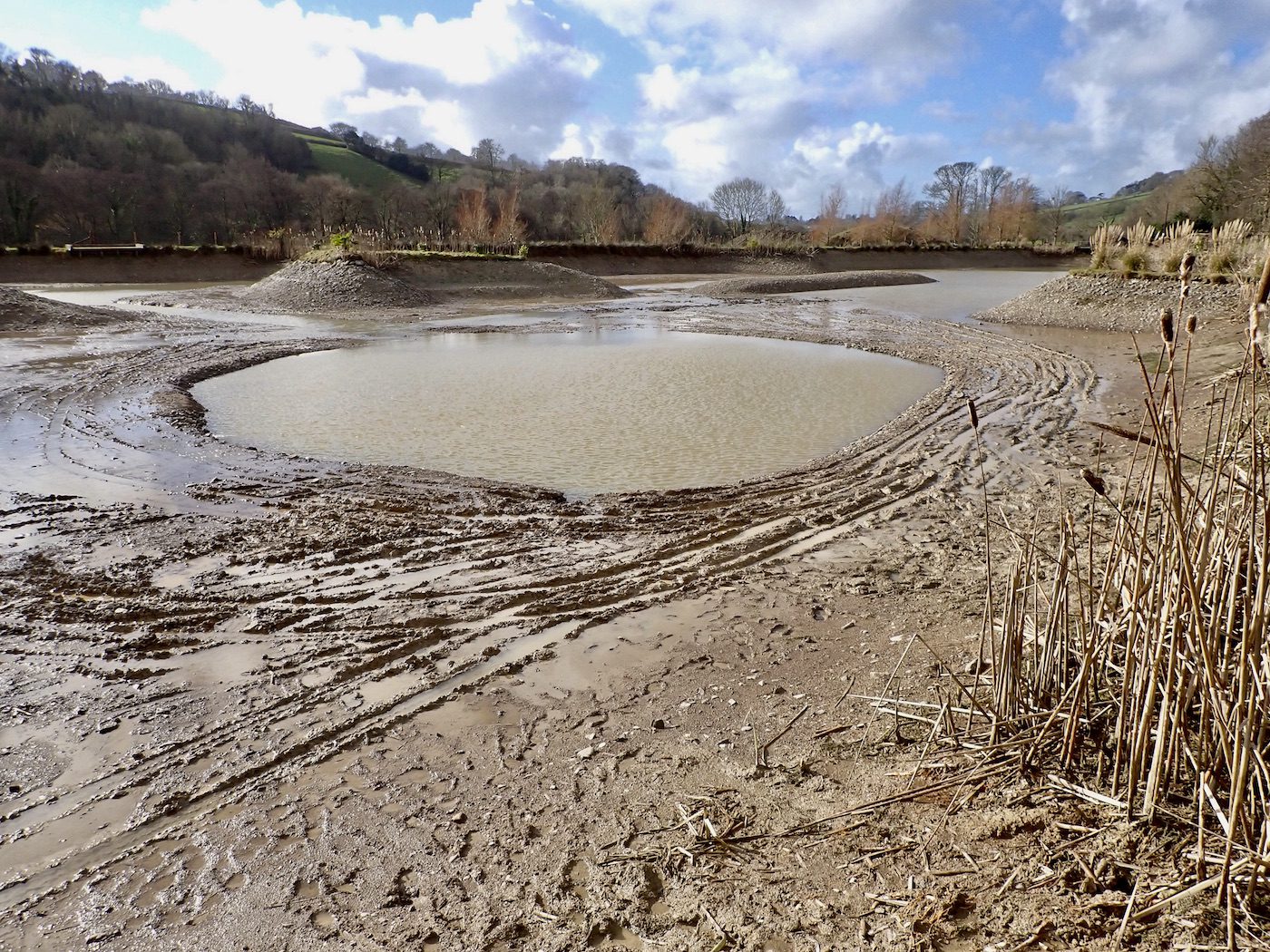
The Impact of Pollution – Ask The experts
This event at the end of February offers a unique opportunity to learn about water pollution across North Devon with representatives from across the region. I will be on the panel representing anglers though I do not profess to be an expert, just someone with a passion for angling within a healthy eco-system.

A Meandering Winter Stream
I joined Dulverton Anglers Association in 2023 intending to explore the waters of the Exe and Barle that wind their way through the wooded valleys around Dulverton. As is often the case ambitions are not always met and I failed to make a single trip to their waters in 2023. We do however visit Dulverton on a regular basis and generally call into Lance Nicholson’s Tackle and Gun Shop to talk of the river or buy a few flies.
Having already sorted my 2024 subscription I was determined to start exploring their waters and pledged to pursue the grayling of the Exe and its tributaries as soon as conditions allowed.
Grayling are true fish of the winter months and give a great excuse to visit the water. The South West is not known for its prolific grayling fishing with just a handful of rivers supporting stocks of these enigmatic fish often referred to as the ladies of the stream.
The grayling of these Exmoor streams have been lingering in my mind for many years. Several decades ago, my wife and I attended a fishing event at the Carnarvon Arms. The Carnarvon Arms was a renowned Country Hotel that hosted many visiting anglers and country sports enthusiasts. A stand at the event was hosted by an elderly gentlemen who talked of grayling enthusiastically and fondly. Sadly, the Carnarvon Arms has now been converted into flats its legacy now just a distant and fading memory.
Fortunately, time has been kind to these rivers and whilst the salmon are in steep decline there is an everlasting and deep character that still flows. Negley Farson waxed lyrical about the Exmoor waters in his classic tome ‘ Going Fishing’.
“ I think the best thing to call it is a certain quiet decency. This almost unchanging English scene, with its red and green rolling hills, holds a romance that wild rocks, and wild flowers, or snow capped volcanoes could never give you. It has a gentleness, a rich rustic worth, and an unostentatiousness that is like the English character. An imperturbable scene which fills you with contentment.”
These streams are still inspiring authors to this day with Michelle Werrett’s latest book ‘ Song Of The Streams’, maintaining a rich literary vein that links the past to the present.

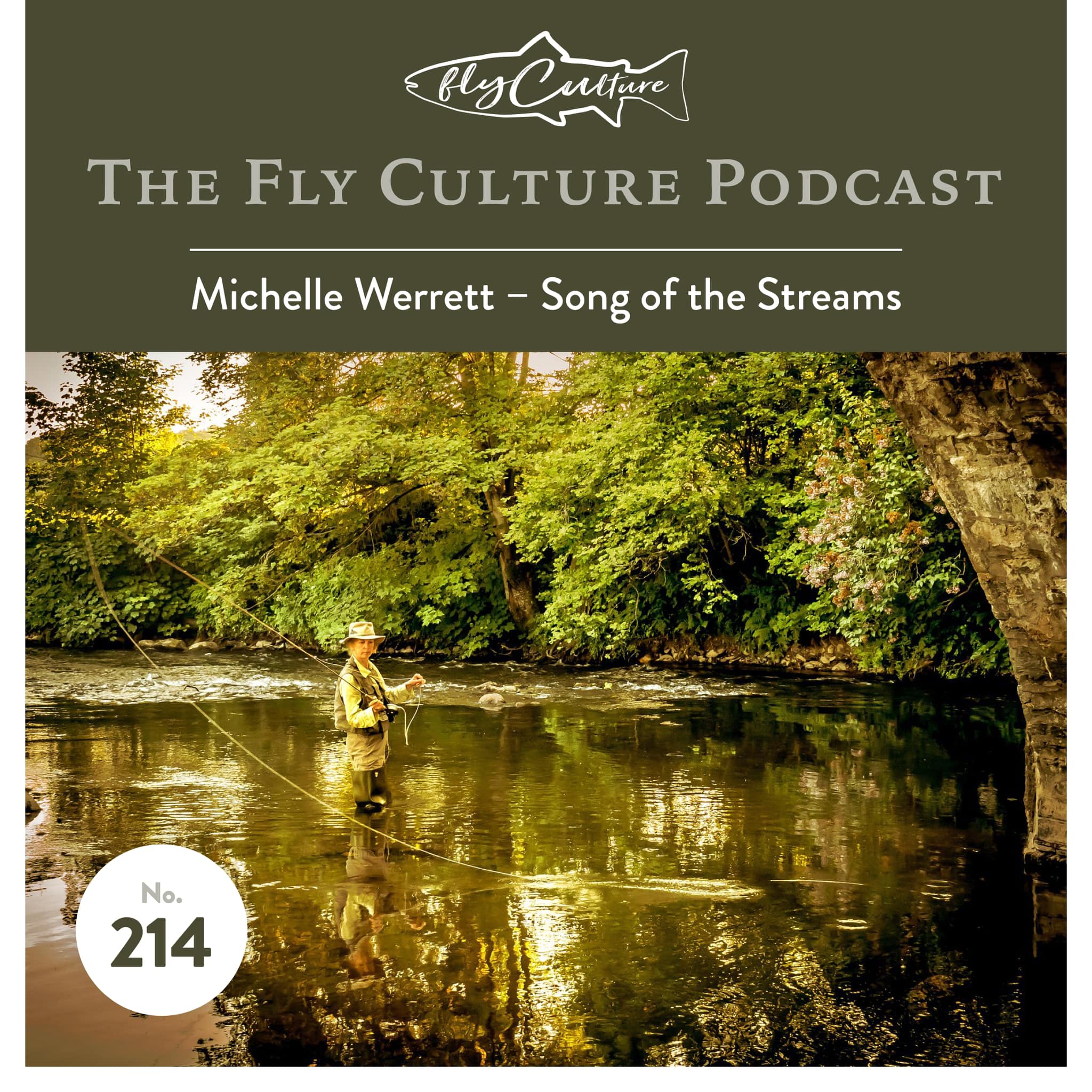
It was -5 degrees when I left home to drive across Exmoor. There was no hurry as I left home at around 9:30 hoping that the worst of the ice would have melted. The sun was well up in the sky as I drove across Winsford Hill yet the road glistened with white frost.
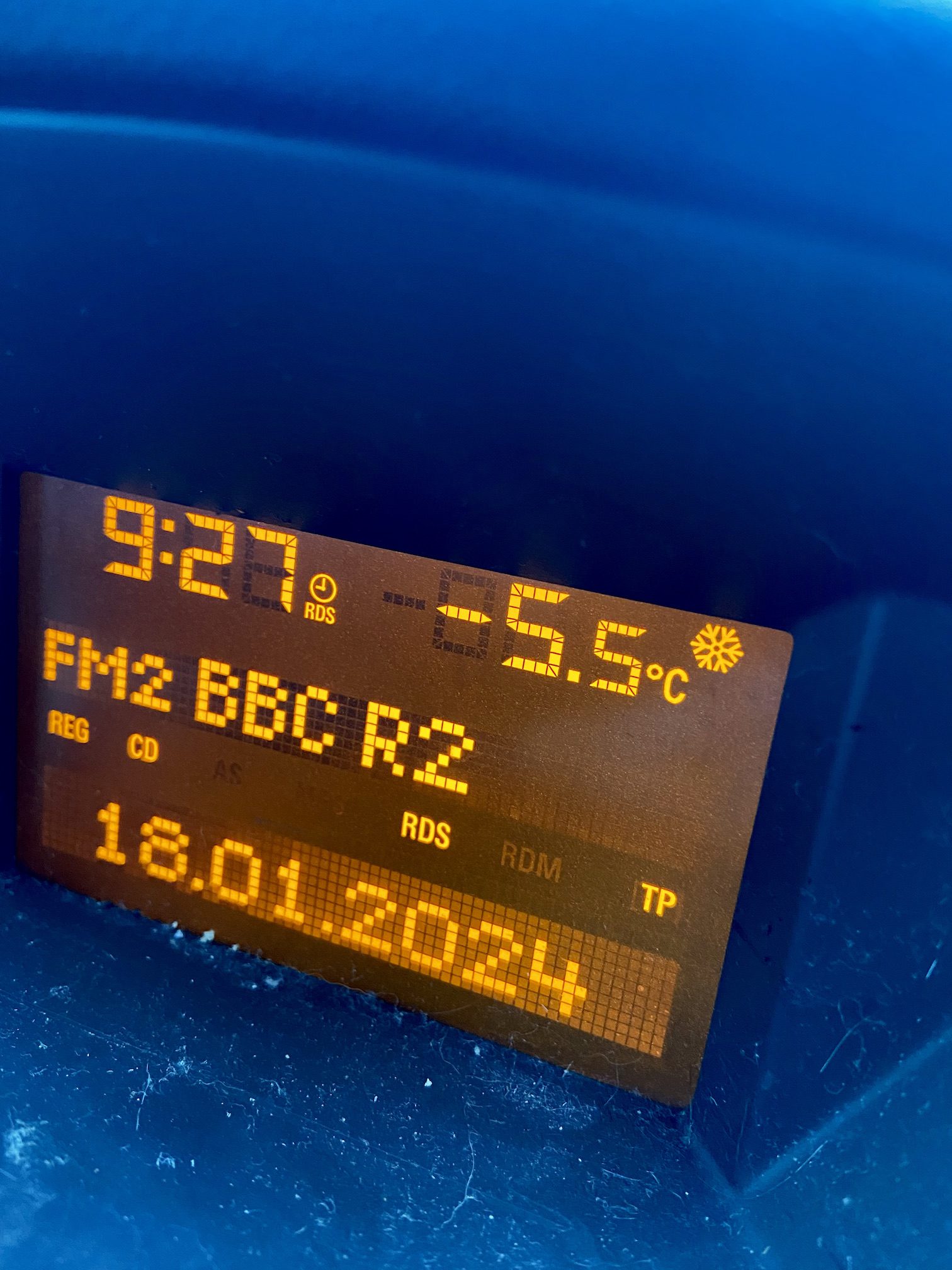
I arrived at Dulverton at around 10:30 and called into Lance Nicholson’s to get detailed instruction where to park to access my chosen beat on the River Haddeo. I purchased a hot pasty in Tantivy’s; a shop and café that I assume gained its name from the late Captain Tantivy an old English squire who rode with the hunt as mentioned in Farson’s “Gone Fishing’.
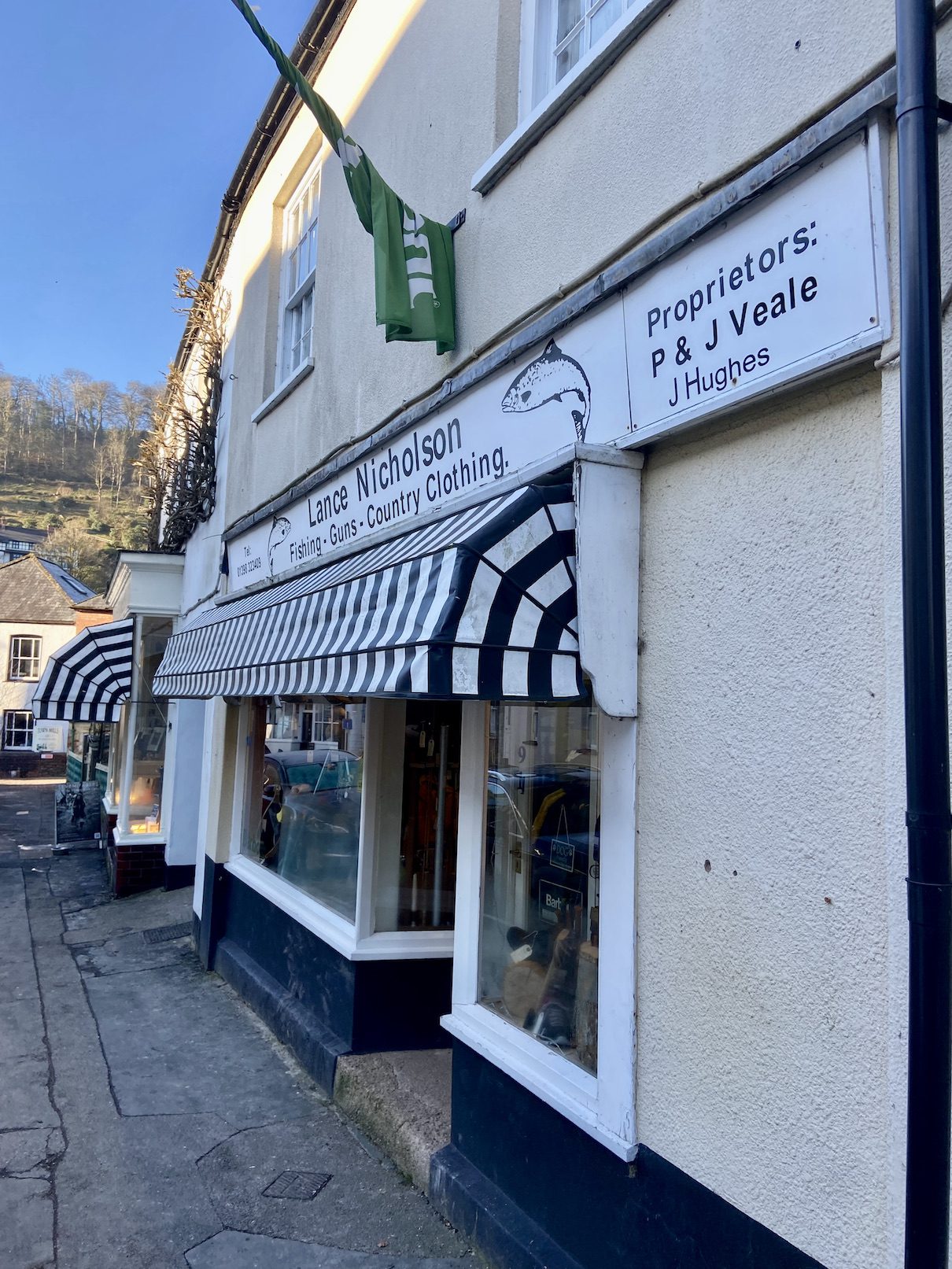
At the fishing hut I assembled my tackle whilst munching on a Cornish pasty and hot sweet coffee from my flask. I set off to the river unsure of the route to take. The Haddeo starts its journey high on the Brendon Hills its route punctuated by Wimbleball Reservoir that has become a mecca for Stillwater trout fishers.
The beat I was to fish runs through a Private Country estate and walking across the frosty field to the water I heard the volleys of shots from the shoot. The convoy of guns vehicles were parked up in the field across the valley. The pickers and their dogs worked away further up the valley and a team of beaters were undoubtedly working the woods and cover beyond.
The river was running fairly low and clear. I descended into the cold water carefully negotiating the barbed wire that will rip waders whatever the price tag!
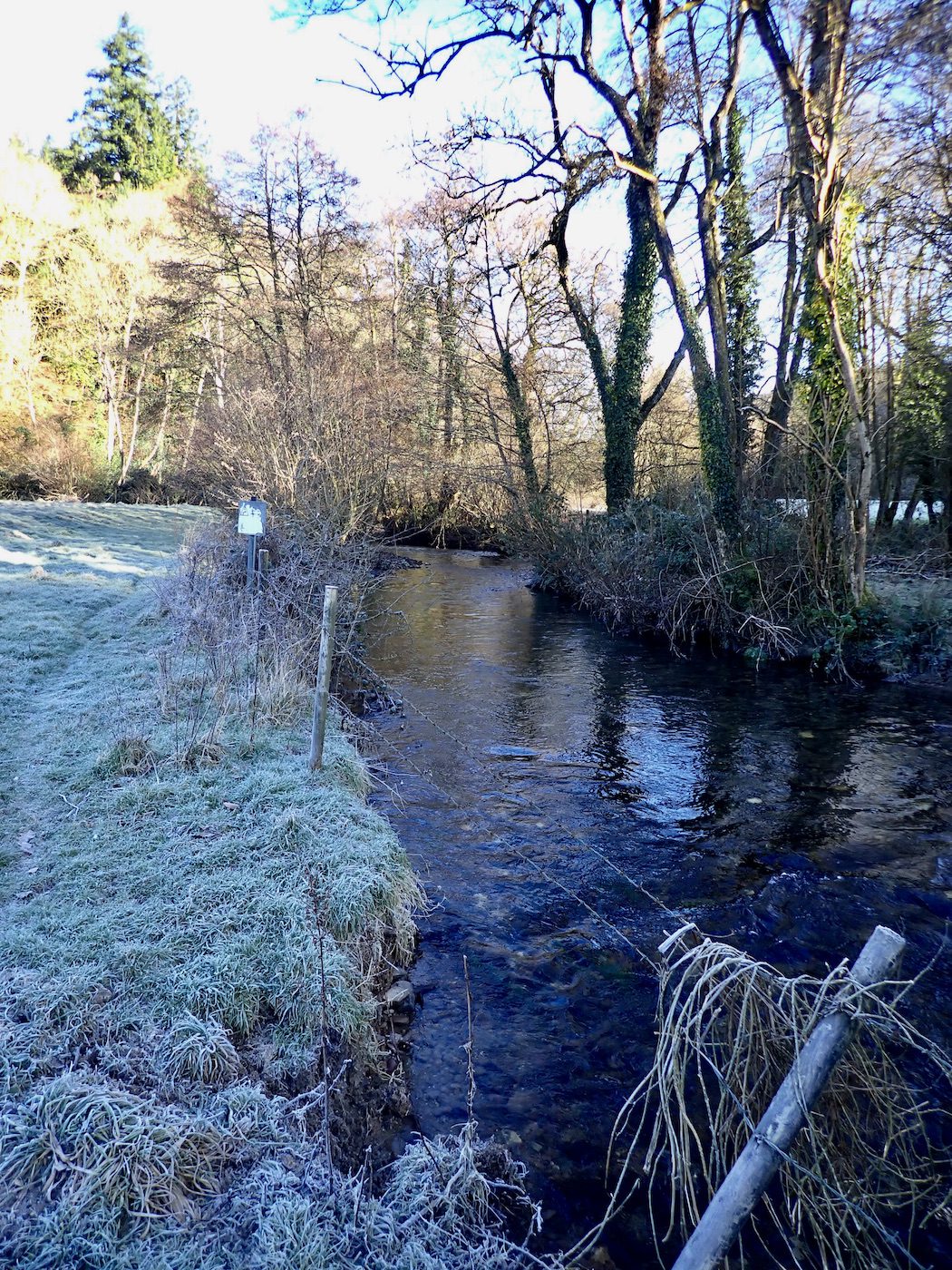
And so, the search began with two gold headed nymphs carefully flicked into the rushing stream. It is a delight to explore a new water especially if it is wild and characterful as this beat is.
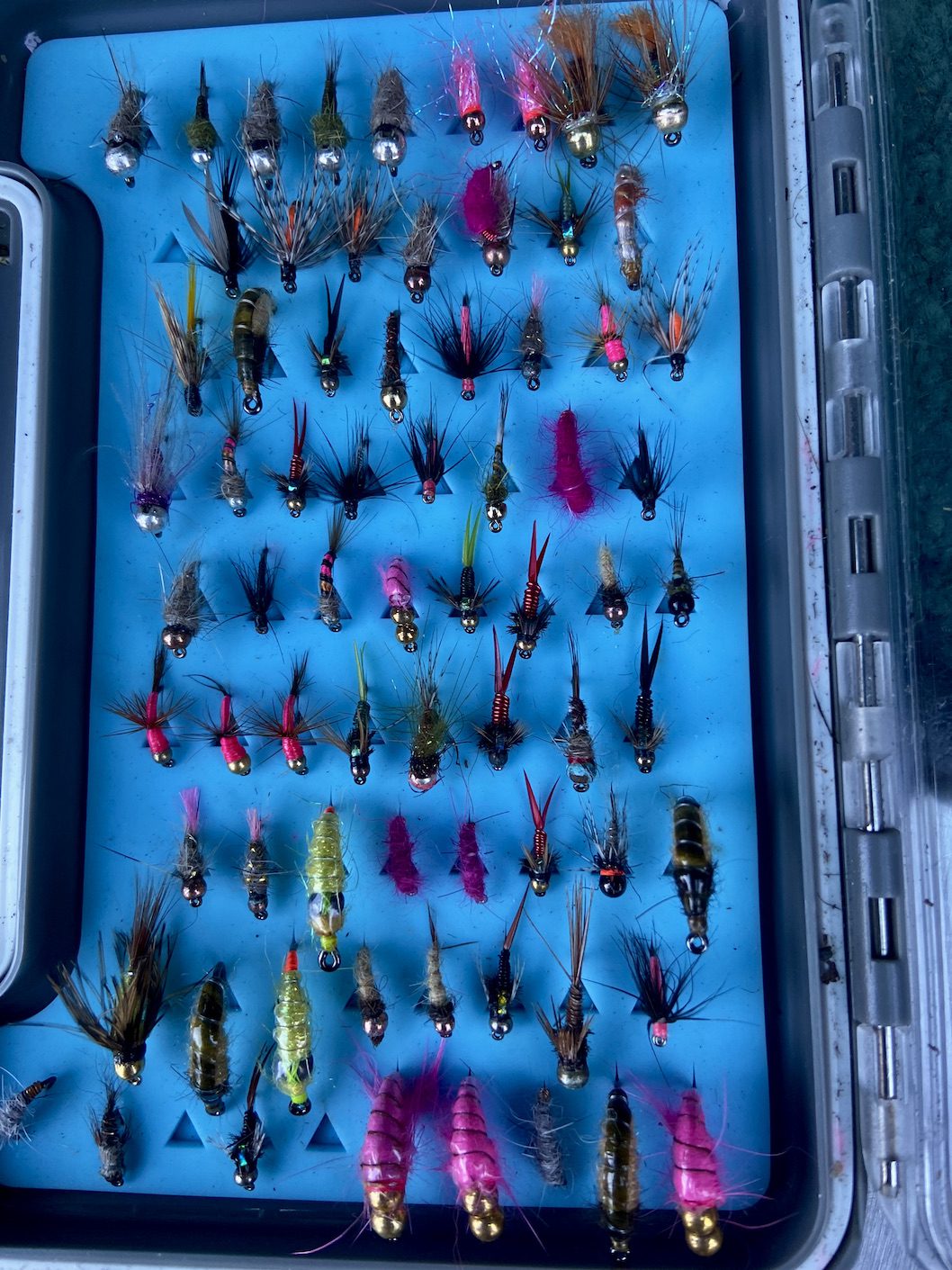
As I waded upstream a gamekeeper attired in traditional tweeds wandered across the field and made a friendly enquiry as to my success. I explained that it was my first visit to the water and that I hoped to catch a grayling. I don’t know if he was a fisher but he gave me encouragement telling me that there were some lovely looking pools up through the river valley.
I waded on clambering through the arch made by an ivy clad fallen tree. Icicles gripped the branches as they caressed the clear and icy water.

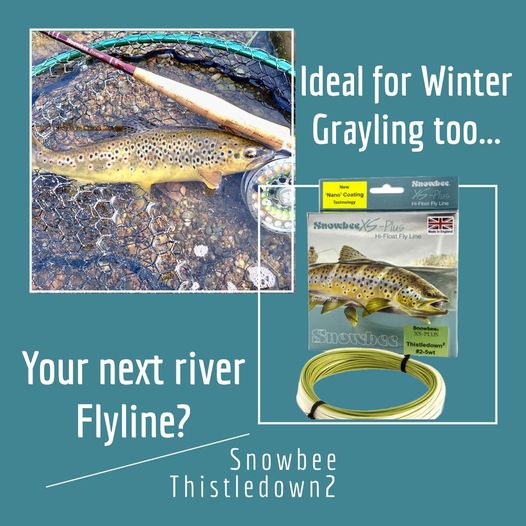
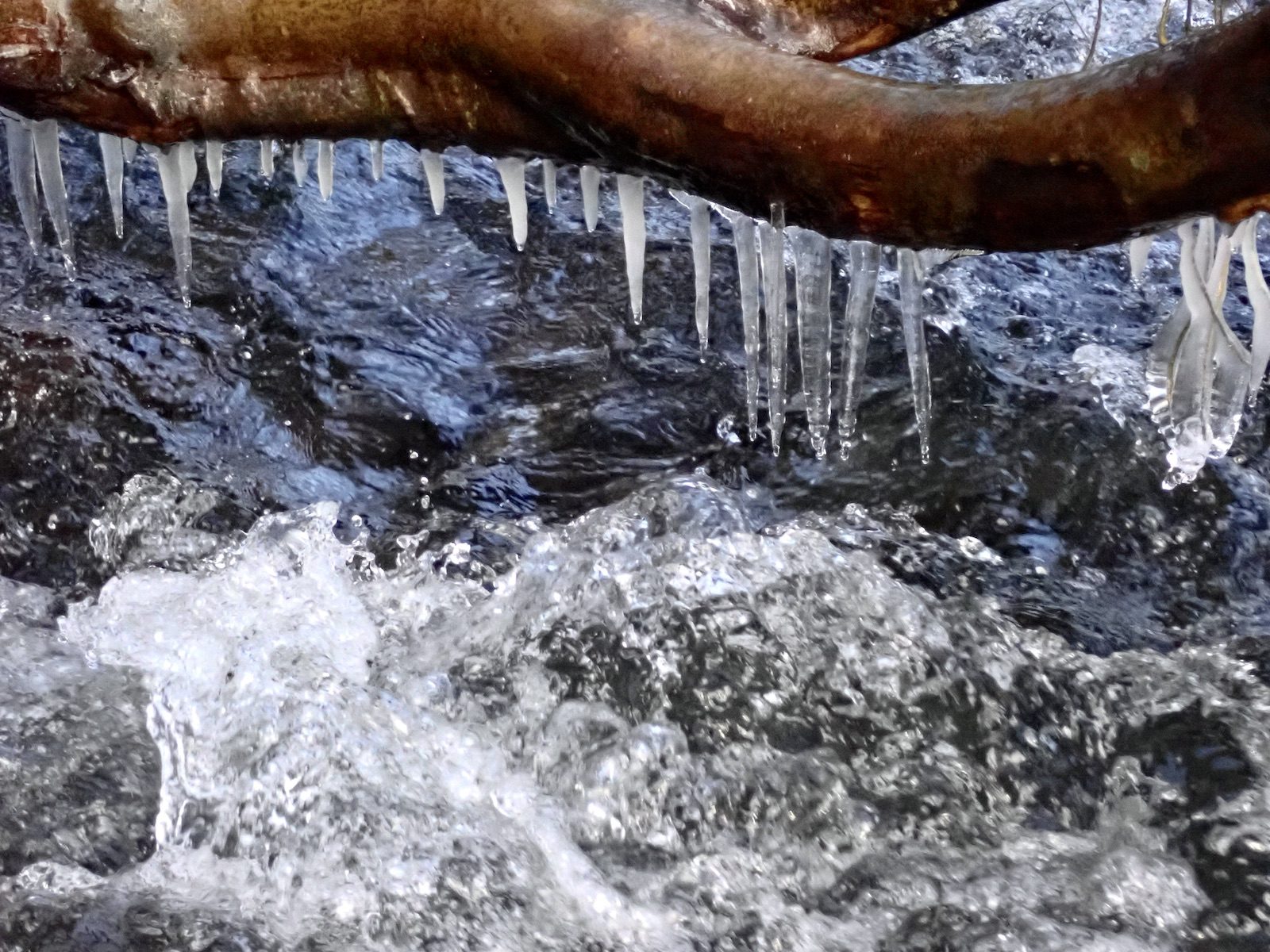
The river tumbled over a stony bed meandering through the valley. The signs of pheasant rearing were all around and I caught the occasional whiff of cordite from the shoot drifting in the cold frosty air.
I carefully made my way upriver searching each likely looking pool methodically. I was using a long rod adopting Euro Nymphing tactics. I focused intently upon the bright orange leader as it entered the water tightening the line each time it twitched as the flies bounced the rocky riverbed.
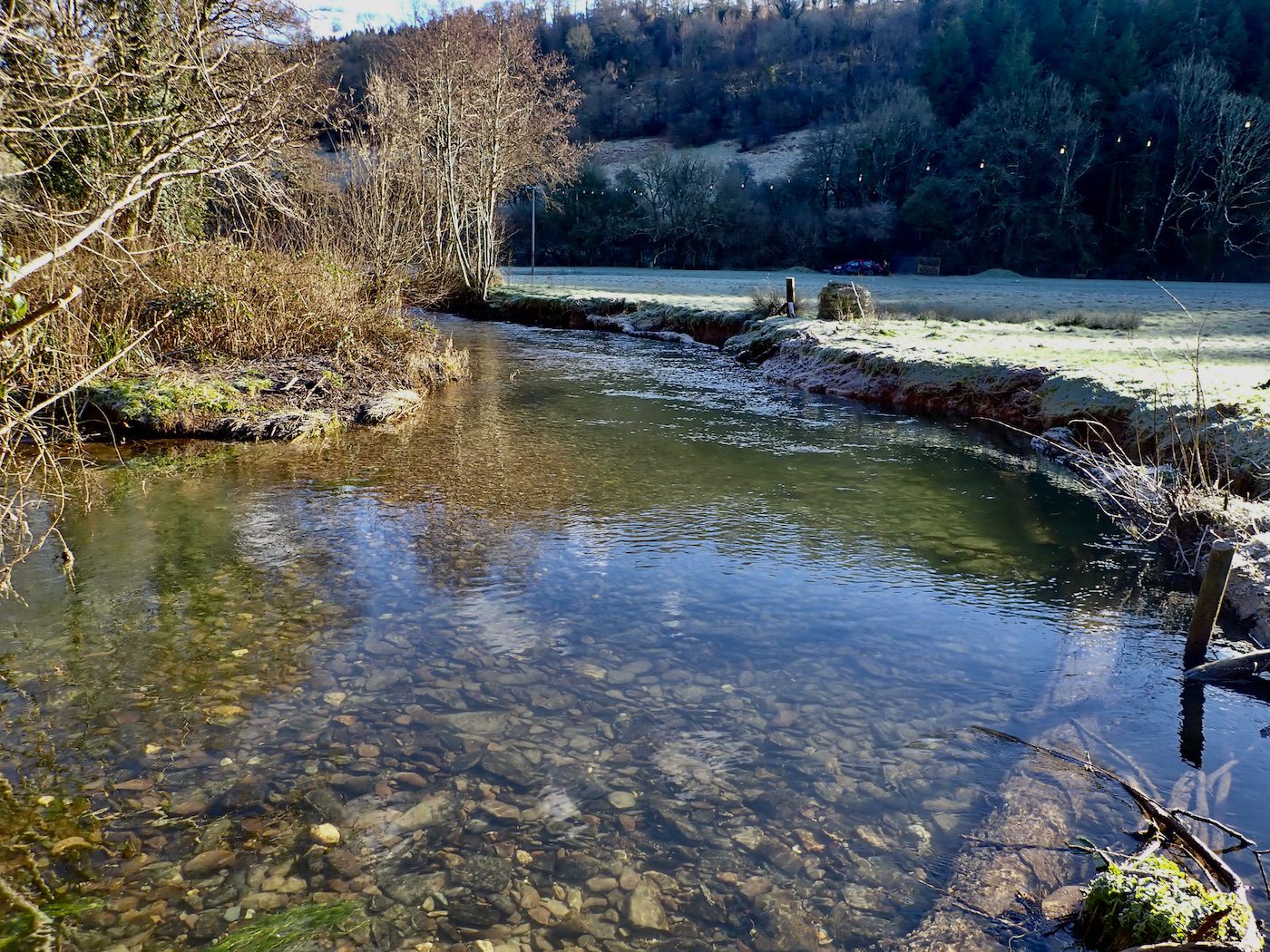
Luck was certainly on my side for the flies came free each time they snagged the bottom. And even the trees failed to rob me of the expensive nymphs that were tied to gossamer thin 3.5 b.s fluorocarbon that tested my ability to focus through lens of recently prescribed varifocals.
As I wandered the river bank I observed the occasional wren flitting through the branches and the ever present red breasted robin.
A buzzard mewed above the trees and cock pheasants strutted arrogantly in the frosty fields safe for a few days now and with just a week of the shooting season left likely to survive into the warmer days of Spring.
I peered into the flowing water hoping to glimpse my quarry but the river seemed devoid of fish. I knew that grayling were present yet connection seemed less probable as the number of fruitless casts mounted.
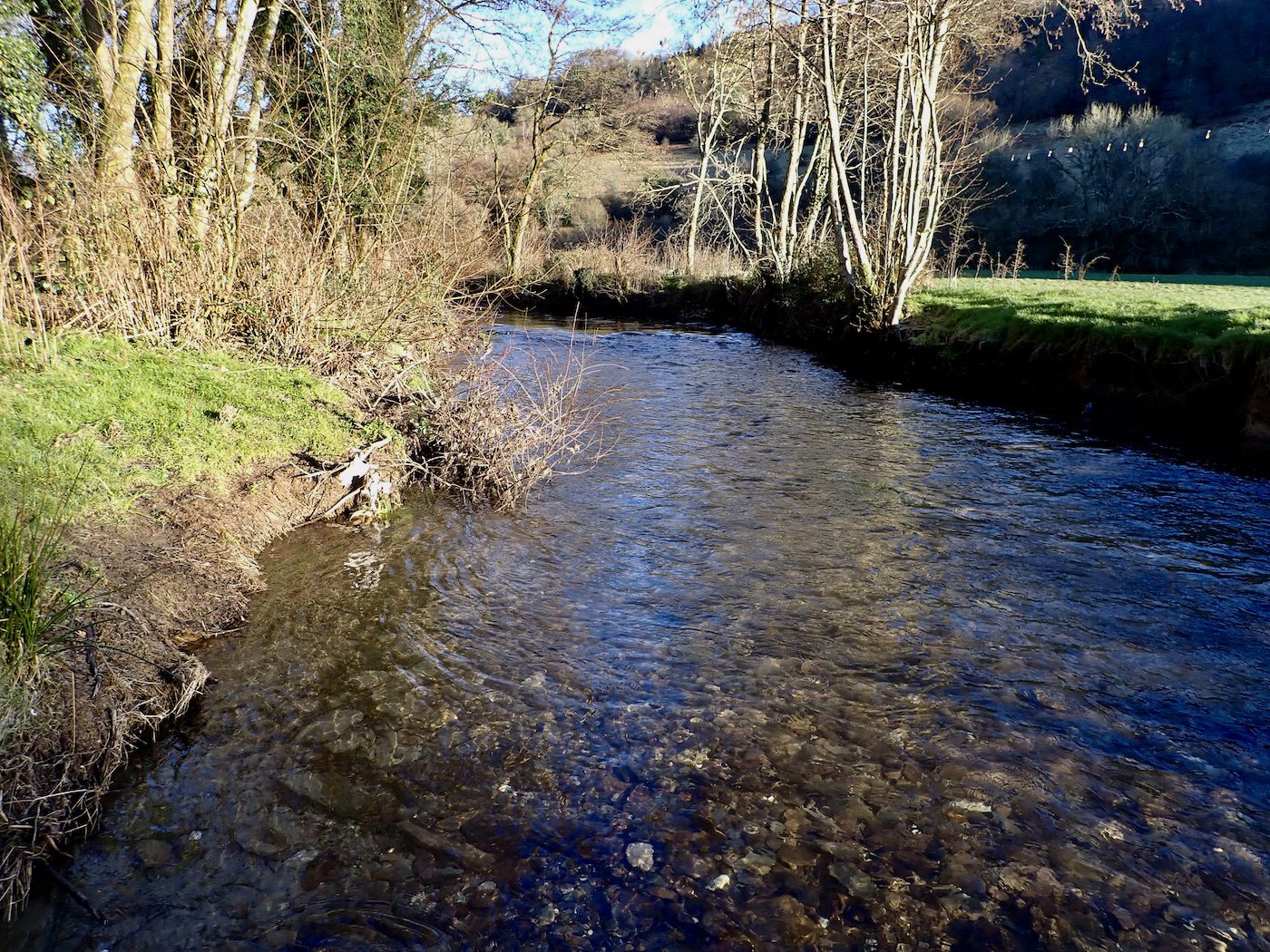
I flicked my flies into another likely spot struggling to see the leader as strong sunshine shone into my face. I perceived the pausing of the line and lifted the rod to feel the magical and delightful pulse of life. The grayling gyrated strongly in the water and I took a step downstream releasing the net from my back in anticipation. The prize was just a few inches from the nets frame when the hook hold gave, the silver fish disappearing back into the clear tumbling water.
Would this be my only chance? Grayling are shoal fish so I figured that there could be more in this small pool. I retraced my steps dropping the flies into the pool again. After a couple of casts, the line tightened and after a short tussle I netted a grayling of perhaps 8oz.
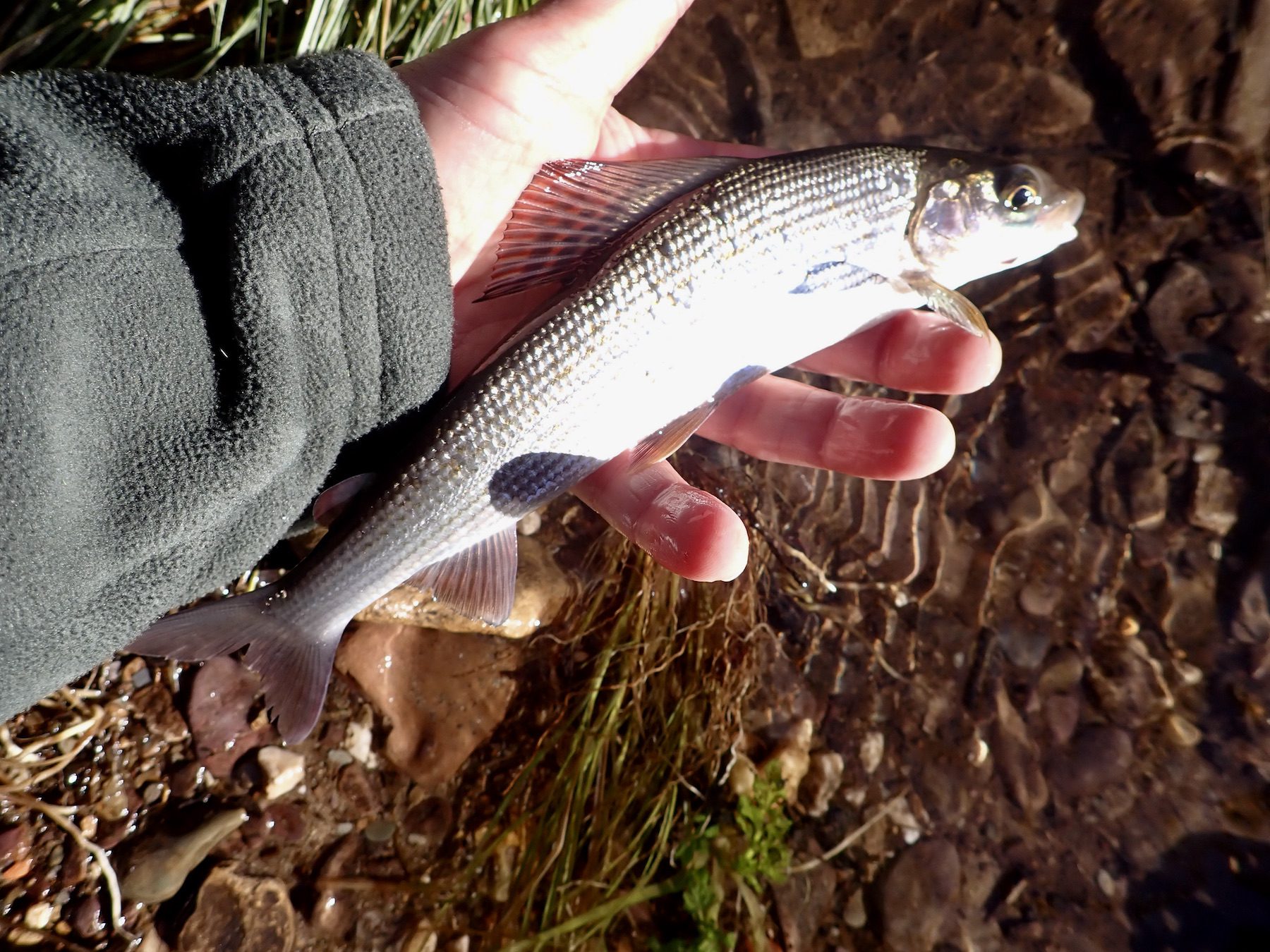
I admired silver flanks and crimson dorsal fin, grabbing its portrait before letting it flip away into its home water.
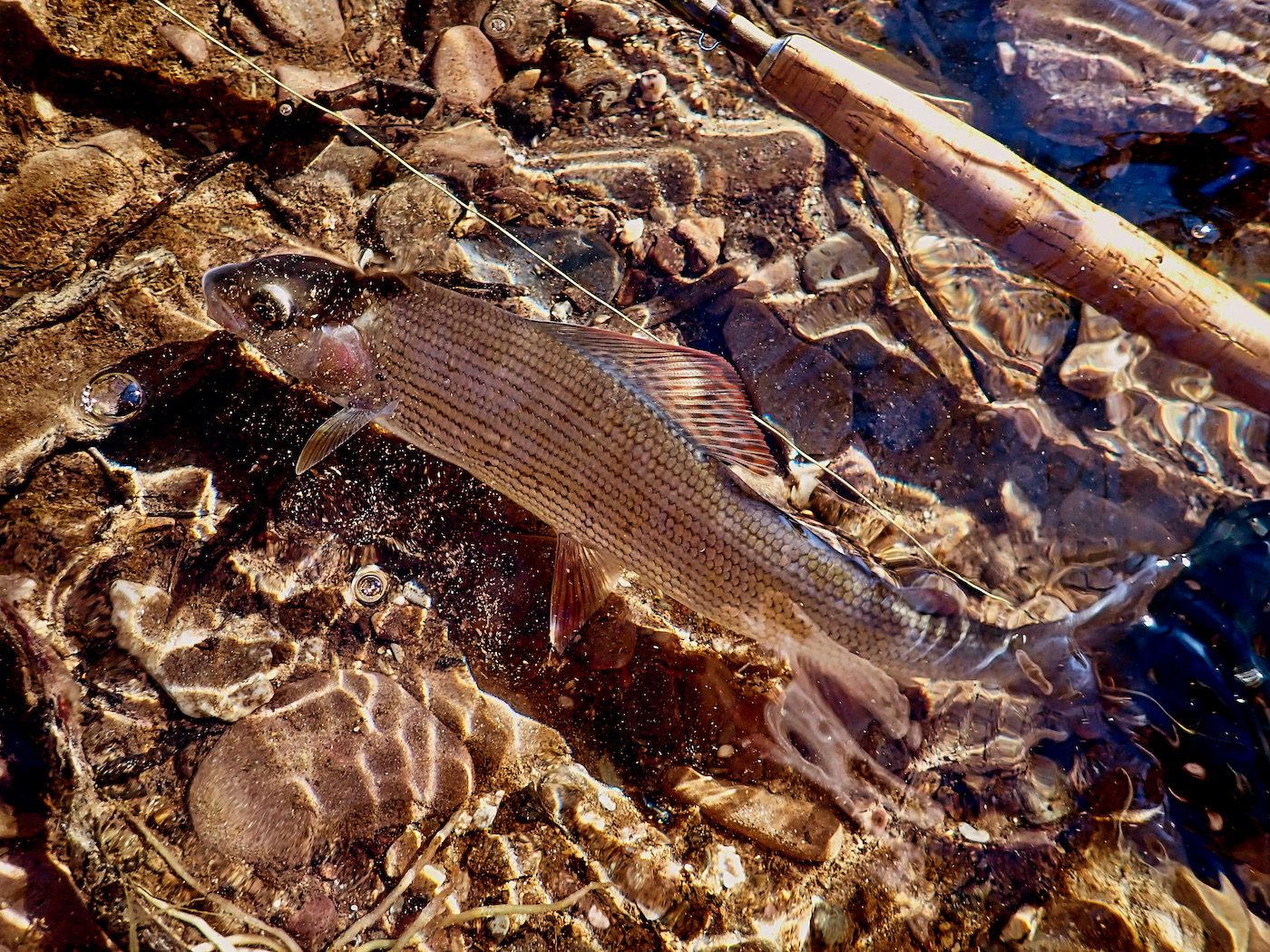
I fished on contentedly a blank averted and confidence restored so that I fished with belief and conviction. Covering some promising lie’s, I strolled until I came close to the top of the beat.
Woodsmoke drifted up from the chimneys of cottages across the valley. I savoured the rural scene as I worked my way back downstream revisiting promising pools. In a deep slowly moving pool the leader stabbed down and once again I connected to another grayling. This one was bigger than the first a fish of perhaps 12oz that was once again admired before slipping back into the Haddeo.
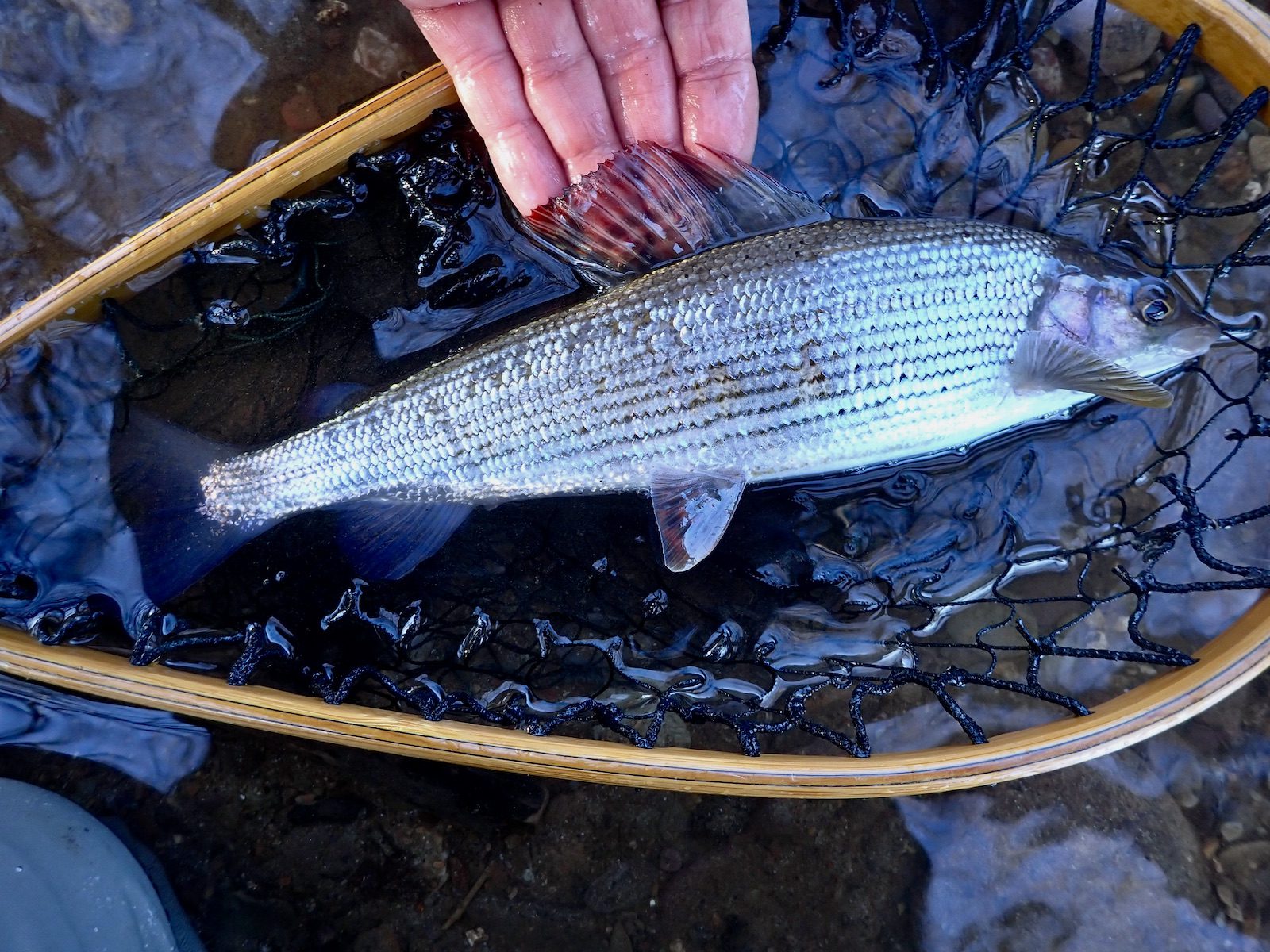
As the sun began to sink lower into the sky I fished on down with no further action. I reached the bottom of the beat and clambered over a style that allowed access to the river beside an old stone bridge. I descended into the river and waded beneath the old bridge contemplating the cars above racing around the troubled modern world.
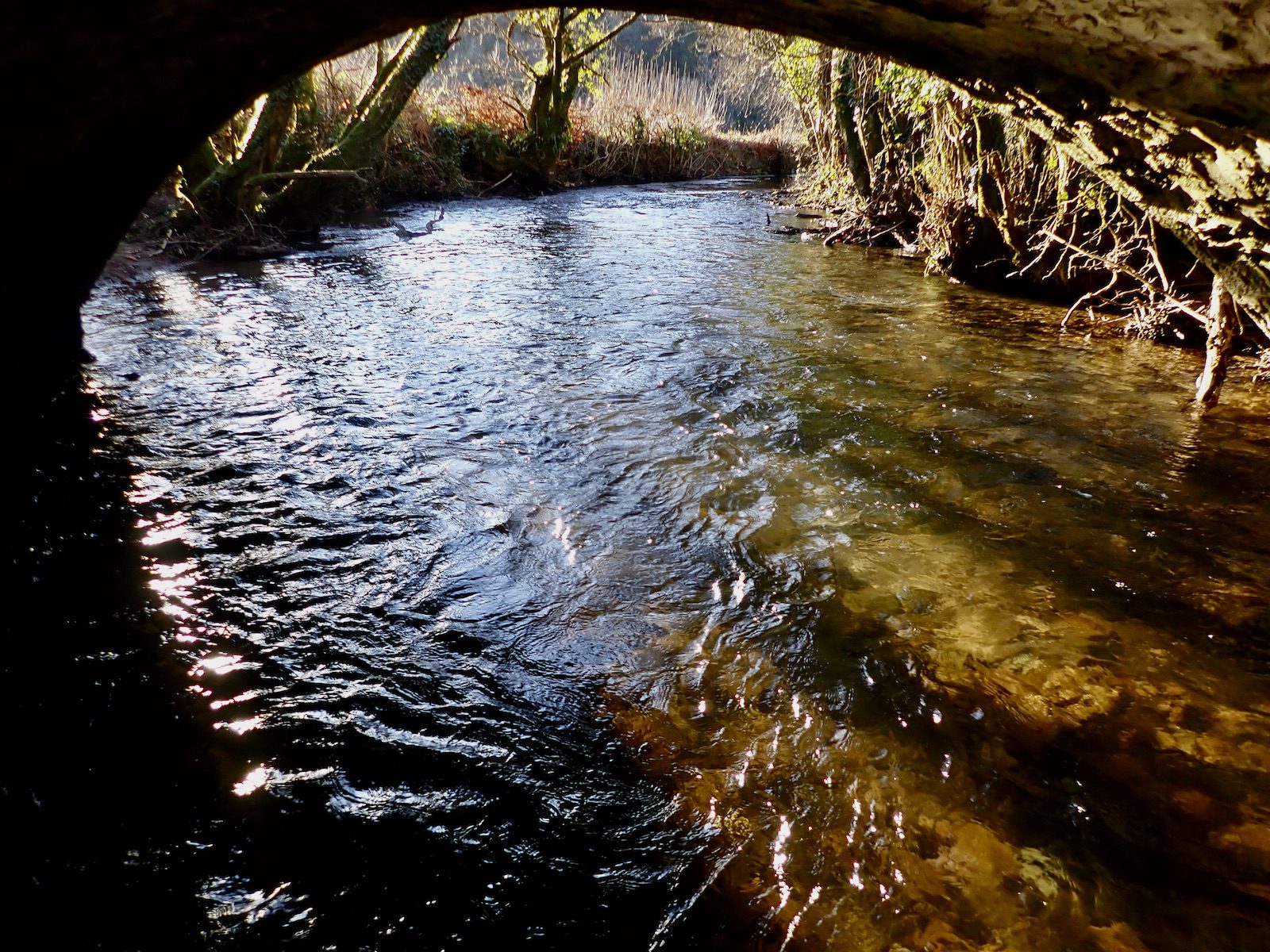
I arrived back at the car poured hot coffee from my flask and reflected upon another perfect day beside a meandering stream.
A STORMY START TO THE NEW YEAR
There is something special about the first fishing trip of a New Year. Perhaps it is the expectation of a new journey to the water’s edge, a fresh start, a time to recalibrate.
This year’s trip proved memorable in part due to the influence of Storm Henk the latest of many named storms over recent months.
The trip was in truth as much a social session as a serious fishing trip starting with a Full English in The Globe Inn at Sampford Peverel conveniently situated a short distance from the Tiverton canal. Keith Armishaw, Lee Armshaw, Dr Mark Everard, Dominick Garnett and two other chaps, one called Sid and the other Mark.
The Met Office promised rain and an amber warning of wind! After negotiating watery roads, we had all arrived safely by just after 8.00am and tucked into an ample breakfast along with fresh coffee. The breakfast chat agenda was mostly of piscatorial matters and of course a few diversions into the tragic state of the world. After planning how to put this right we headed for the muddy waters of the canal.
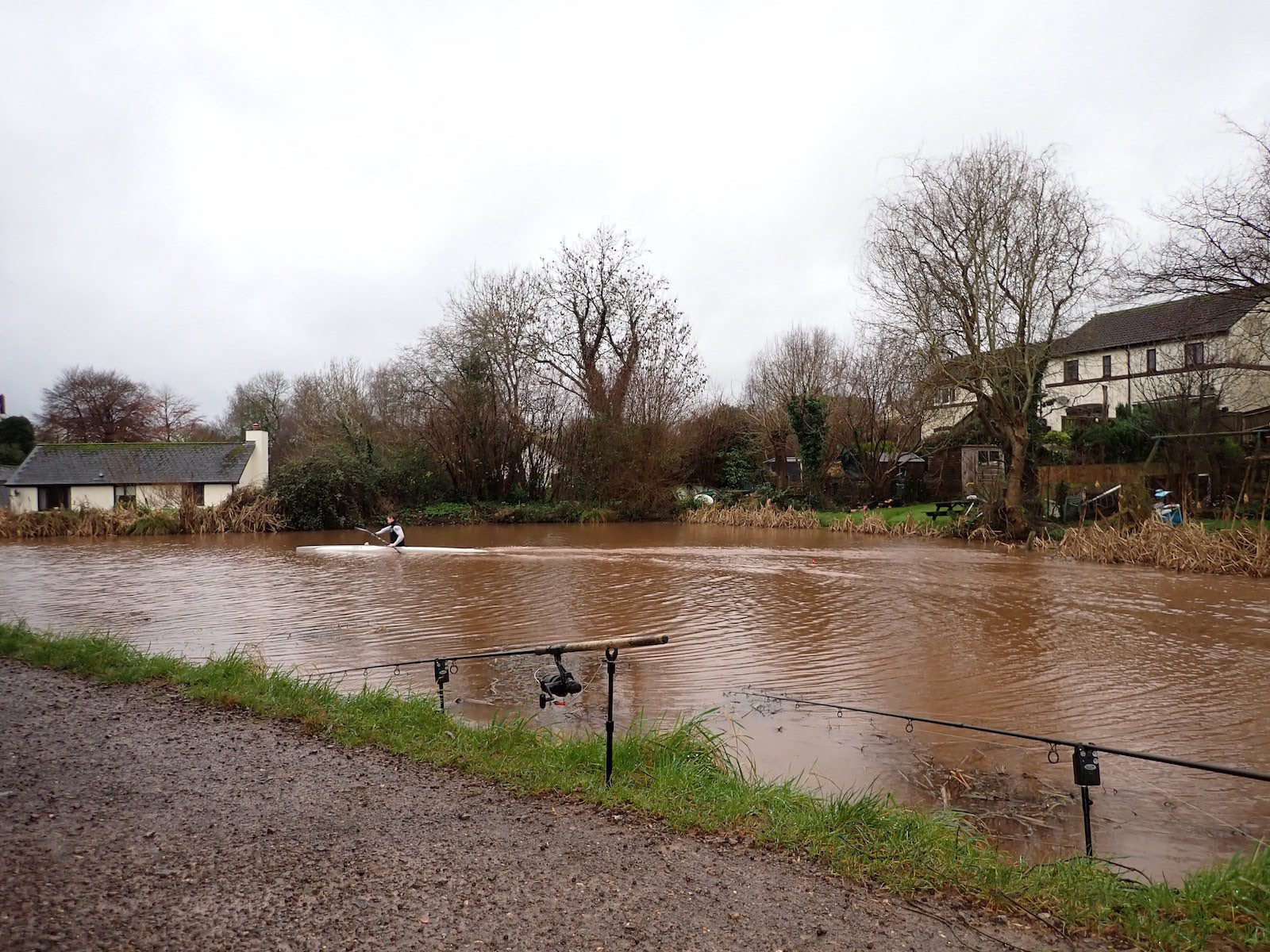
Each of us had a plan on how to catch a few fish. I had decided to target pike figuring that a smelly dead-bait fished beneath a bright crimson float would give a good chance of a bent rod. Others chose to offer maggots, bread and lures.
The canal water certainly reflected the recent persistent rainfall and water clarity was undoubtedly not good. I chose to fish in the wide basin close to the pub and set up beside a hedge that gave some shelter from the gusty wind and drizzle.
The two floats indicated the position of the baits and I planned to keep recasting every twenty minutes or so to areas that I had a hunch could produce.
The rest of the party headed further along the canal to areas that had a good track record.
After fifteen minutes my right hand float bobbed and started to slide along the surface. I picked up the rod allowed the line to tighten before winding into the fish. I was using a single circle hook and cursed when the fish that felt reasonable came adrift after a few seconds.
I rebaited and flicked out a fresh bait. The wind strength was undoubtedly increasing with strong gusts bowing the trees. The electric blue of a kingfisher flashed past and patches of blue started to show in the Western sky above the village church. The church tower and resonate tolling of the bell within somehow seemed to add a sense of perspective as we embarked upon the journey into a New Year.
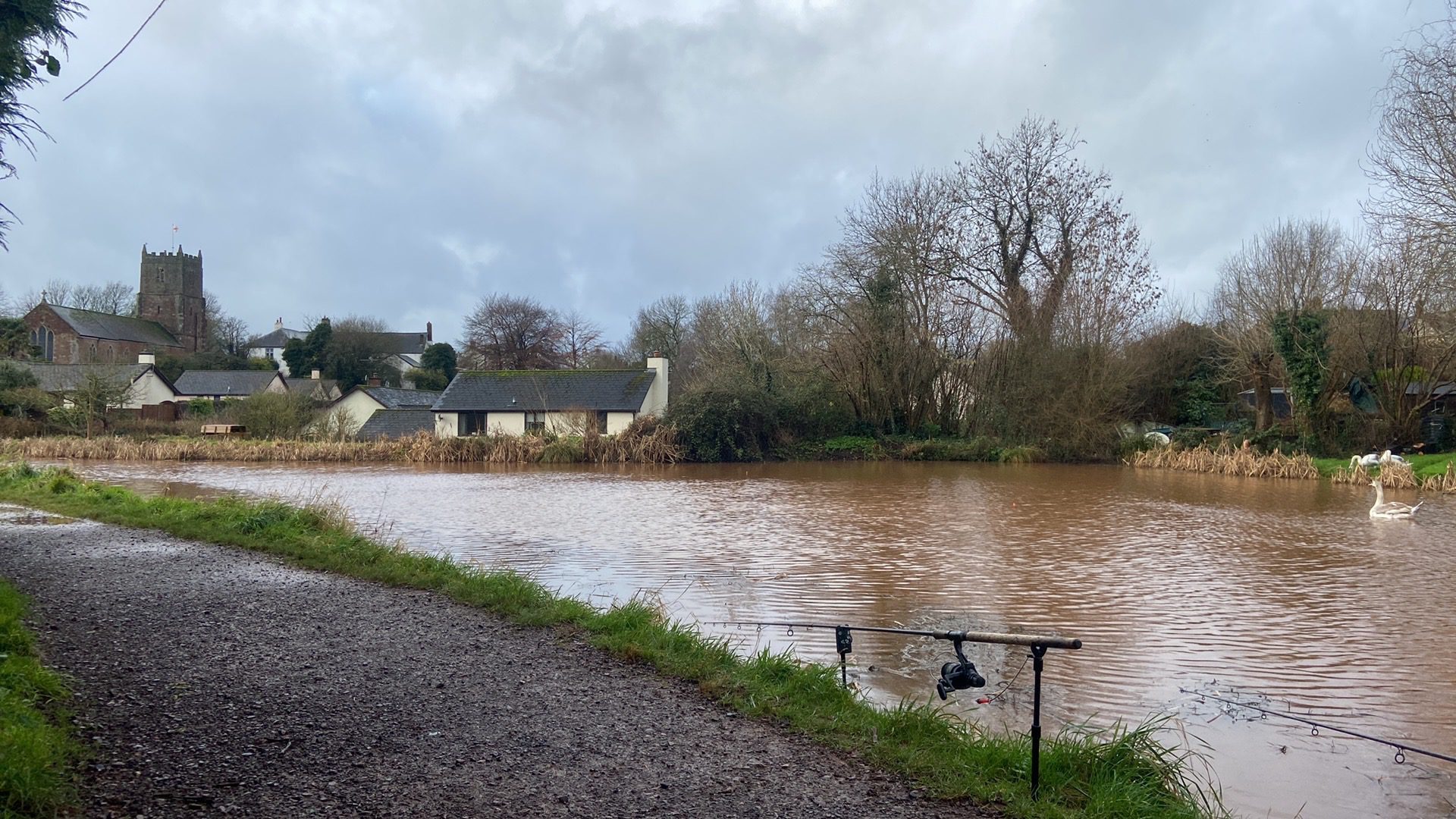
Dom came over for a chat and I told him of the lost pike. As we chatted the float on the right hand rod bobbed and the float again slid slowly away. This time the hook held and a pike of around 7lb graced the net. A pleasing start to the year.
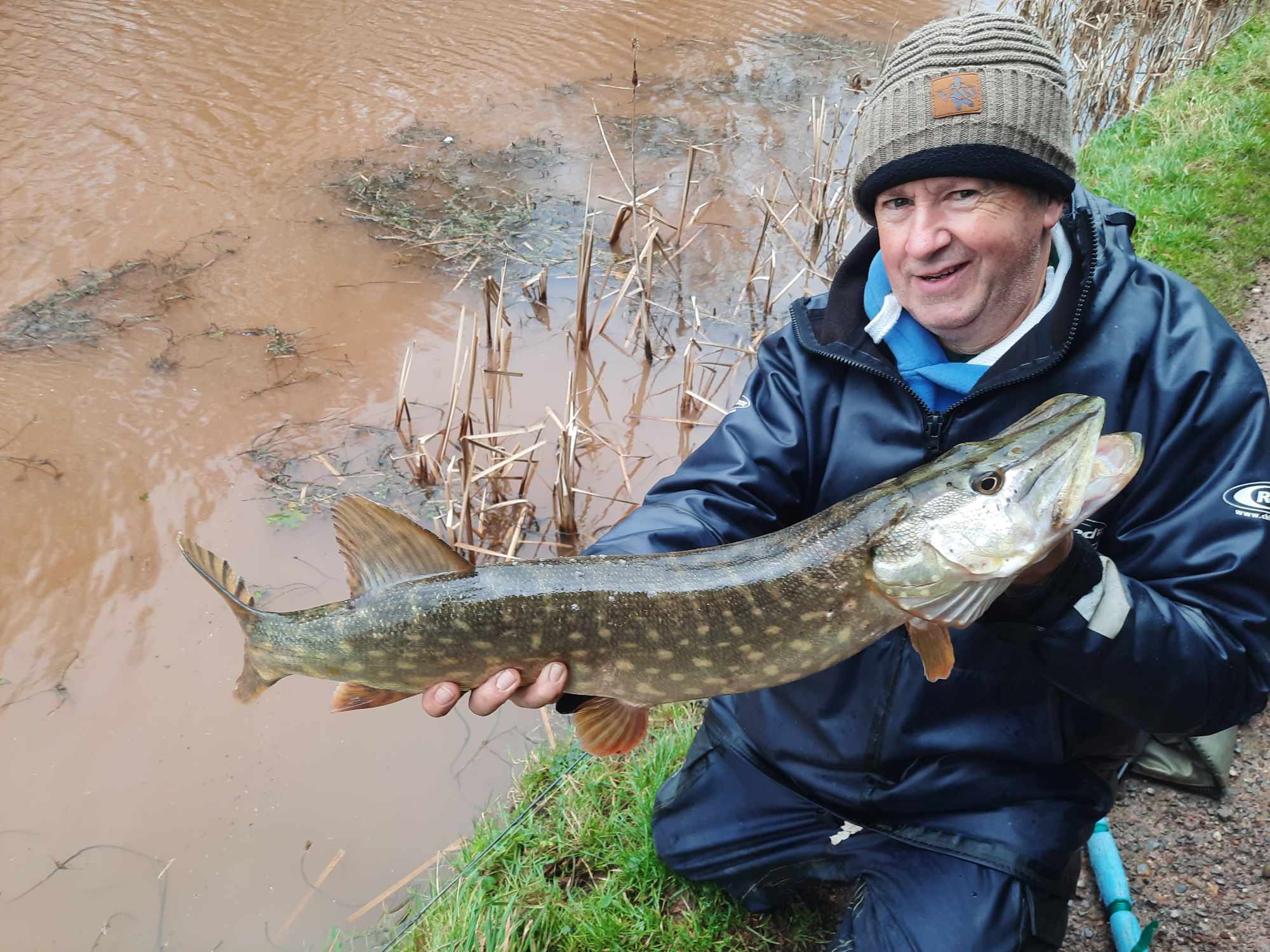
By now the wind strength was increasing noticeably with some very strong gusts. Dom had spoken with Lee who had found some clear water on the canal at a location a mile of so away. As heavy rain was threatened and the storm intensified we decided upon a coffee break and a move to find the clearer water.
As we headed to the pub for a hot coffee the wind gusts were exceptional and we heard later that 80mph gusts had been recorded 20 miles away at Exeter!
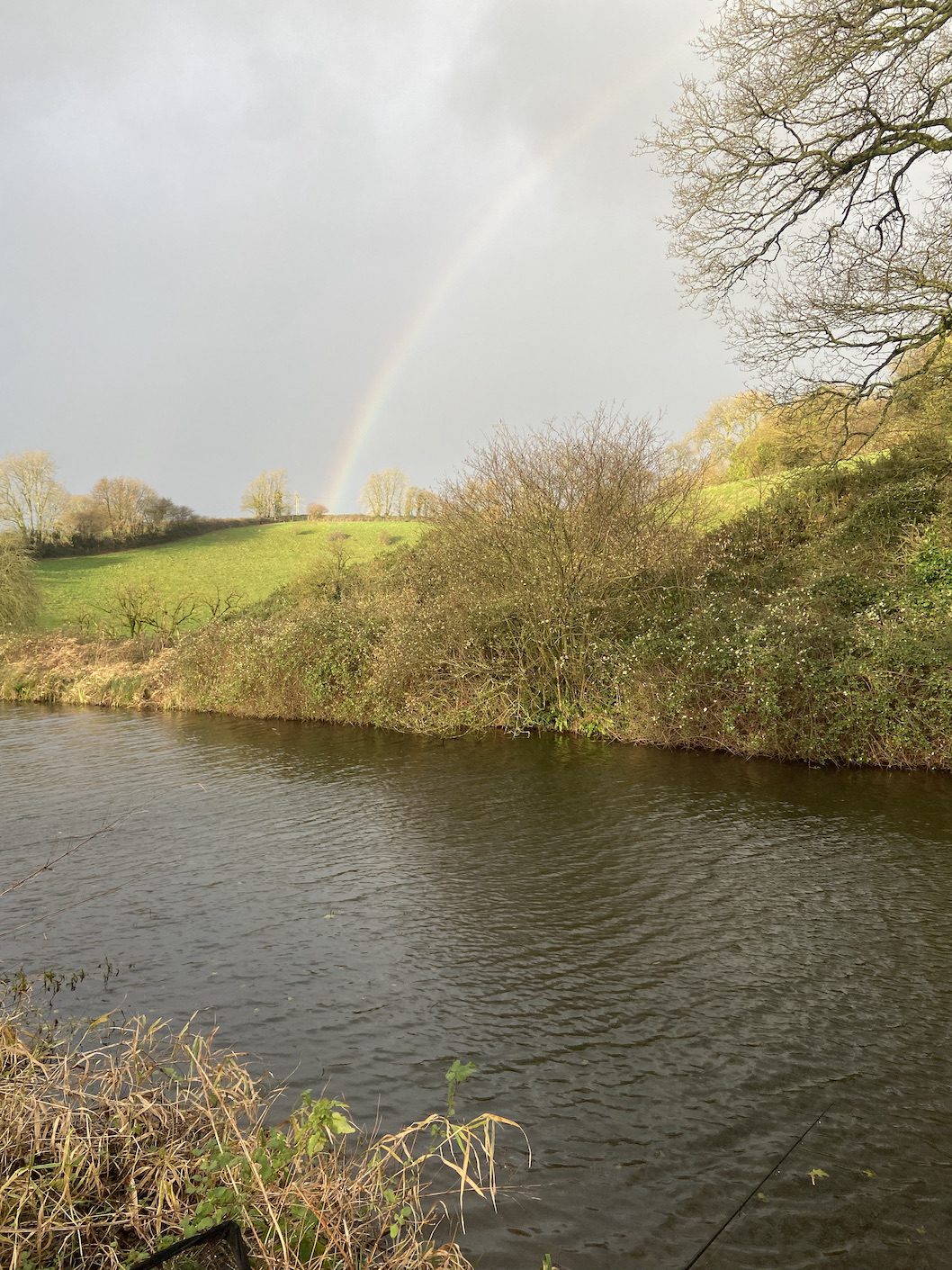
Early afternoon and we set up a mile or so along the canal to be further buffeted by the howling gale. At least the rain had passed and brighter skies illuminated the scene. The water clarity here was good which gave far more confidence. I put out a bait near to an overhanging tree and started to prepare the second rod. To my amazement the float bobbed and I was in action landing a jack of 3lb before getting the second bait into the water.
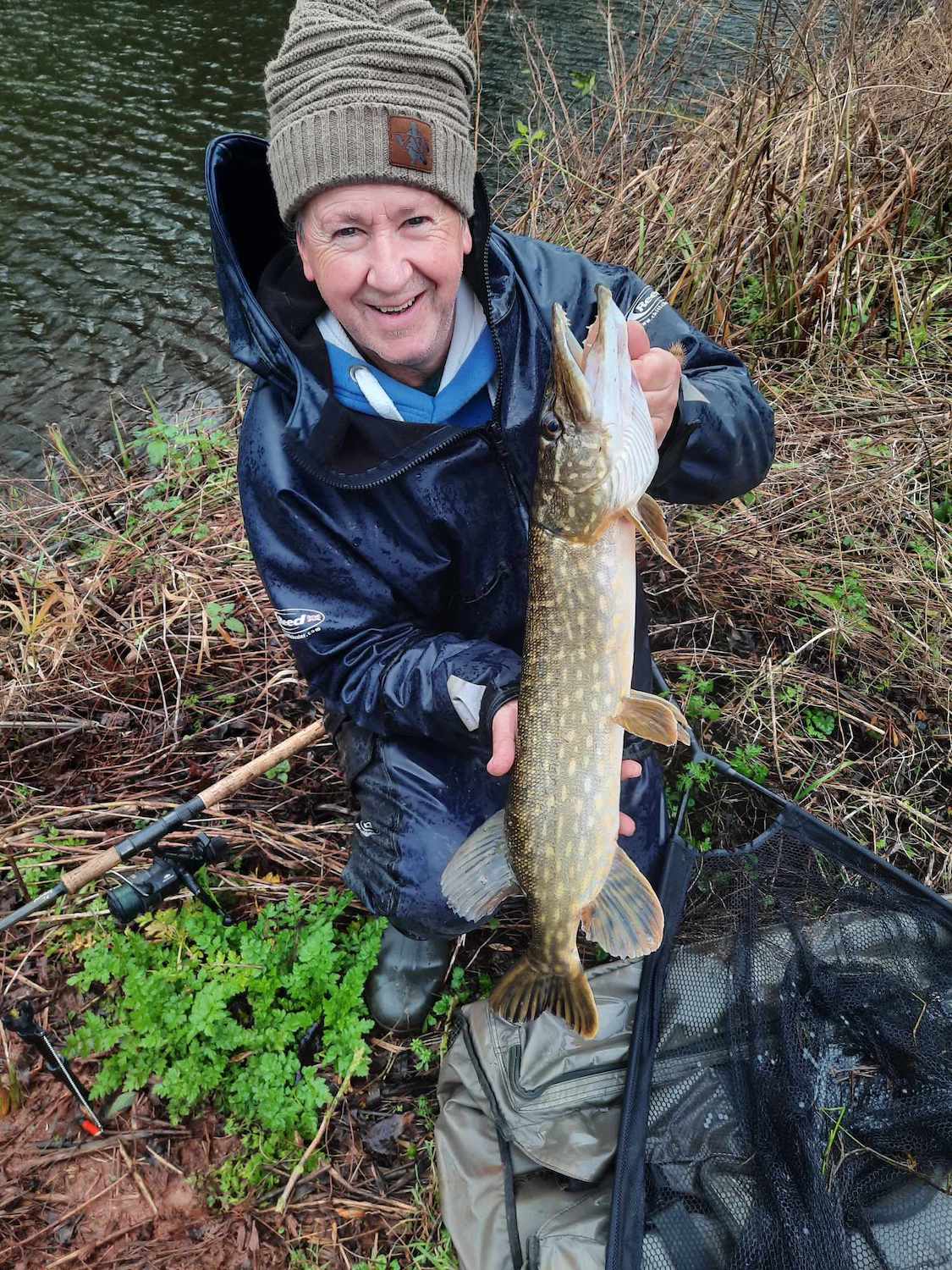
I put the bait back into the same spot and made brief contact with another pike after ten minutes or so.
The rest of the afternoon passed by the howling gale swaying the trees. I savoured the winter scene and the rural landscape.
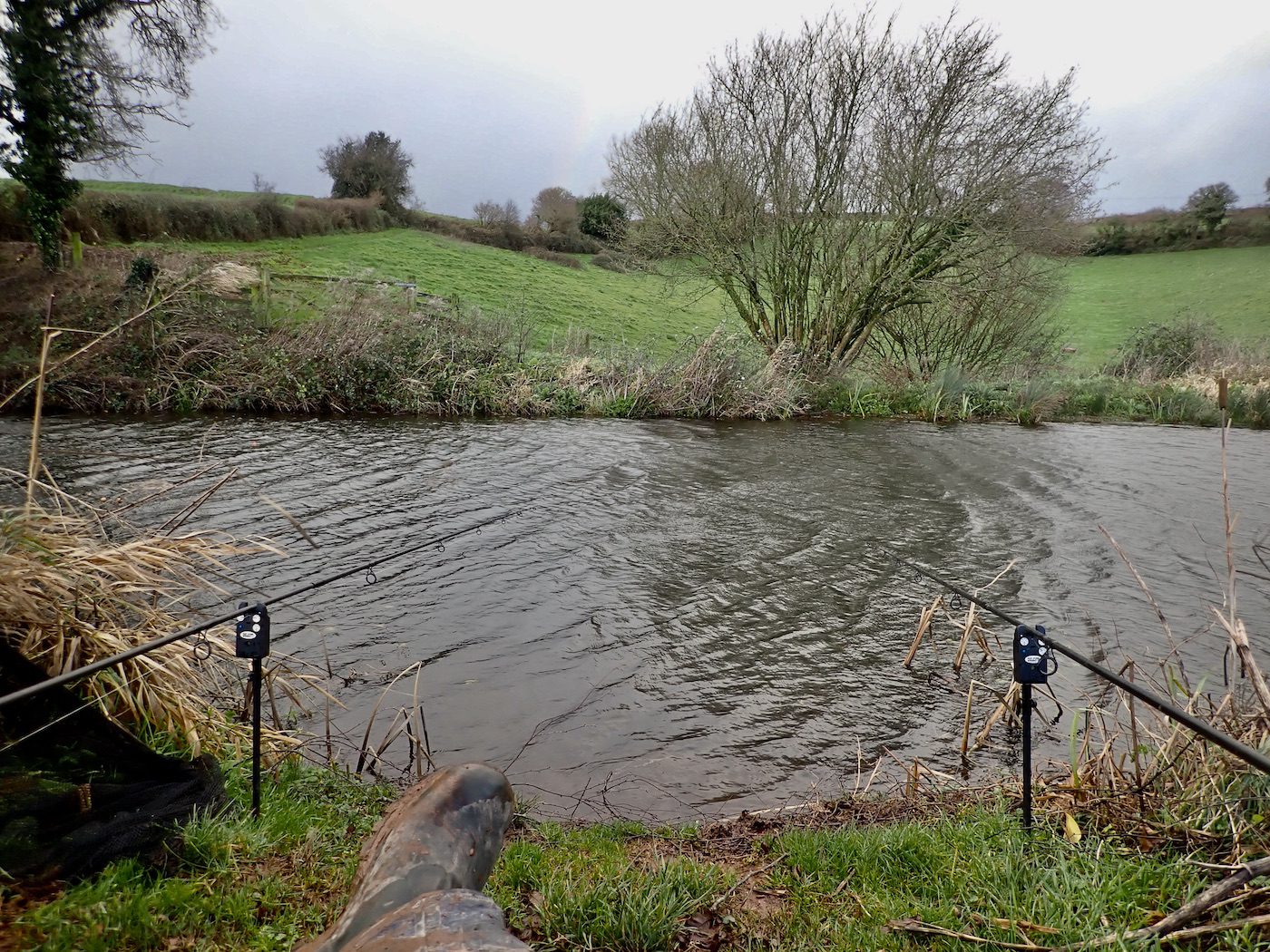
The light slowly ebbed from the day and we all packed away trudging back along the canal towpath to compare notes. A few perch and roach had been tempted along with a small jack.
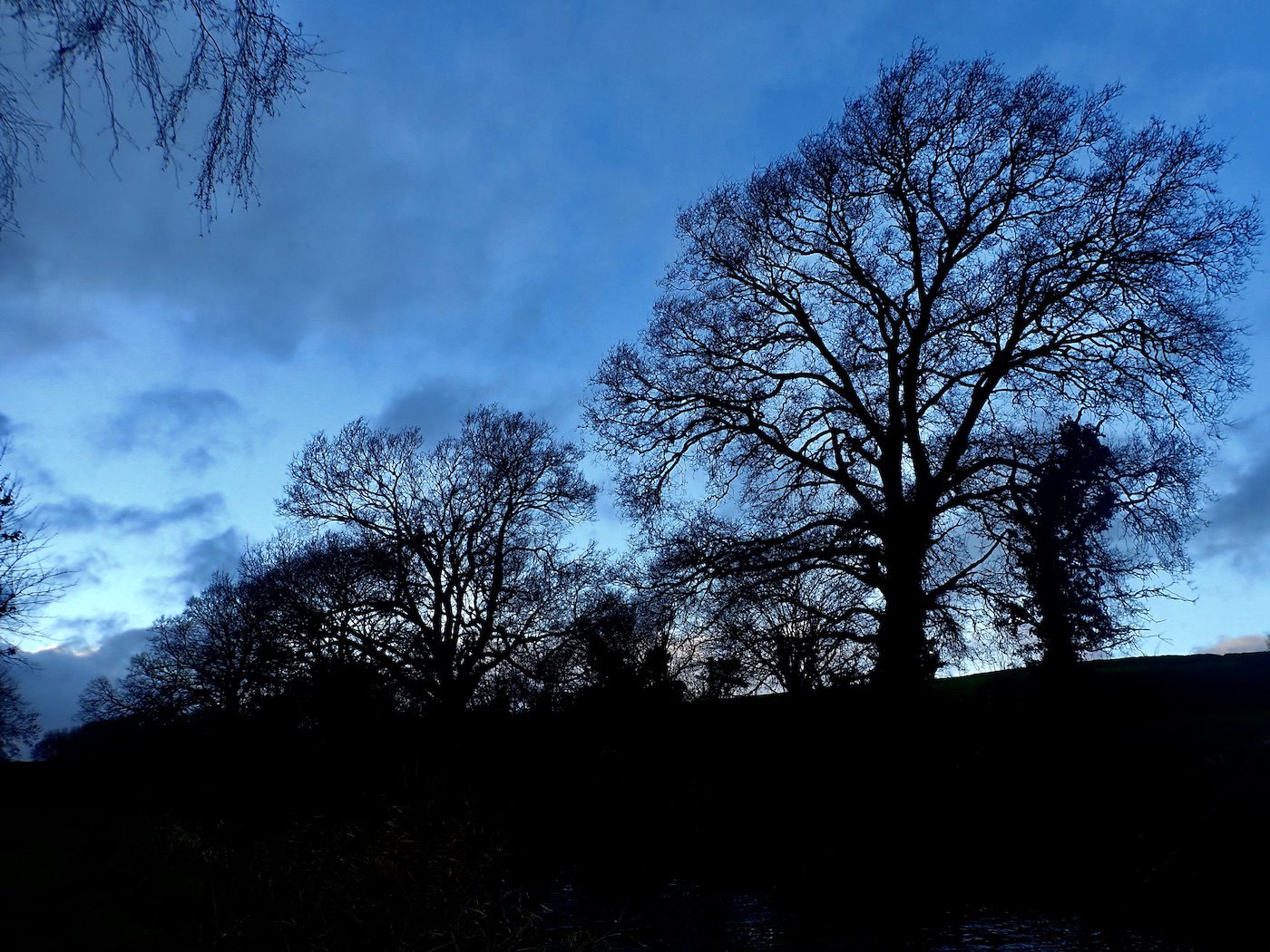
We reconvened in the Globe for a final coffee and chatted about the day and past and future forays. We were all upbeat and had relished our day beside the water despite the rather meagre results. Plans to return in the warmer more tranquil days of summer in search of tench and rudd were discussed with a youthful optimism that was refreshing considering the fact that several of us were semi-retired.

Limits for all at Bulldog on a cold misty morning
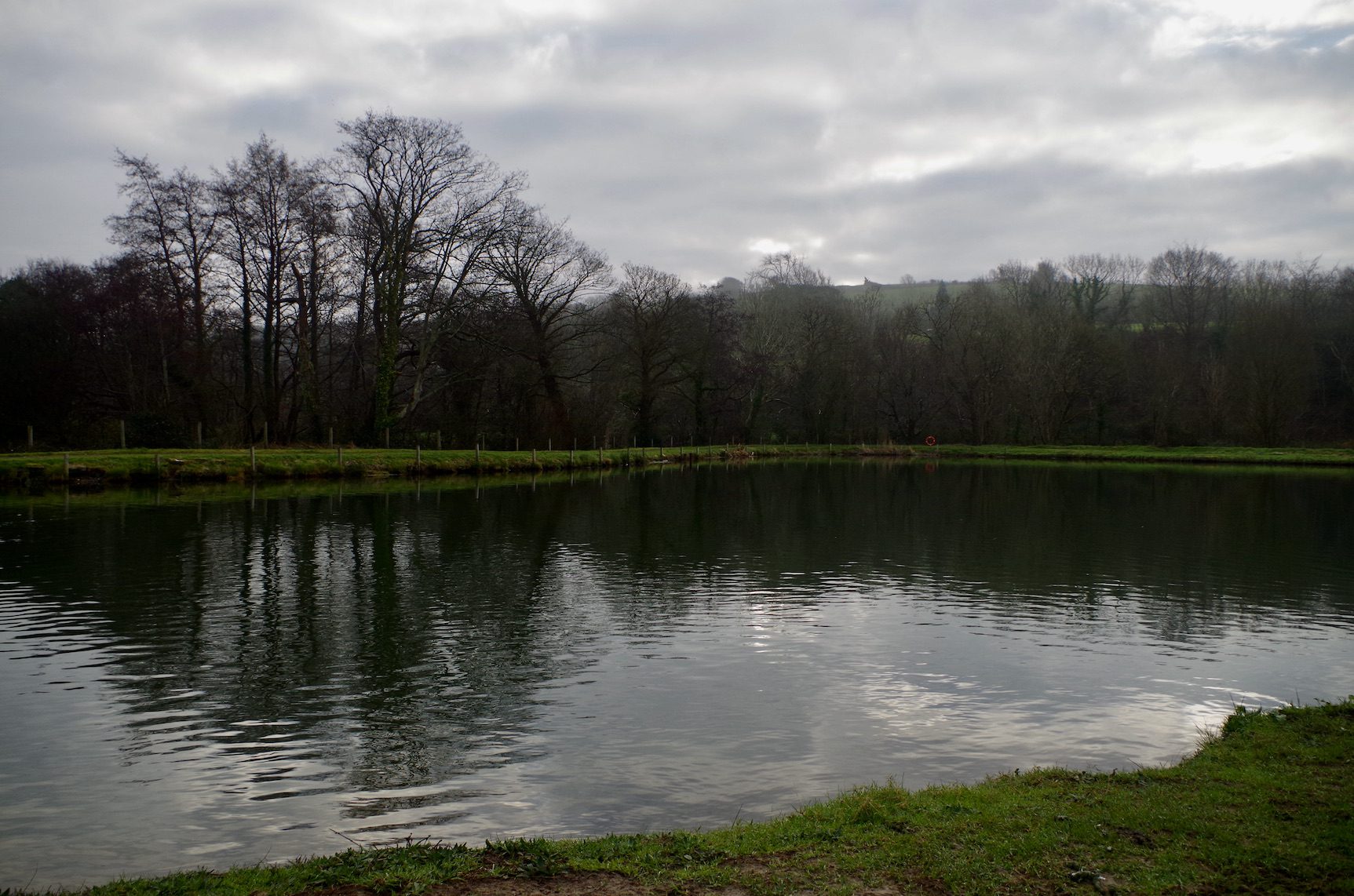
Members of Wistlandpound Fly Fishing Club assembled at Bulldog Fly Fishery on a calm cold winter’s morning. The bare trees of winter silhouetted against the misty morning light.
The friendly Winter Challenge competition was due to start at 10.00am and lines touched down on the calm lake surface as members cast their lures.
After half an hour I was surprised that I had not had a take as I searched the water with a damsel nymph fished in conjunction with an Intermediate Snowbee Line. As I looked around the lake at fellow competitors I was surprised at the lack of bent rods.
I guessed the fish would eventually switch on and this proved correct as members rods soon started to bend as the lakes residents started to feed.
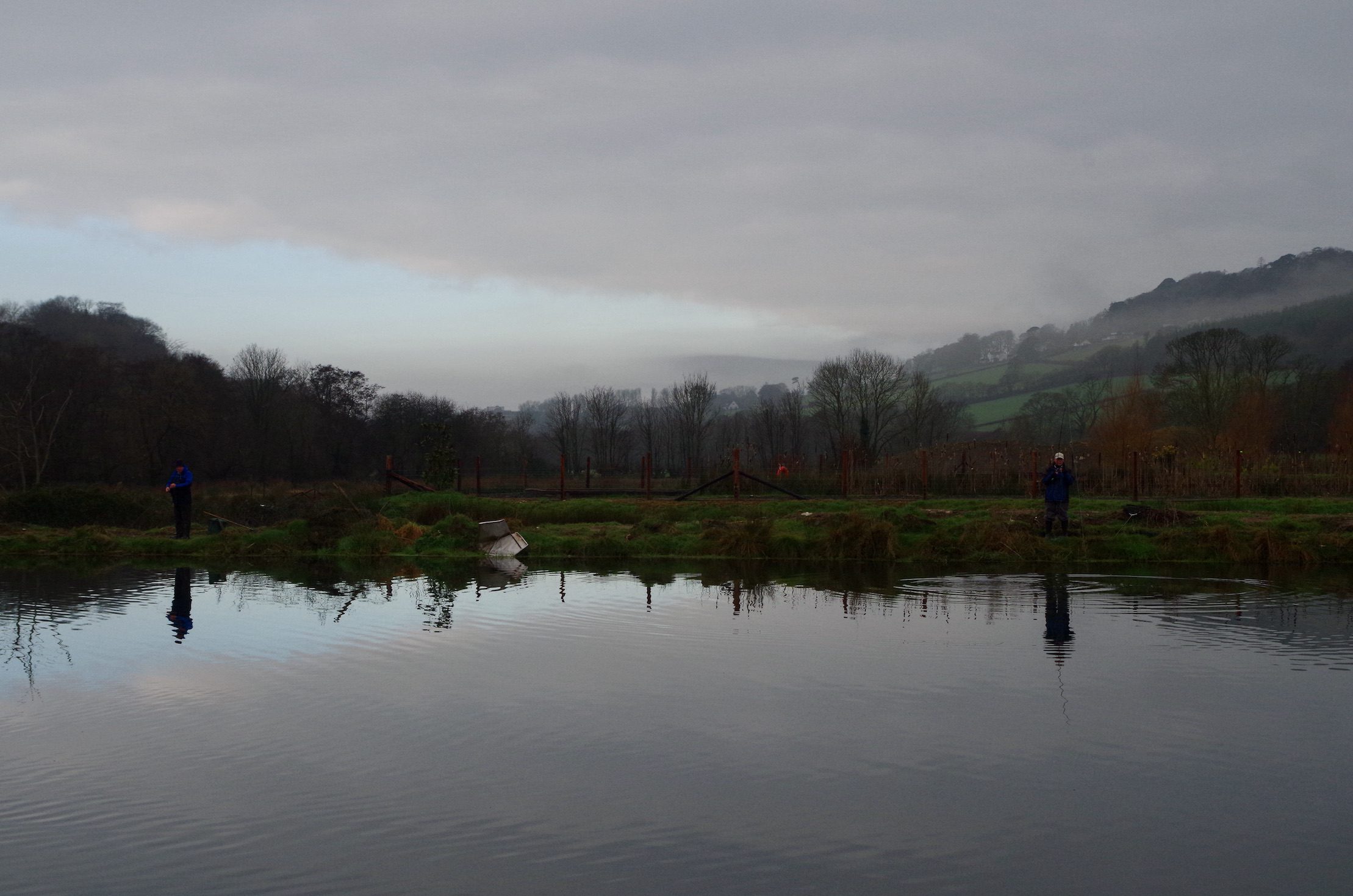
Just as I pondered upon changing to a different fly a good sized rainbow appeared in the clear water and engulfed the fly as I was about to lift it from the water. After a spirited tussle my first trout of the day was safely netted.
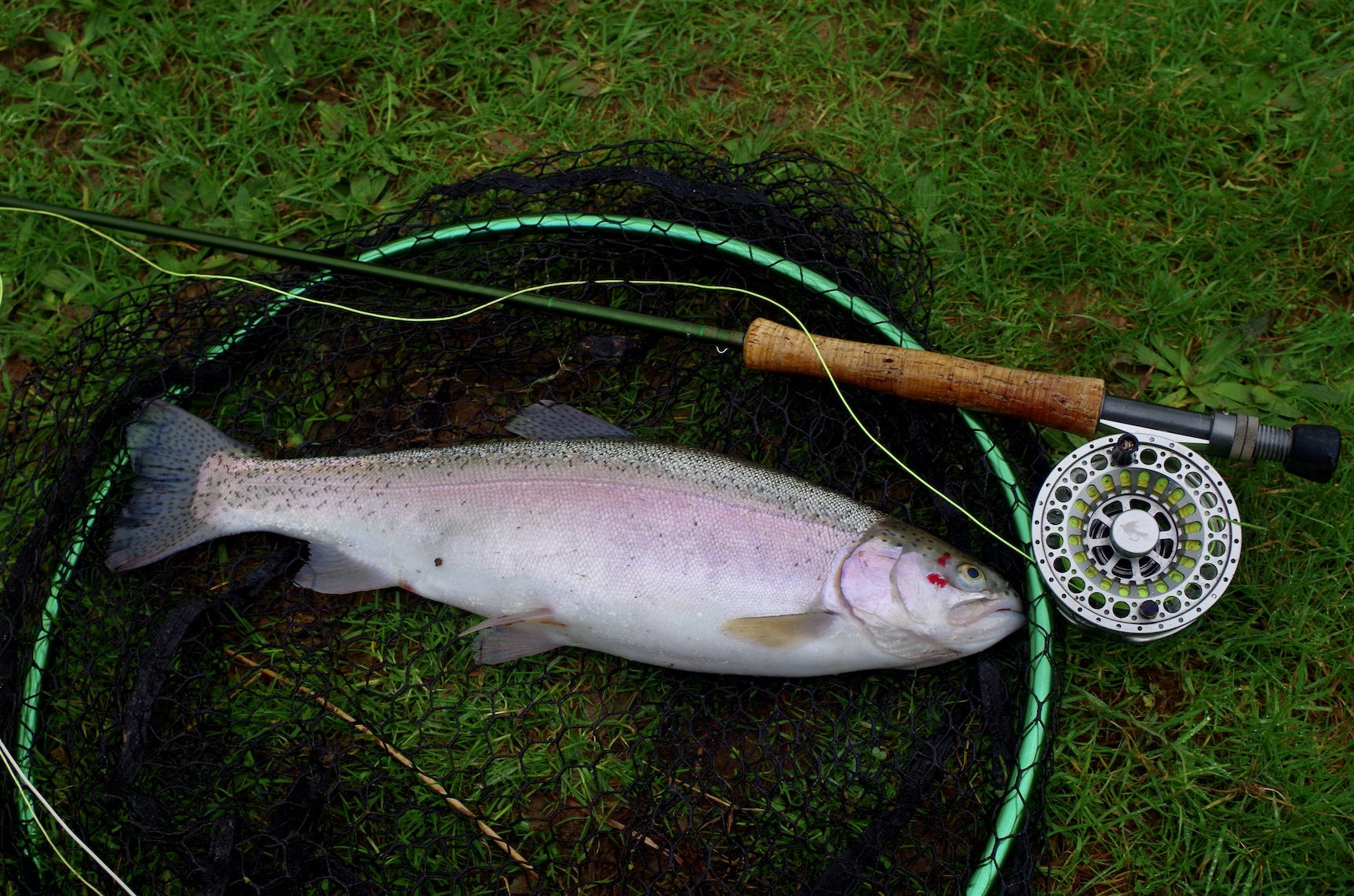
I fished on keenly expecting more action but after half an hour I had received no more enquiries. I glimpsed a few trout moving close to the surface and changed tactics tying on a damsel booby with longish marabou tail. After a couple of cast’s, I watched as a good trout converged on the fly. A beautiful rainbow of close to four pound.
I persisted with the booby for a short while losing what felt like a good trout after a few seconds of contact. With several fish moving close to the surface, I changed to a floating line and lost a fish on a team of buzzers. After a further twenty minutes I tied on the damsel again and after a couple of casts I hooked into another good rainbow to complete my three fish limit.
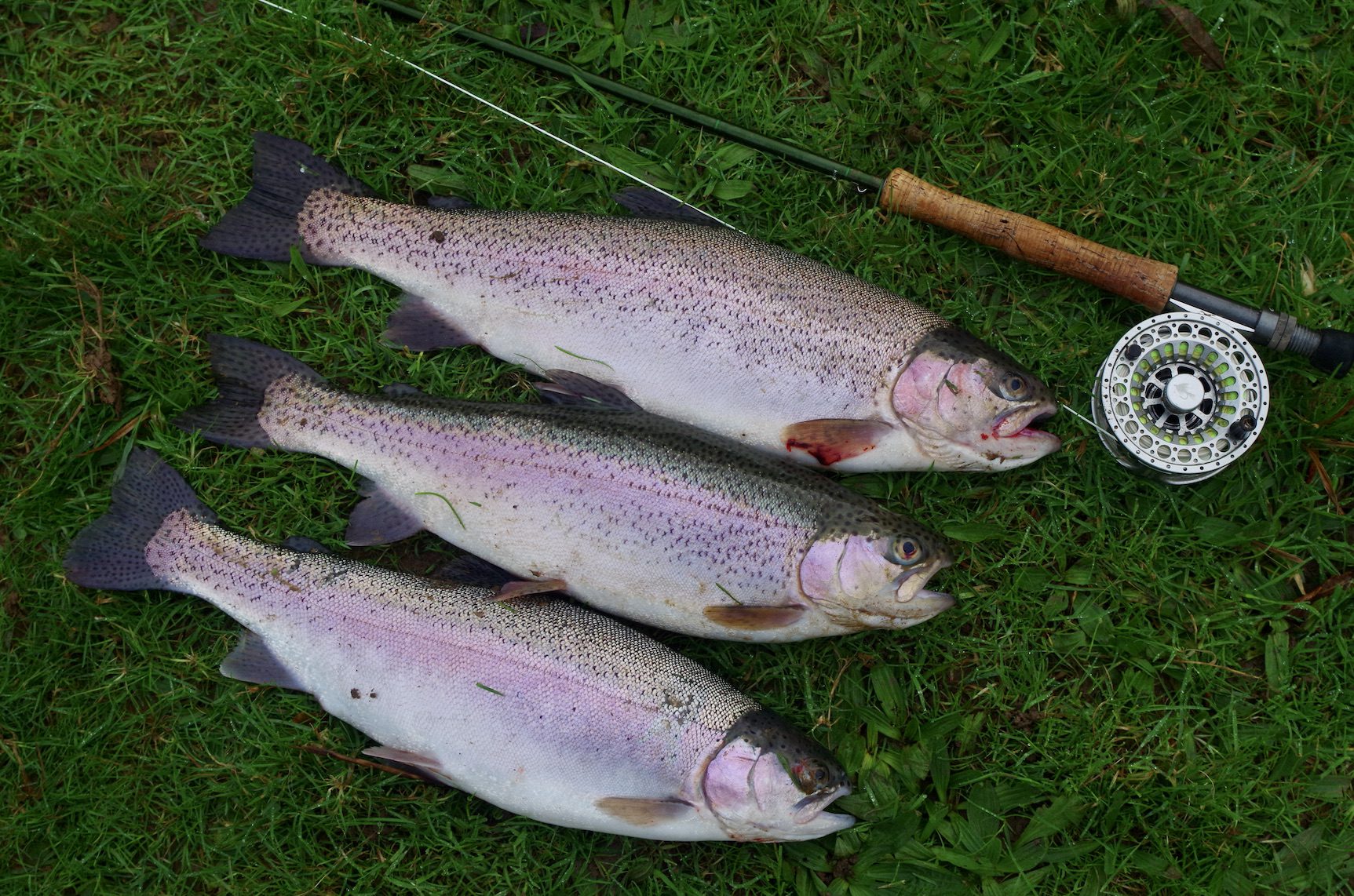

By now most members had completed their bag. Club secretary David Richards arrived late at 1.00pm due to work commitments. This proved to be no disadvantage as his first cast produced the biggest fish of the day a well proportioned rainbow of 4lb 14oz. Within fifteen minutes David had completed his three fish limit and won the competition with 13lb 5oz.
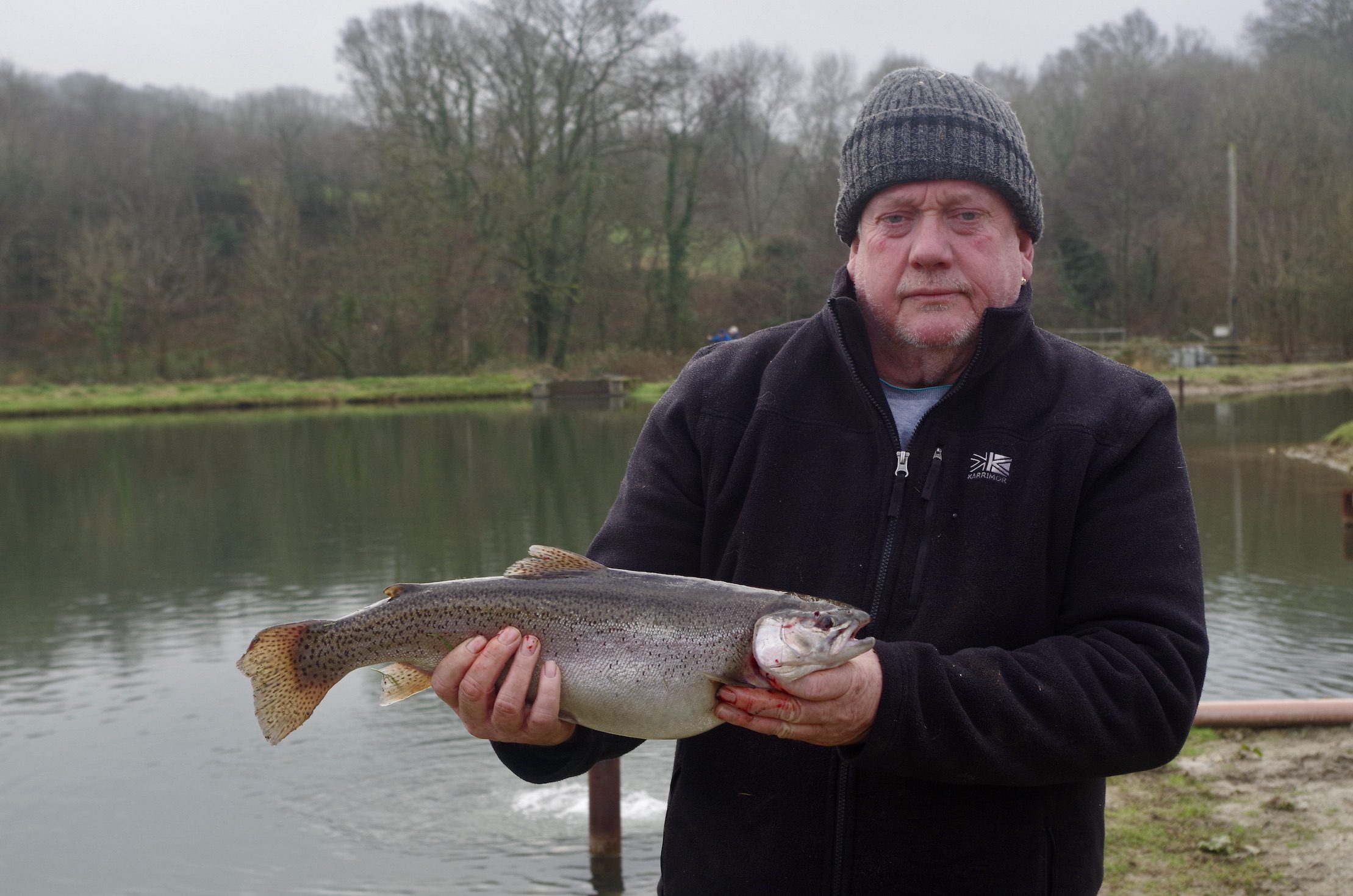
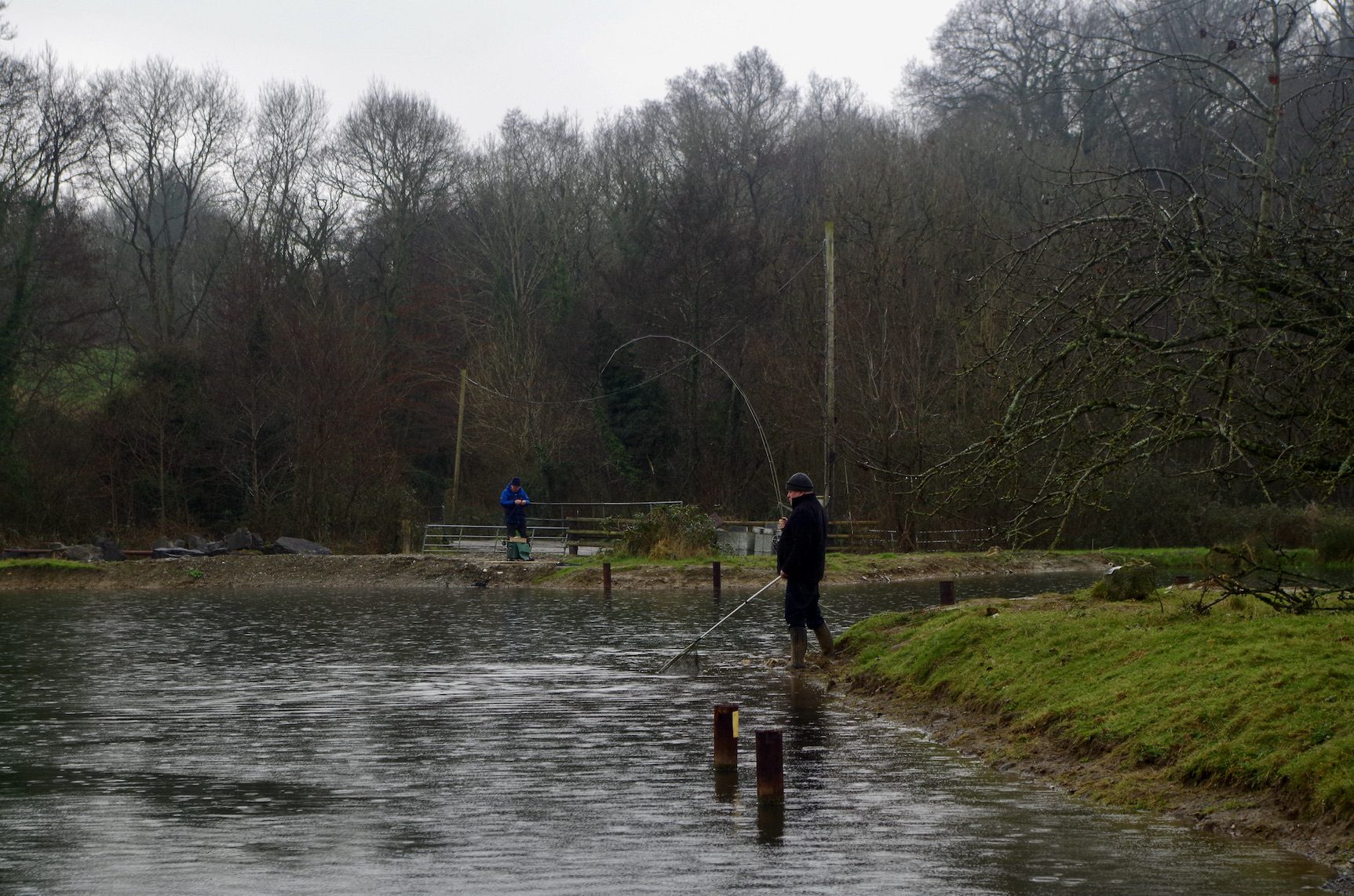
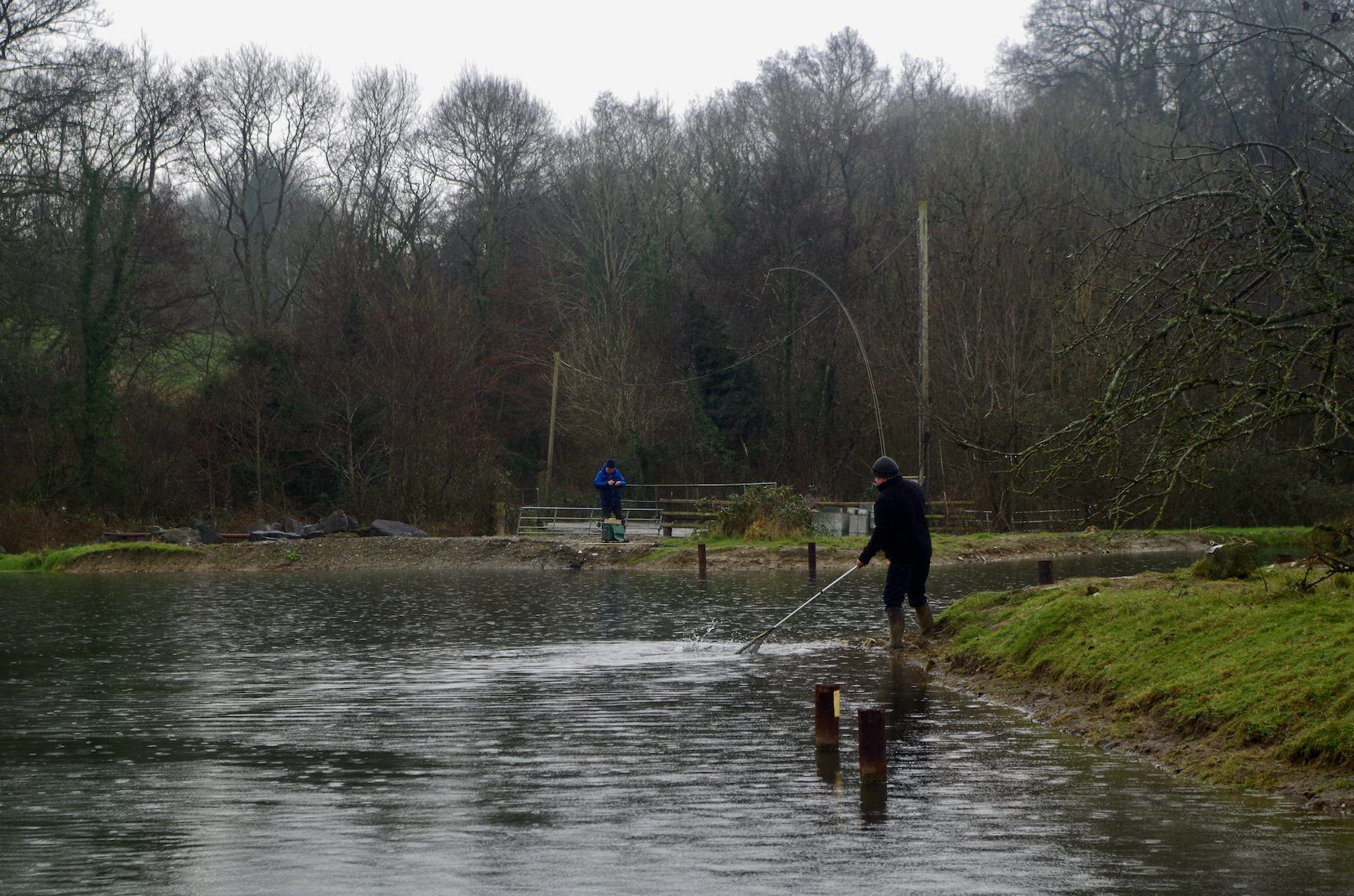
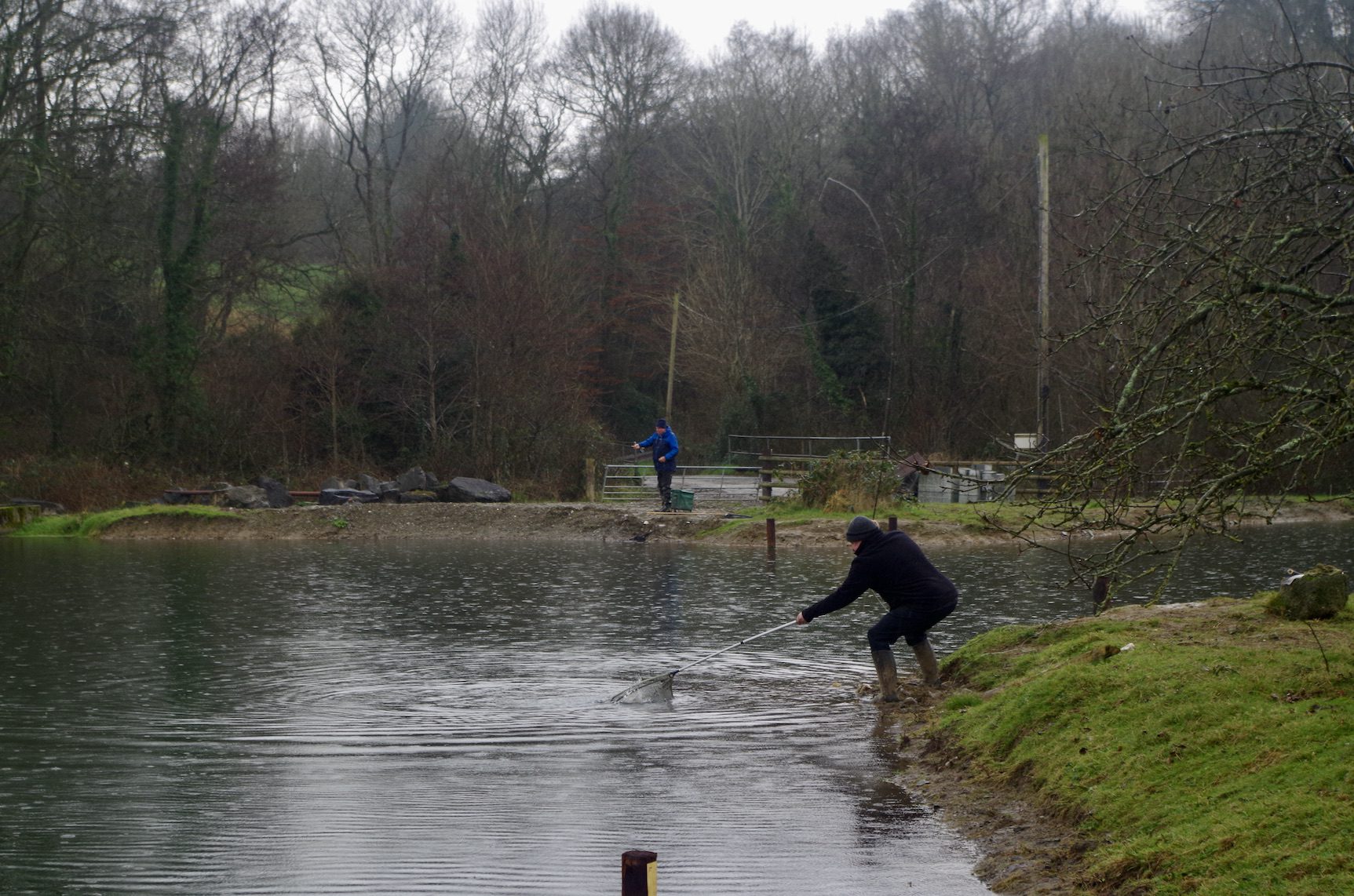
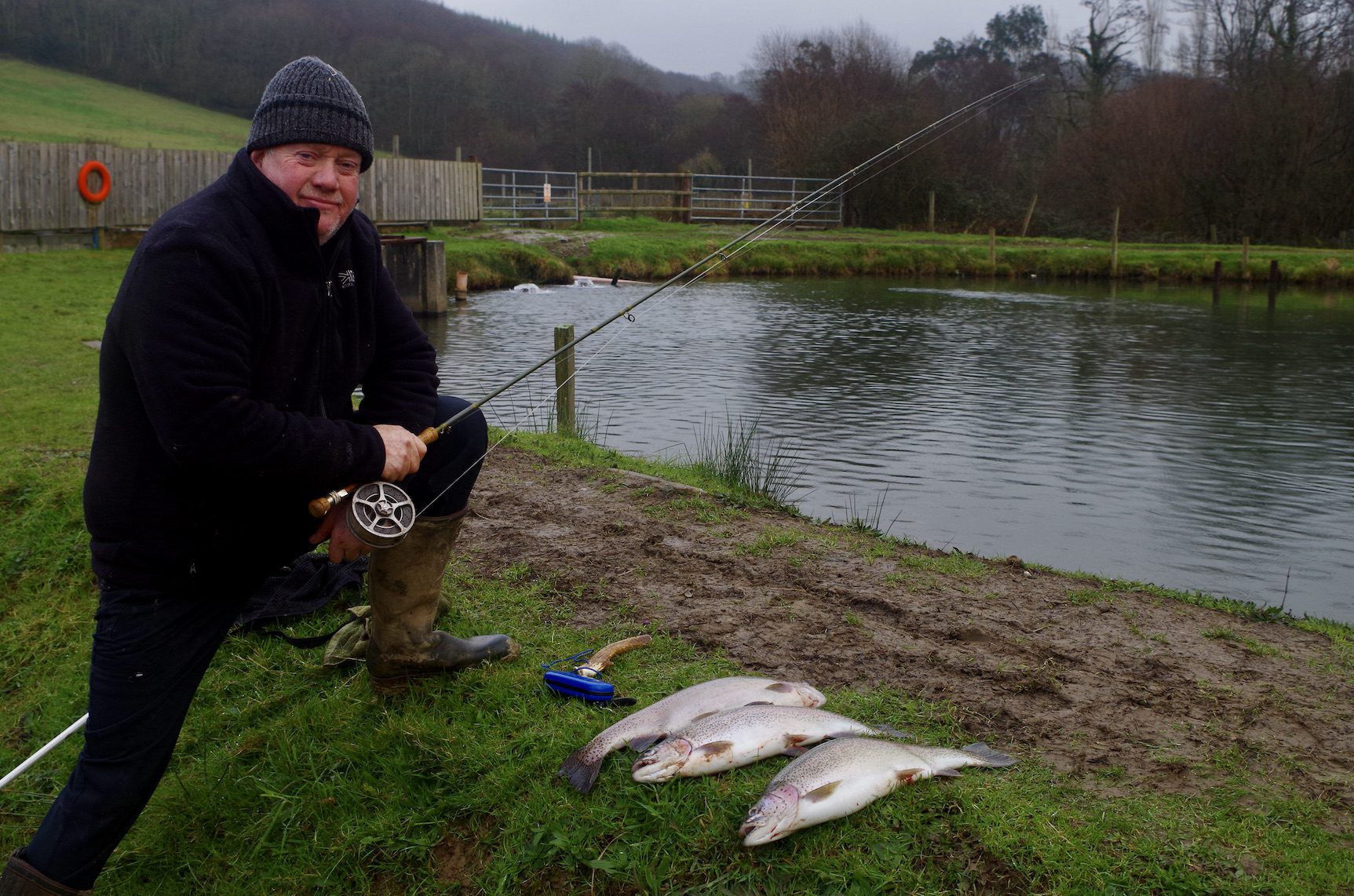
It had been a good morning with the fish proving challenging enough to make the fishing interesting. It is far better when you have to work a bit to catch the days bag.
Full Results
1st David Richards – 13lb 5oz
2nd David Eldred = 10lb 7oz
3rd Wayne Thomas – 9lb 13oz
4th Dave Mock – 9lb 8oz
5th Andre Muxworthy – 9lb 7oz
6th – Colin Combe 8lb
7th Nigel Bird 7lb 14oz
All caught 3 fish
